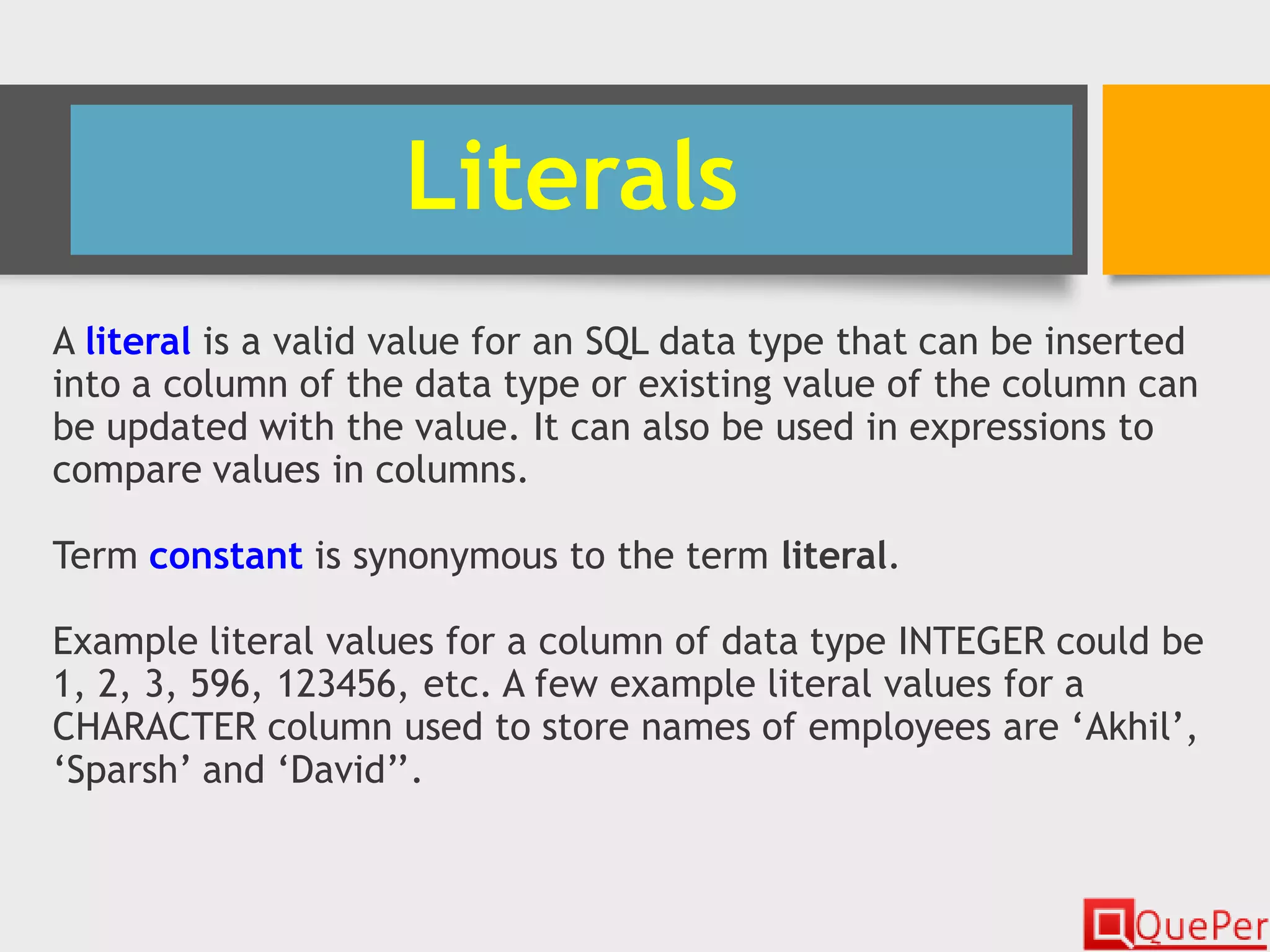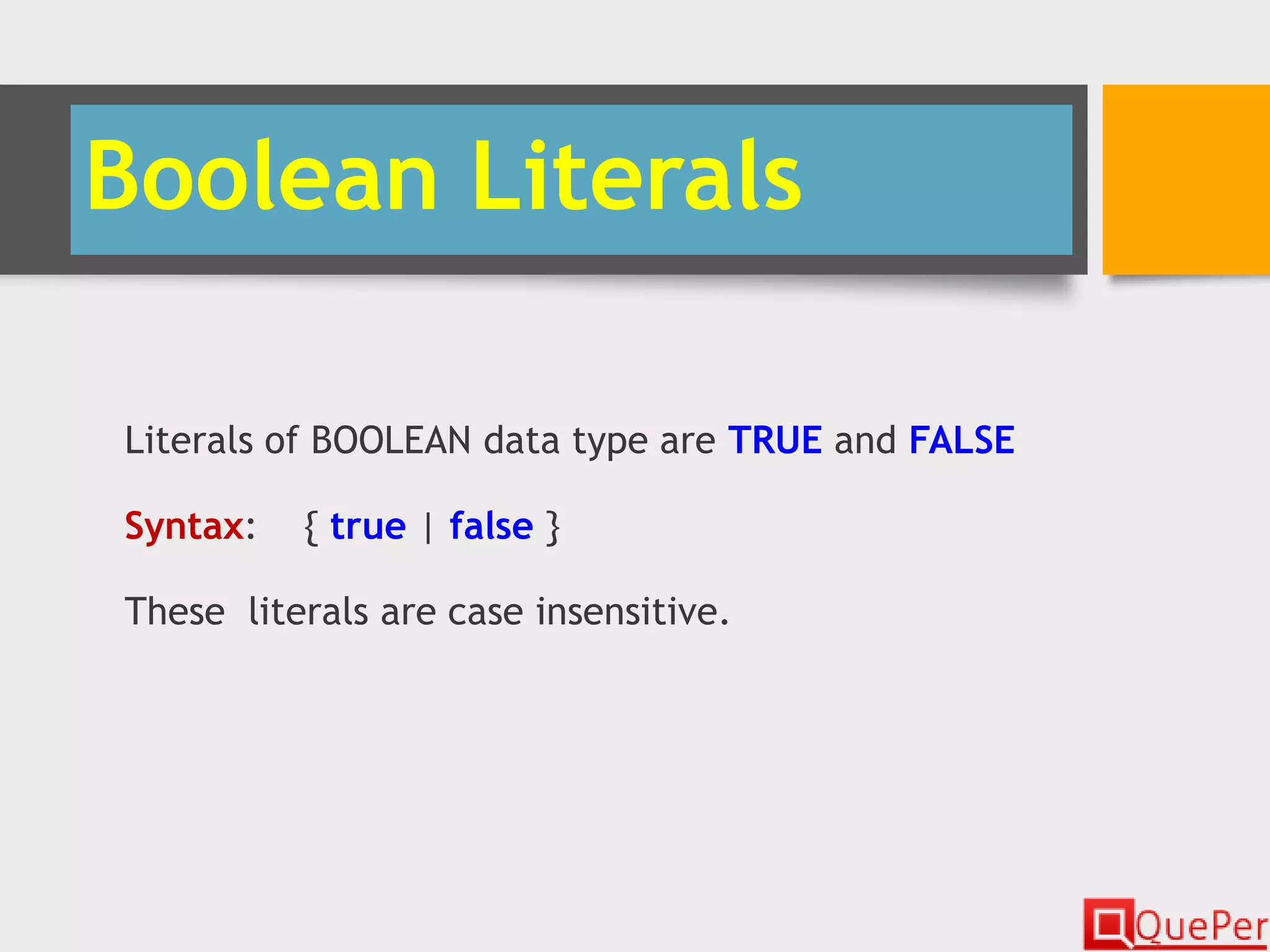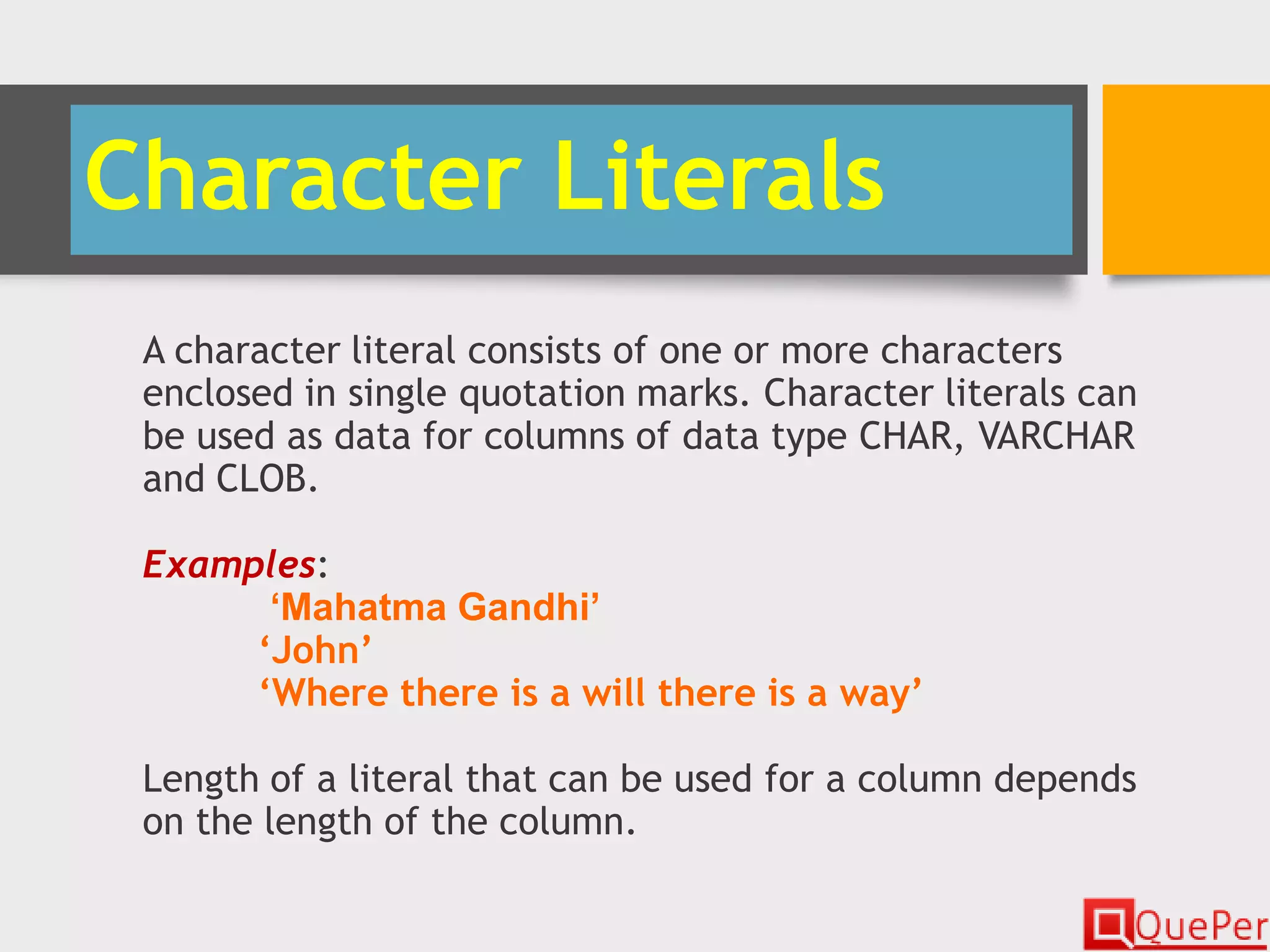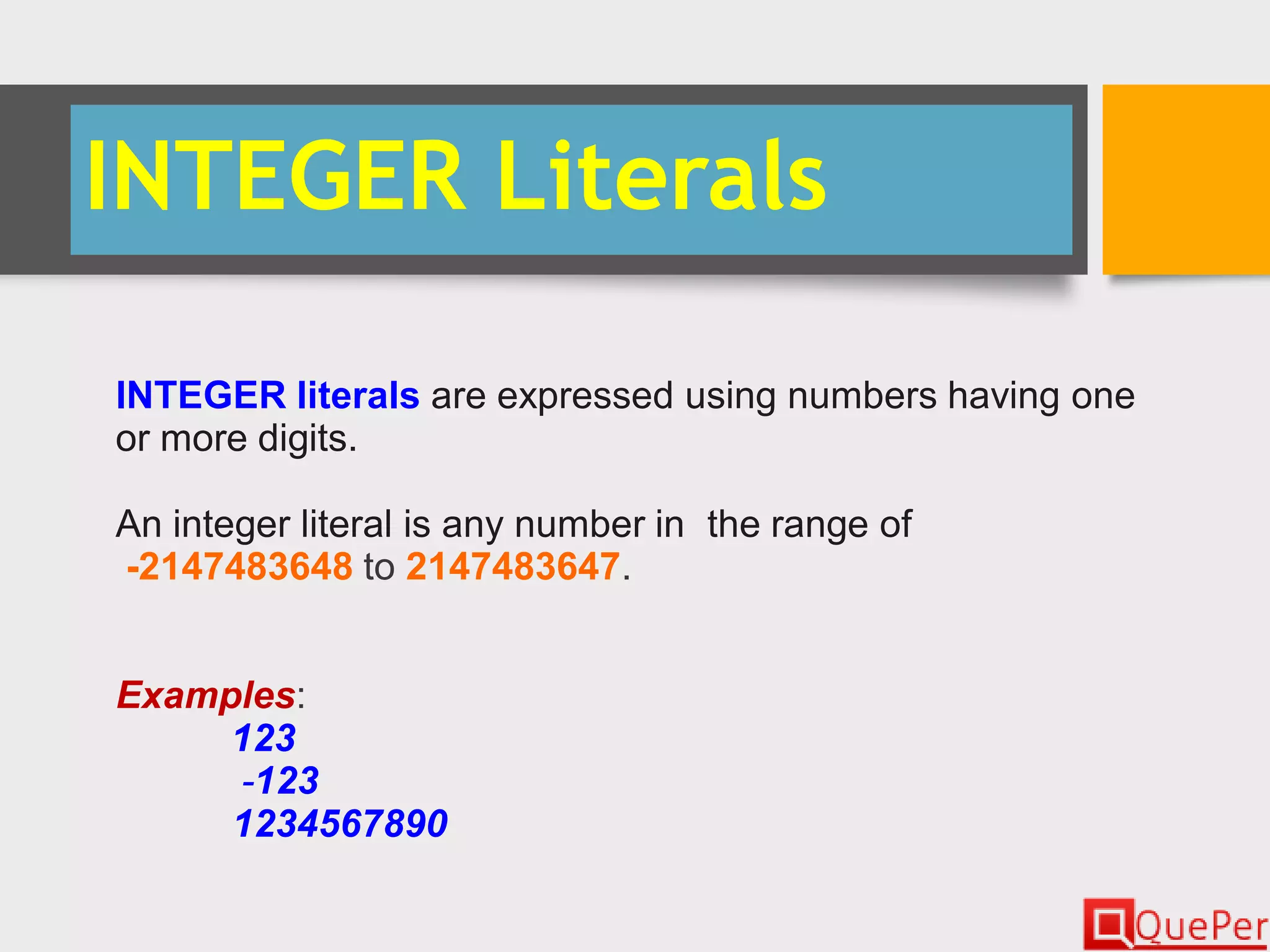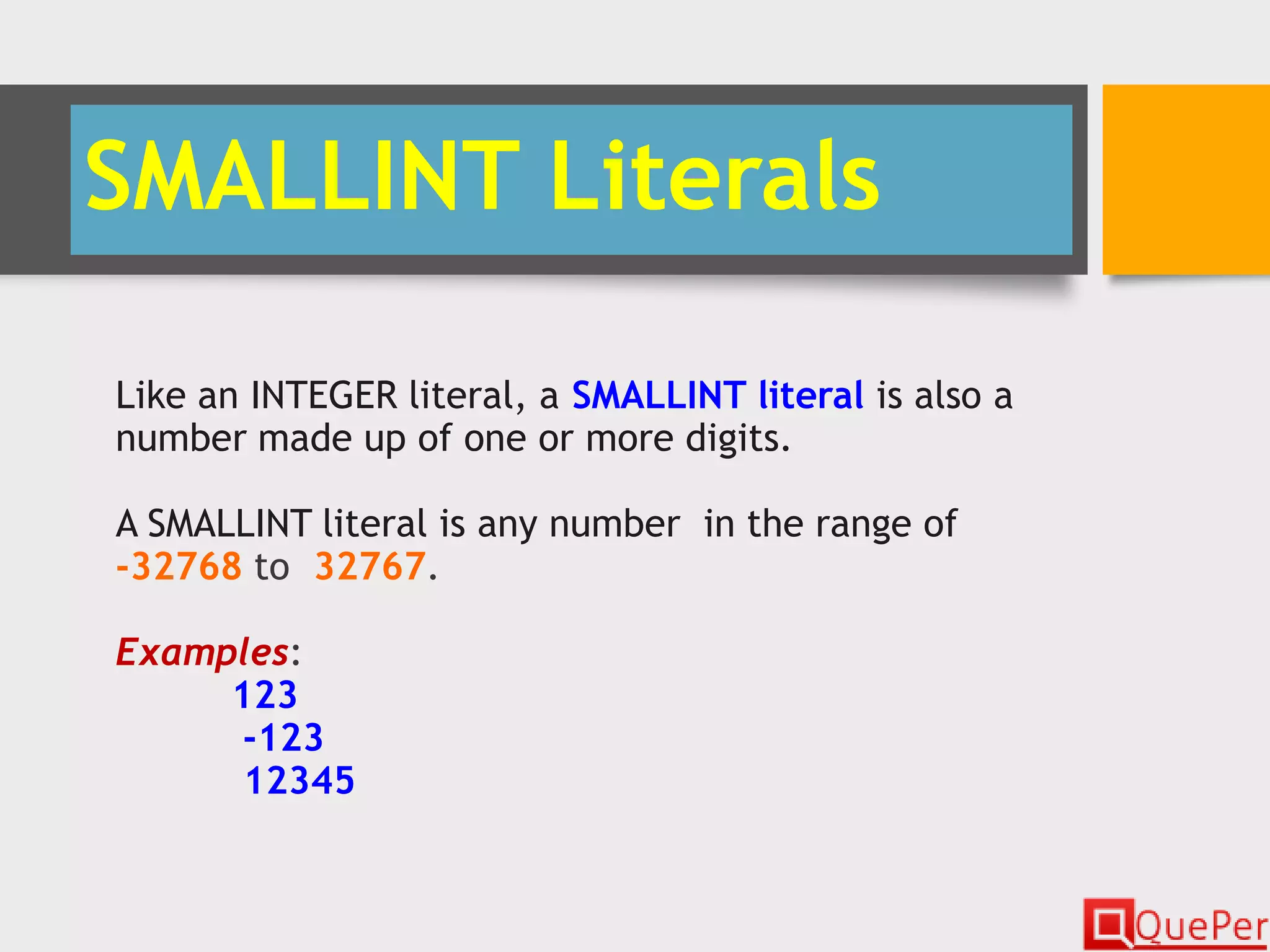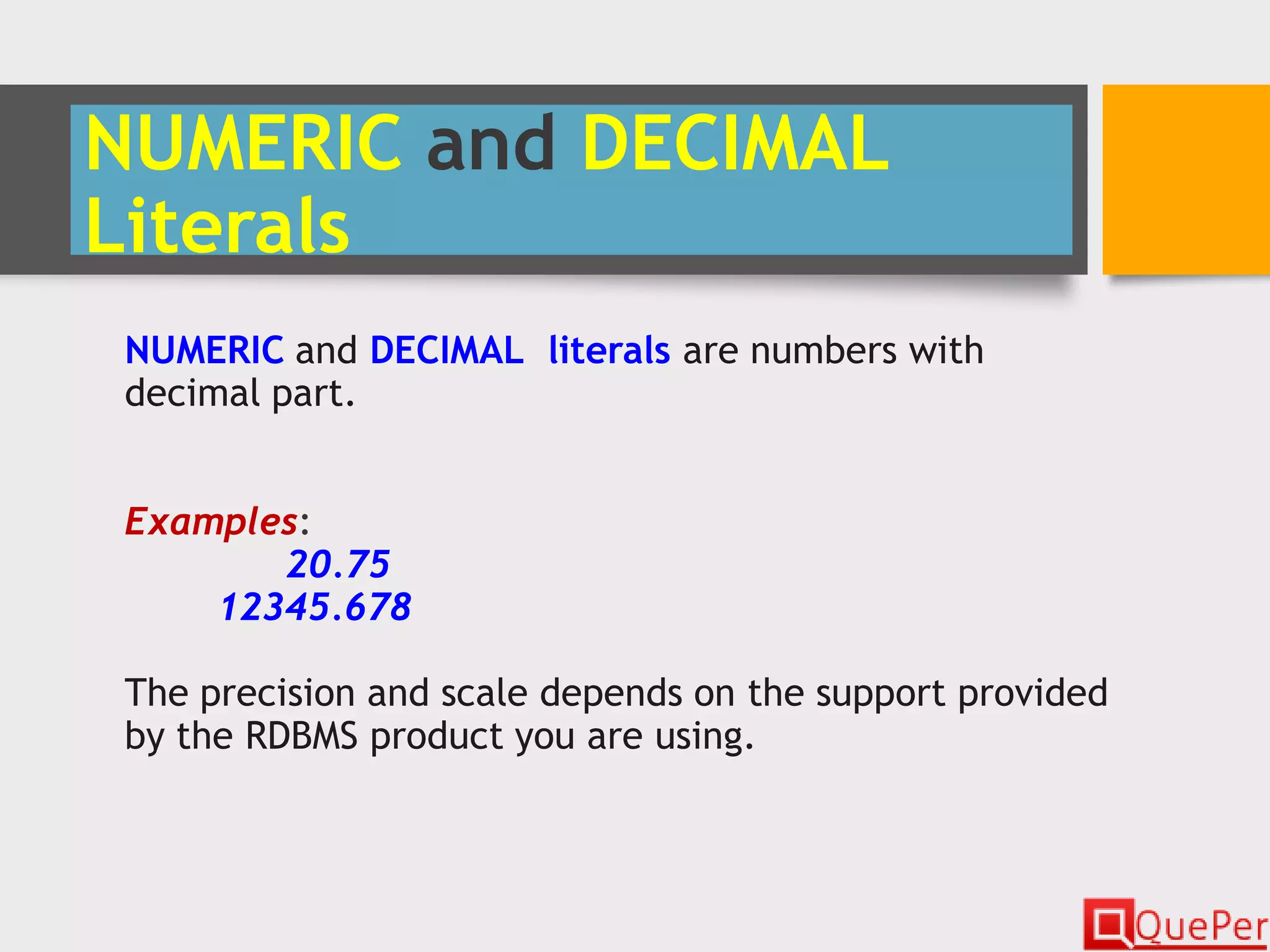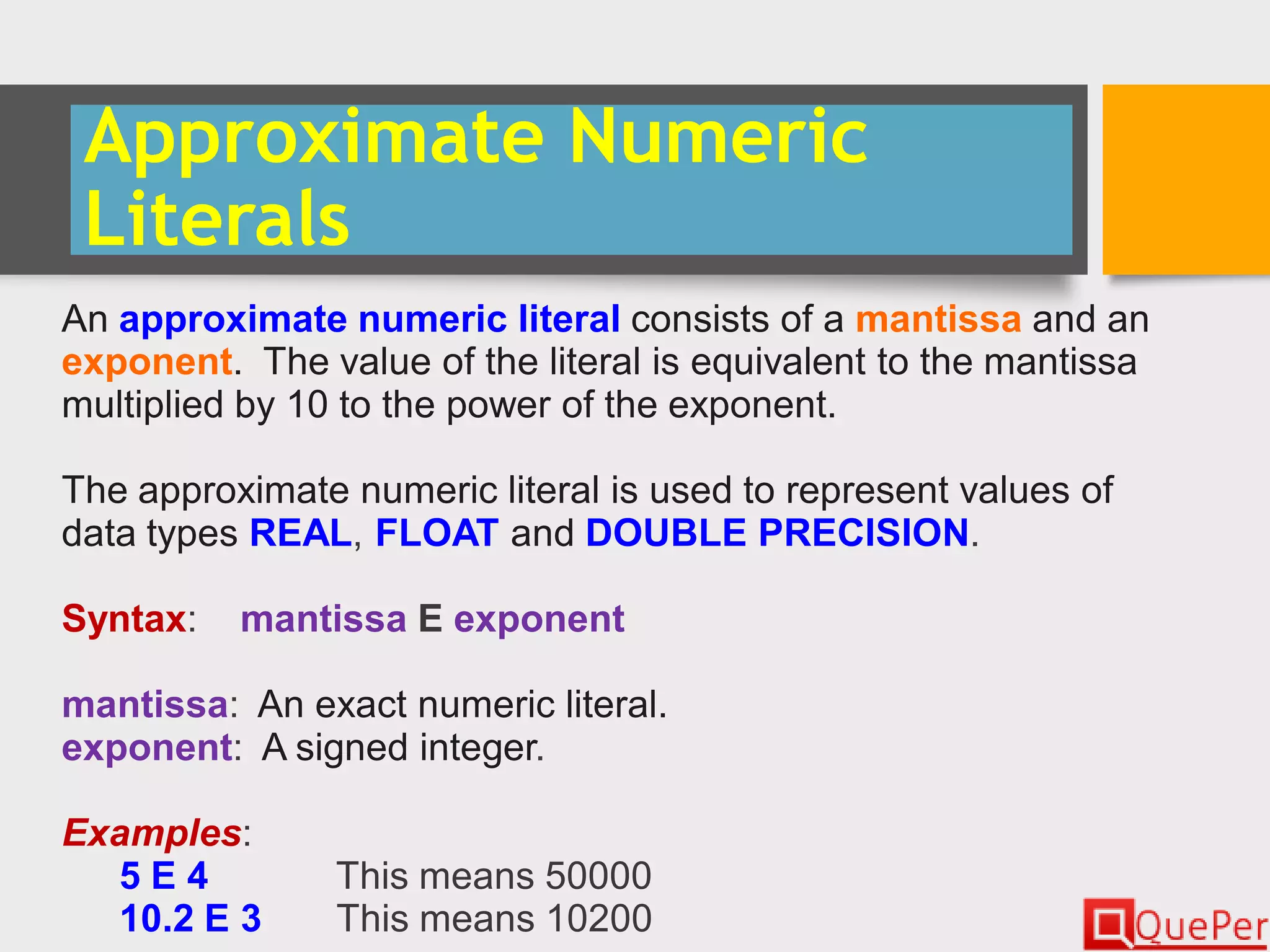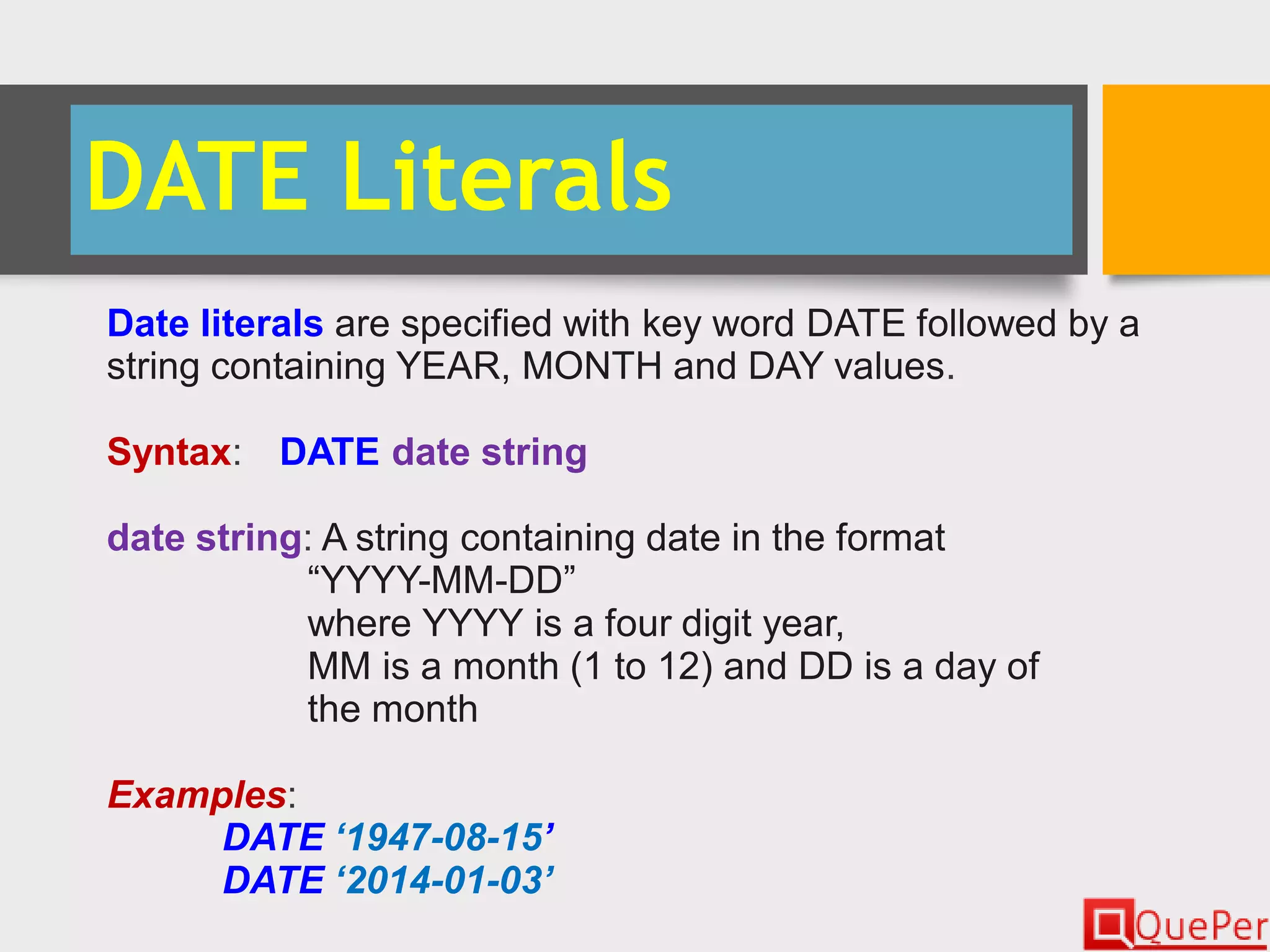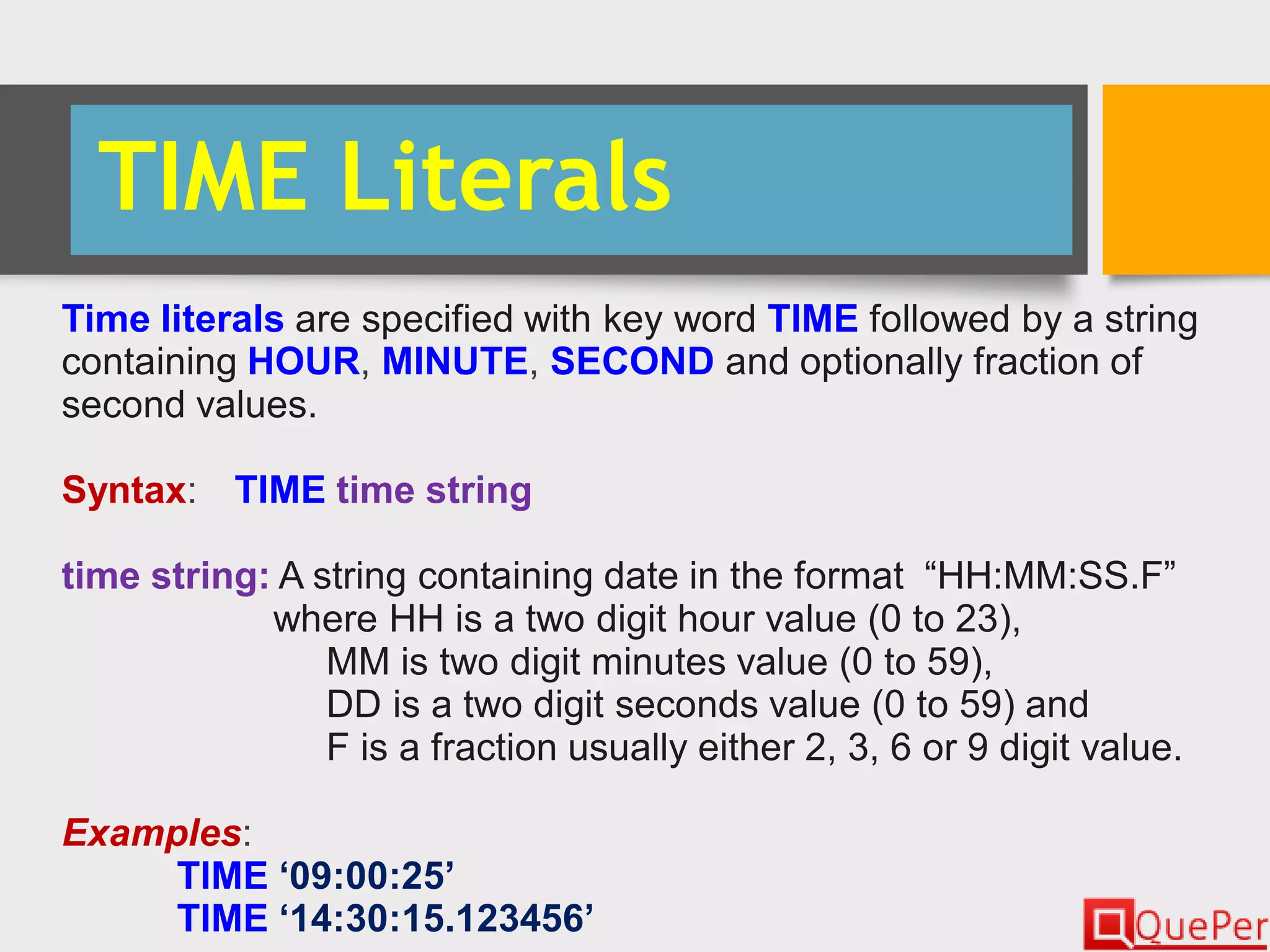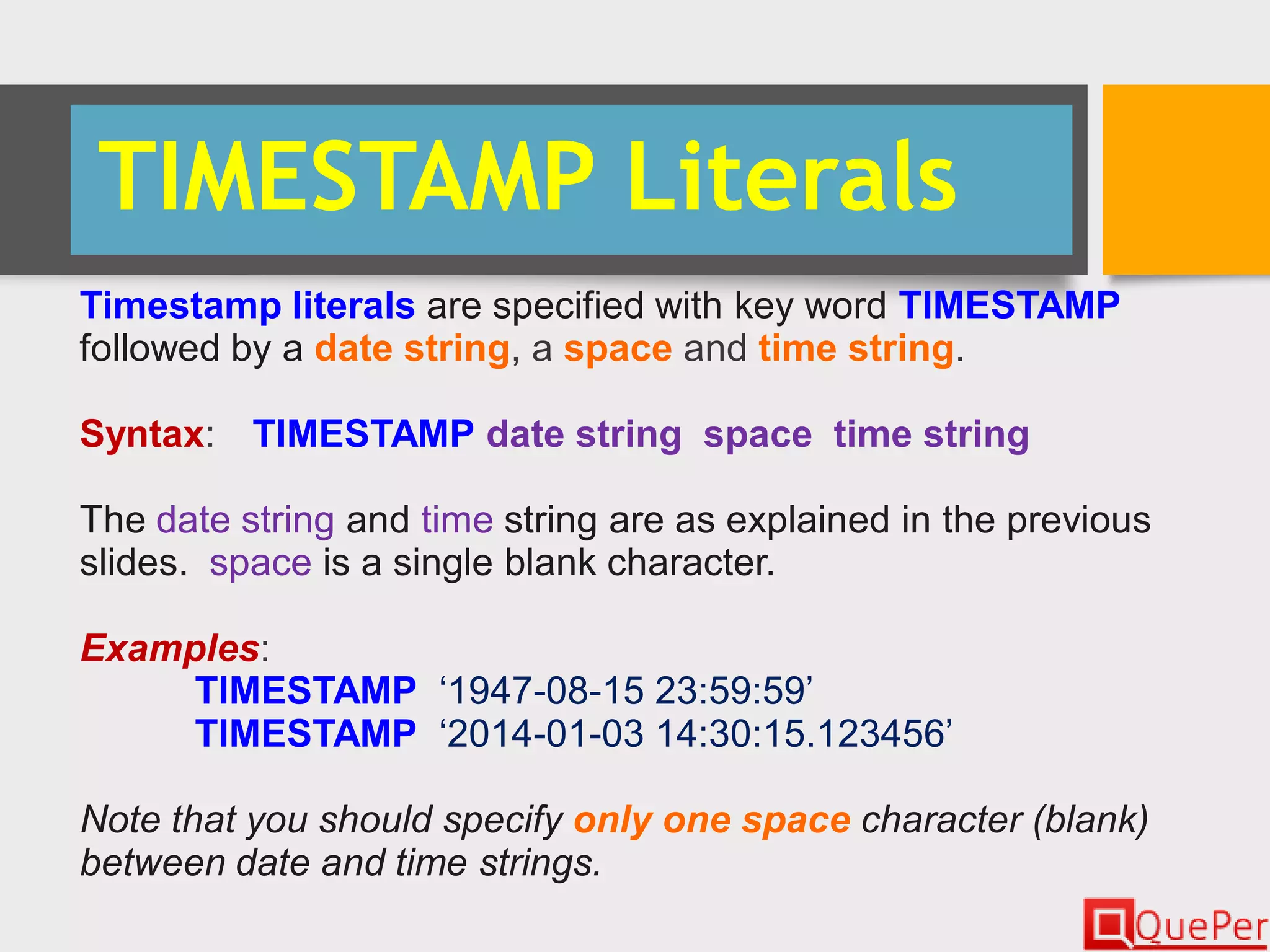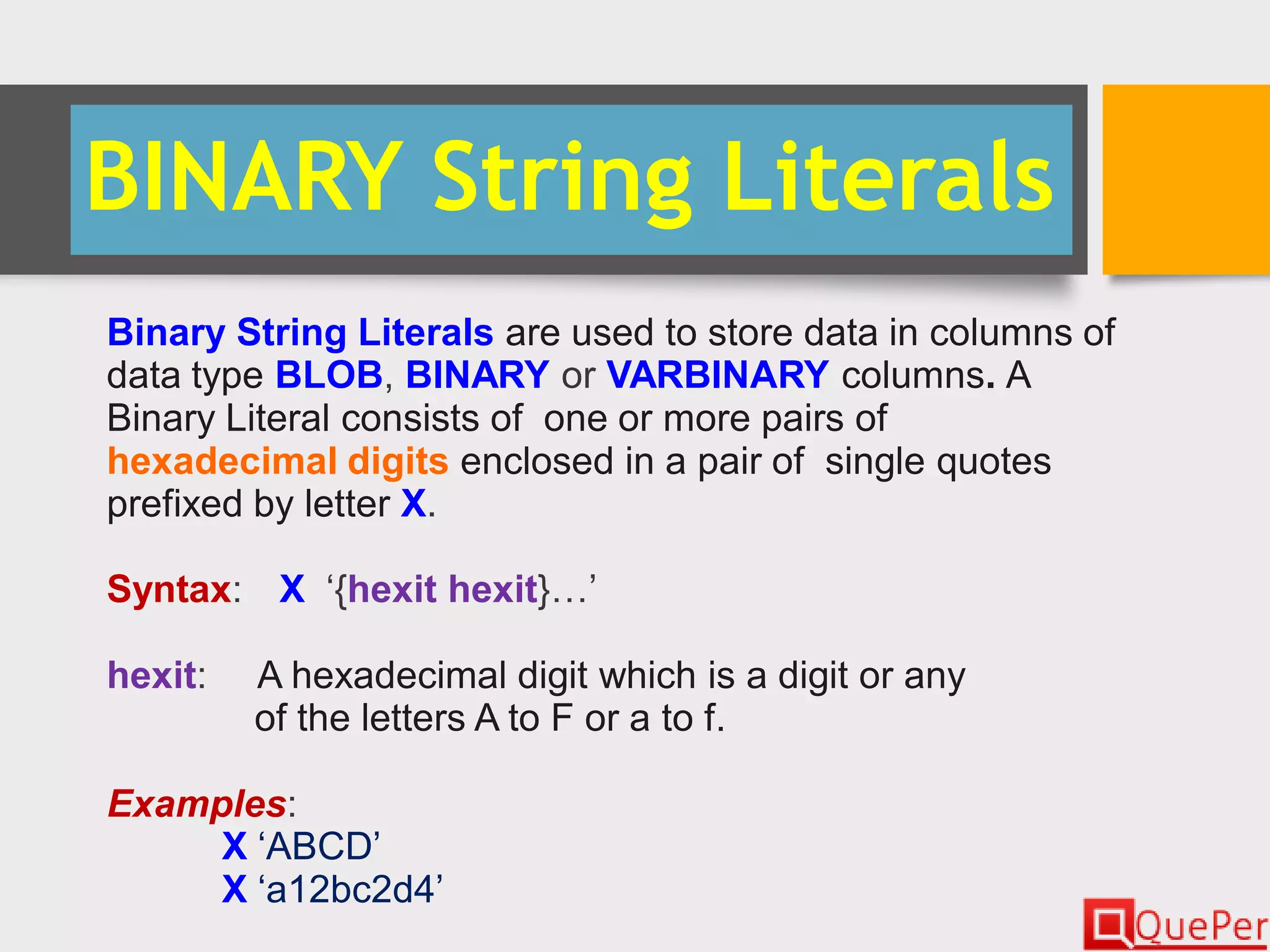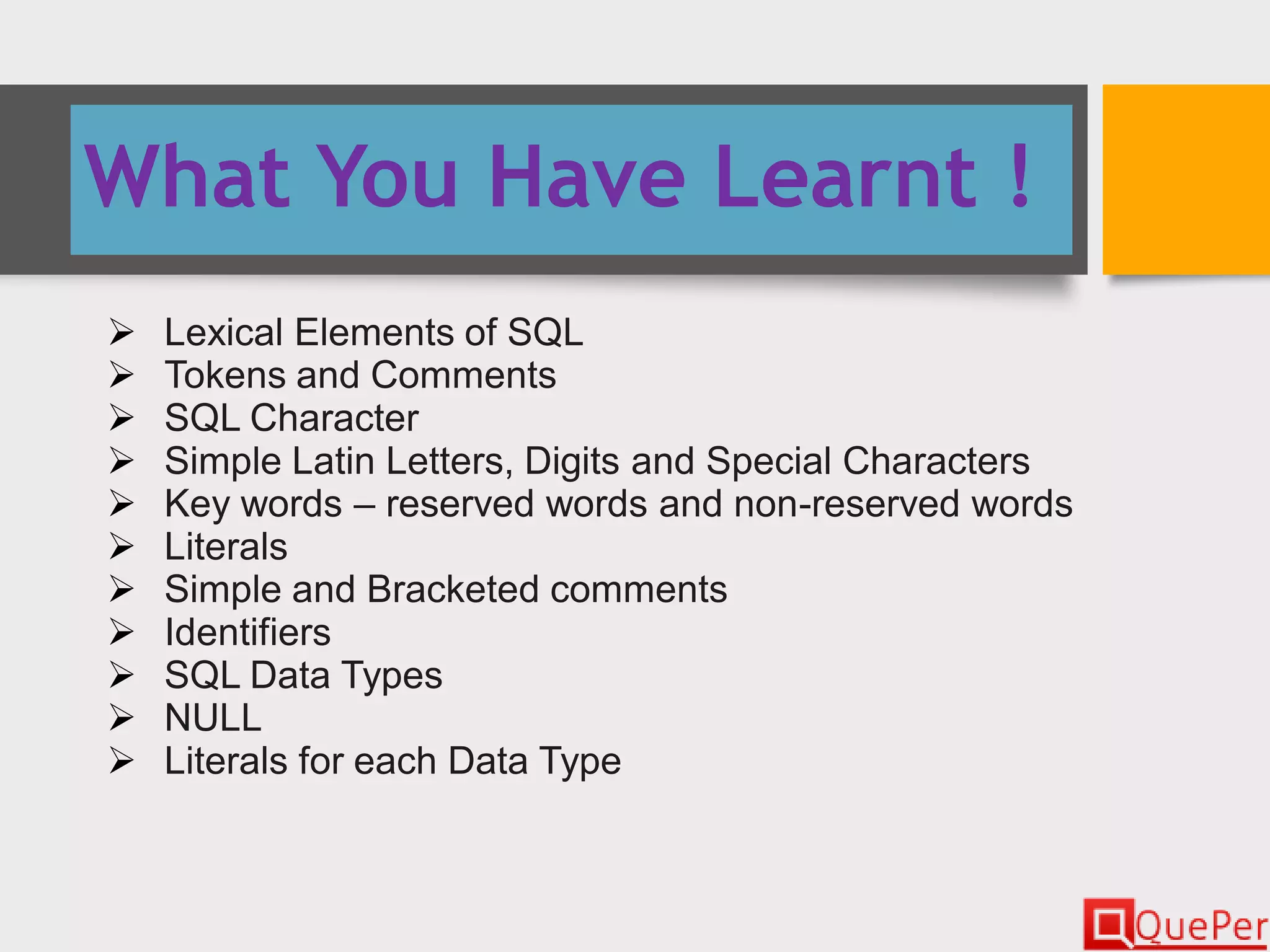The document provides an overview of SQL (Structured Query Language), including its importance as the primary language for relational database management systems and its widespread use in applications ranging from banking to telecom. It outlines the prerequisites for learning SQL, key topics in the course, and details various SQL statements categorized as DDL, DML, and DCL. Additionally, it covers the basics of setting up MySQL and fundamental concepts like data types, expressions, and identifiers relevant to SQL programming.

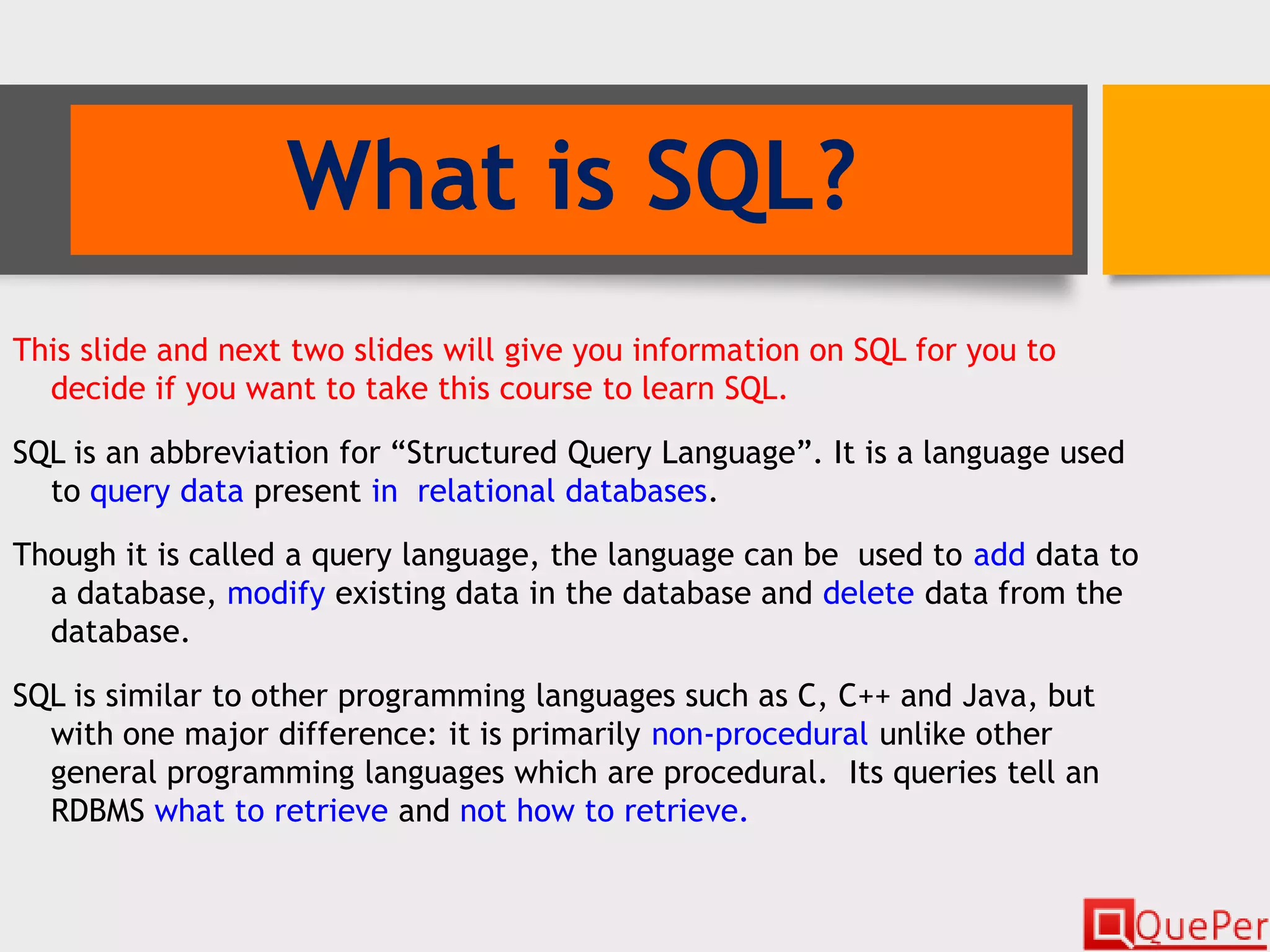
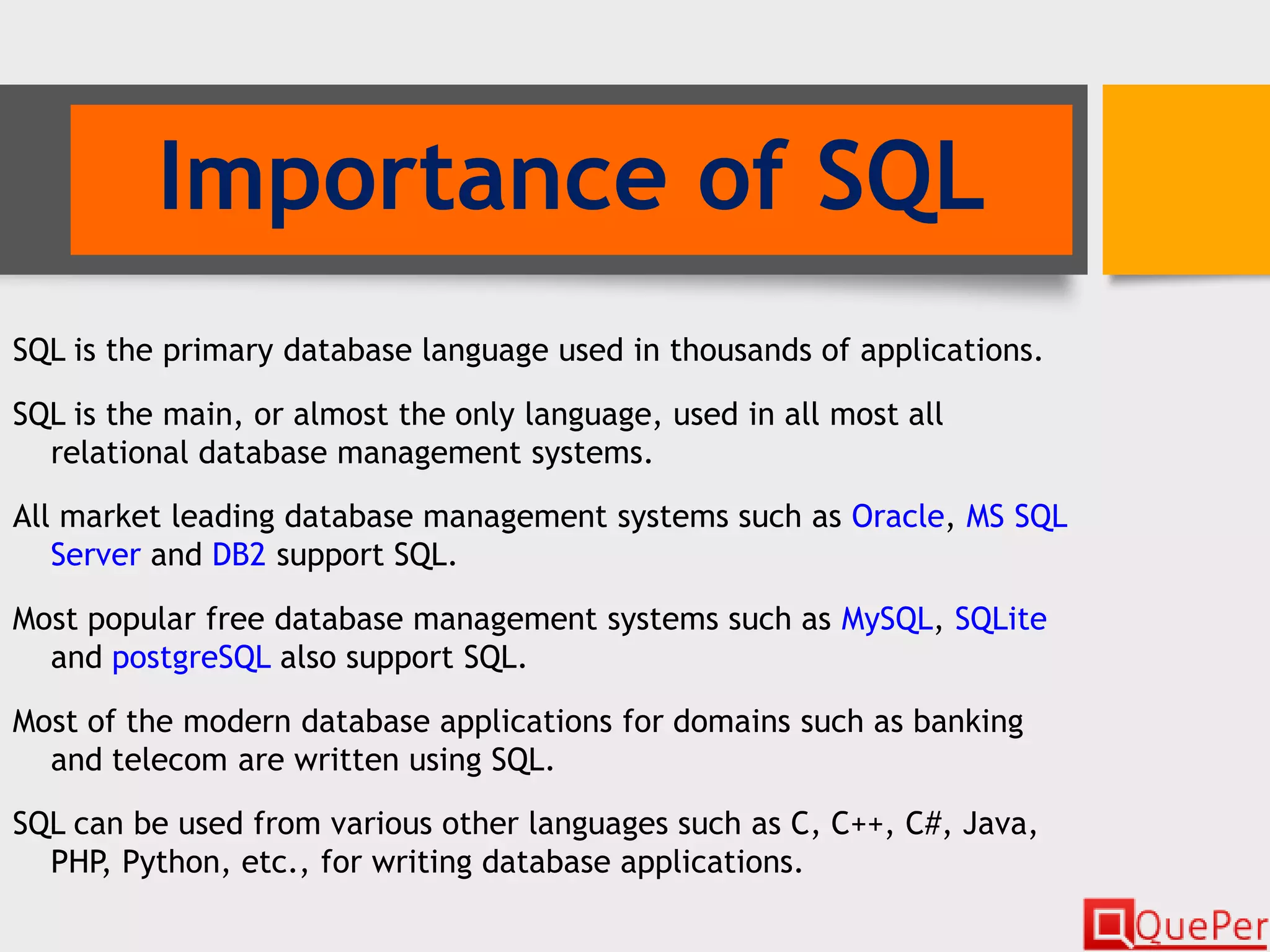
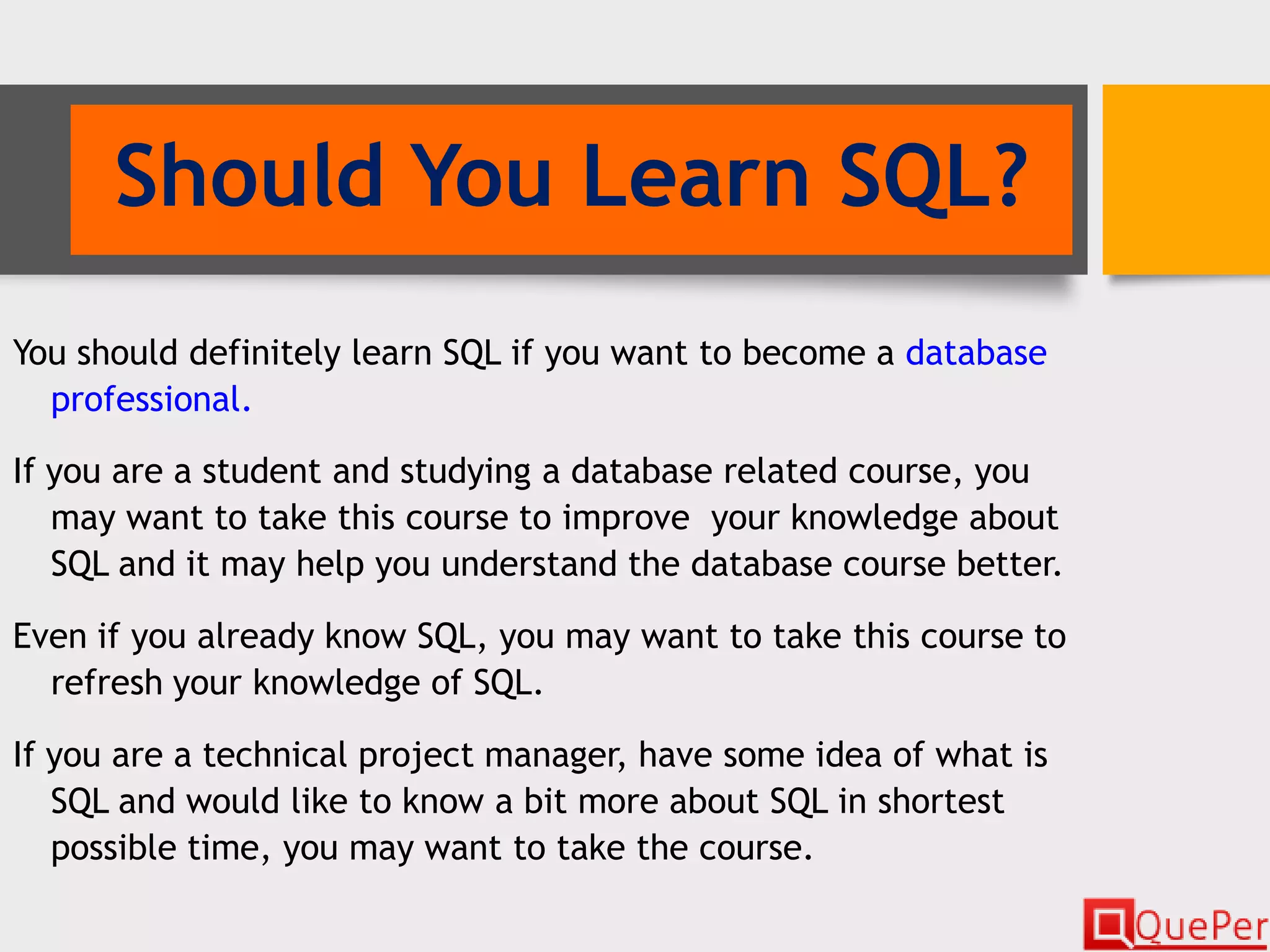
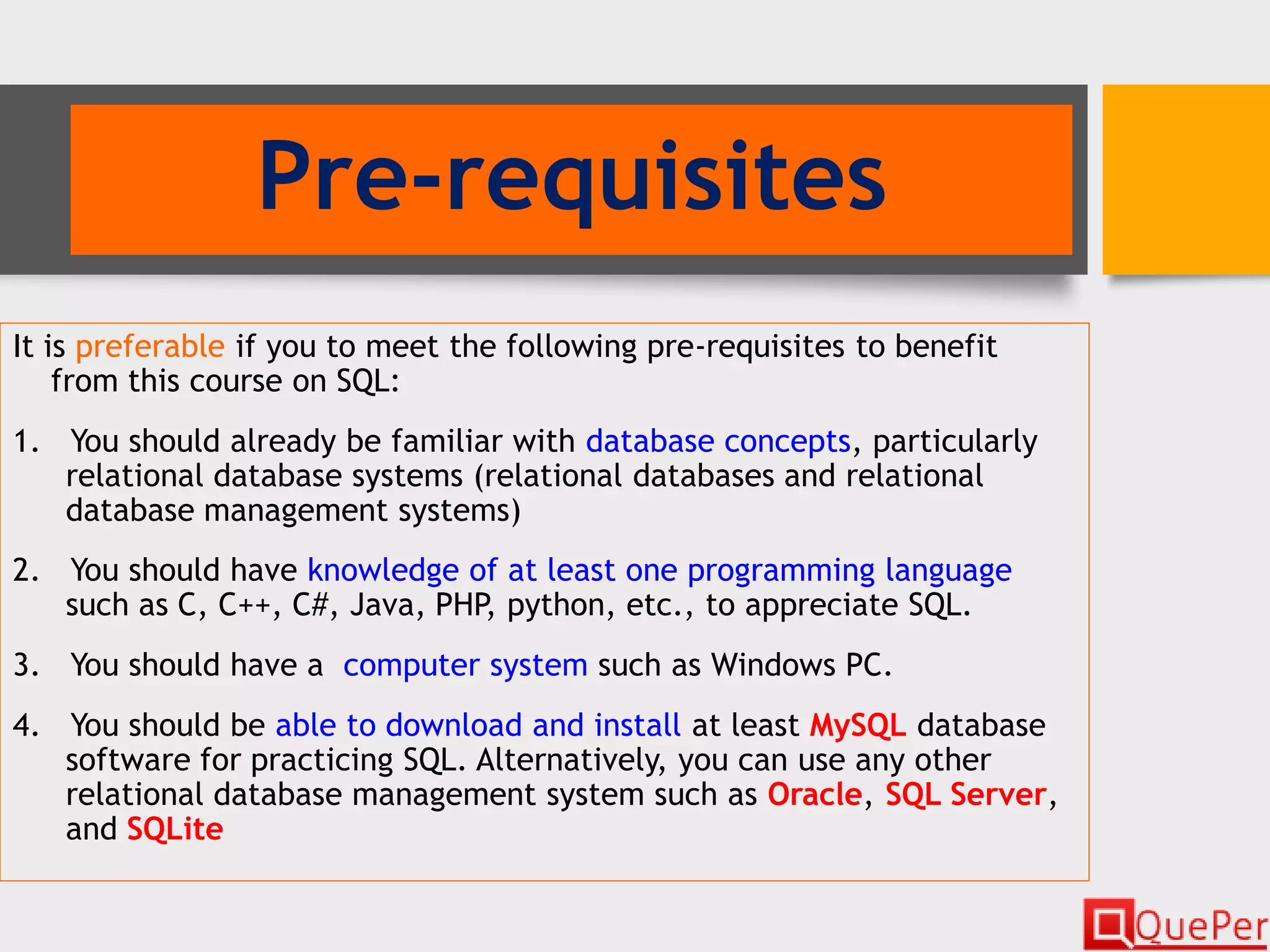
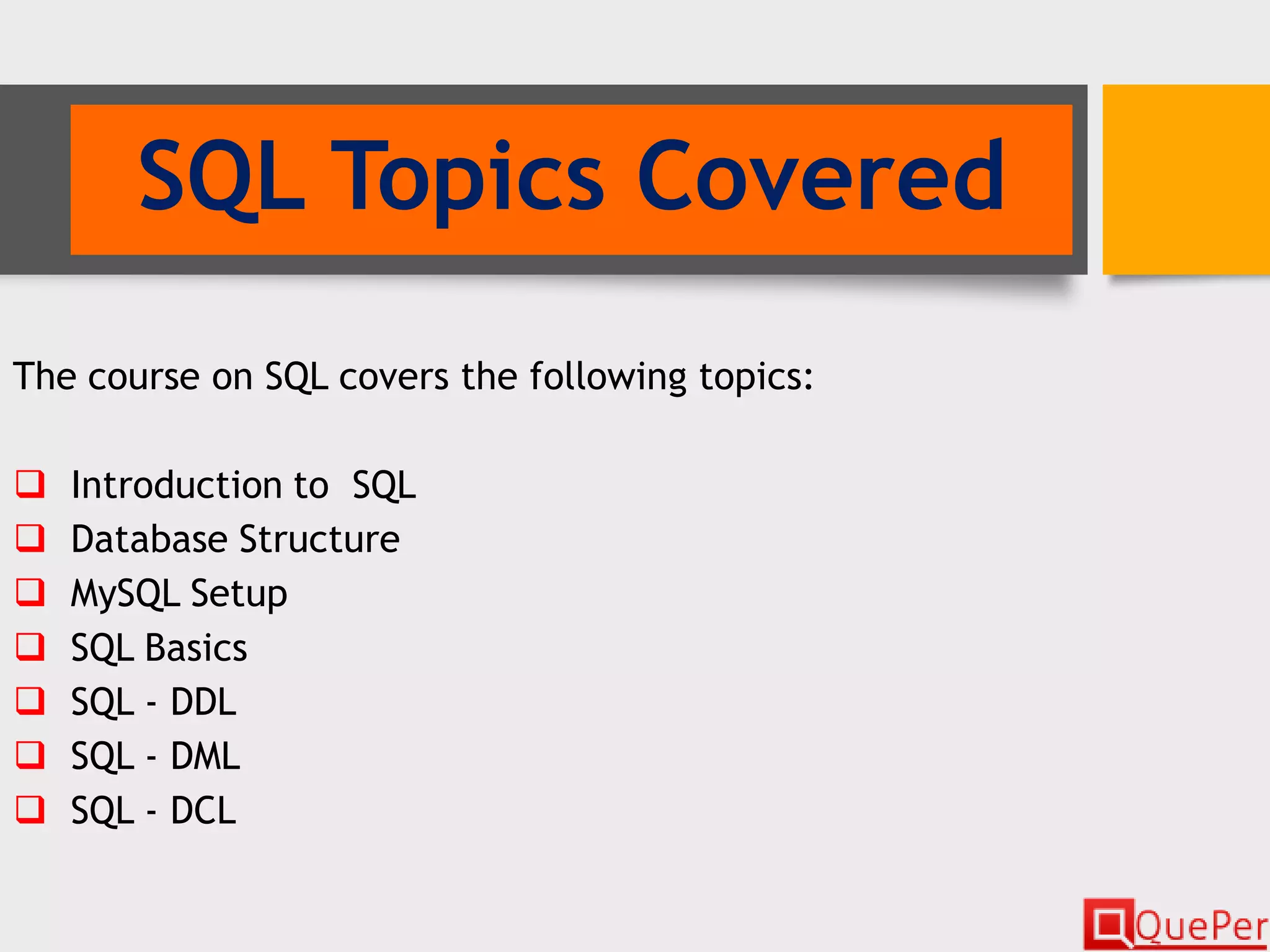
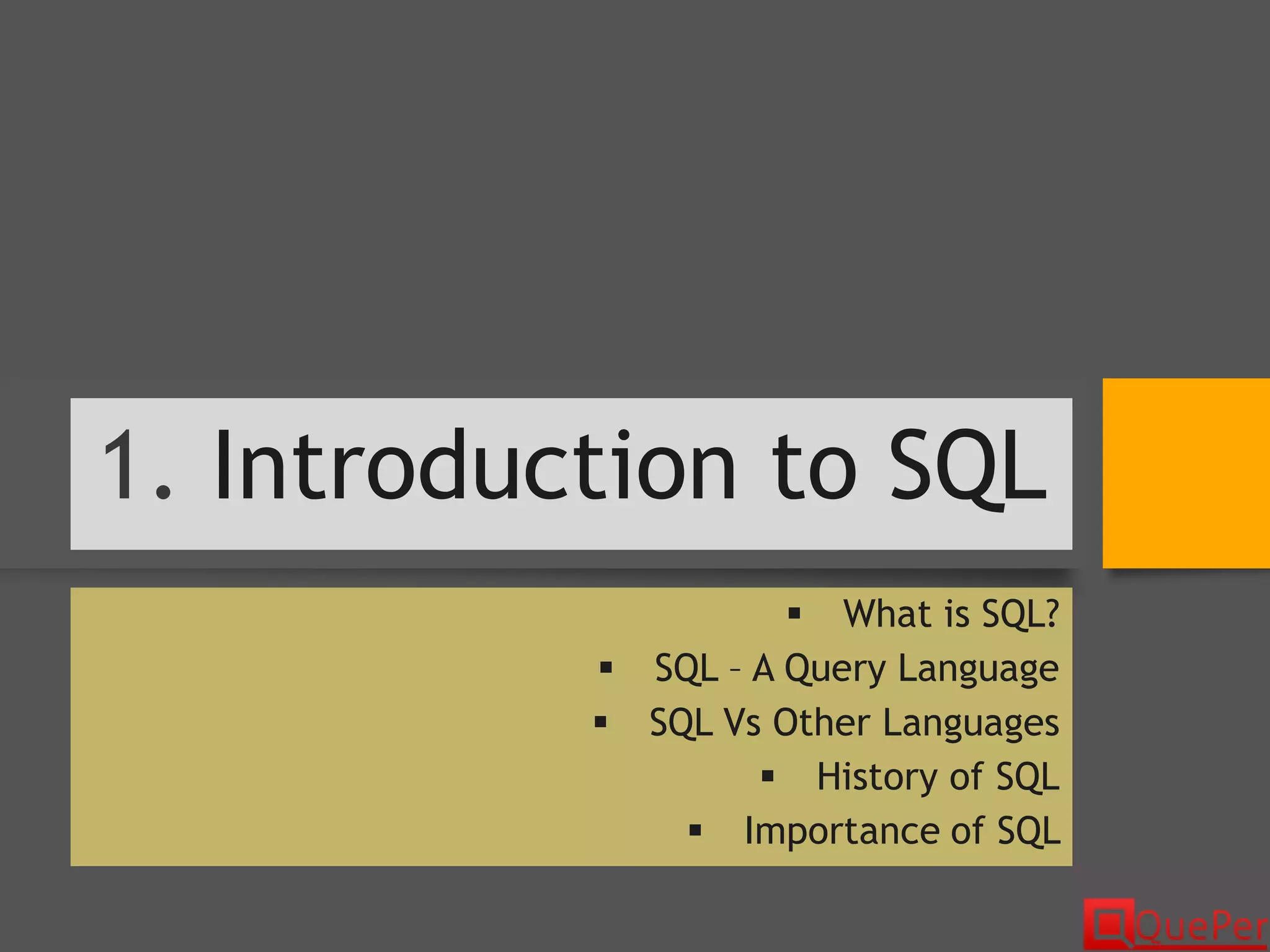
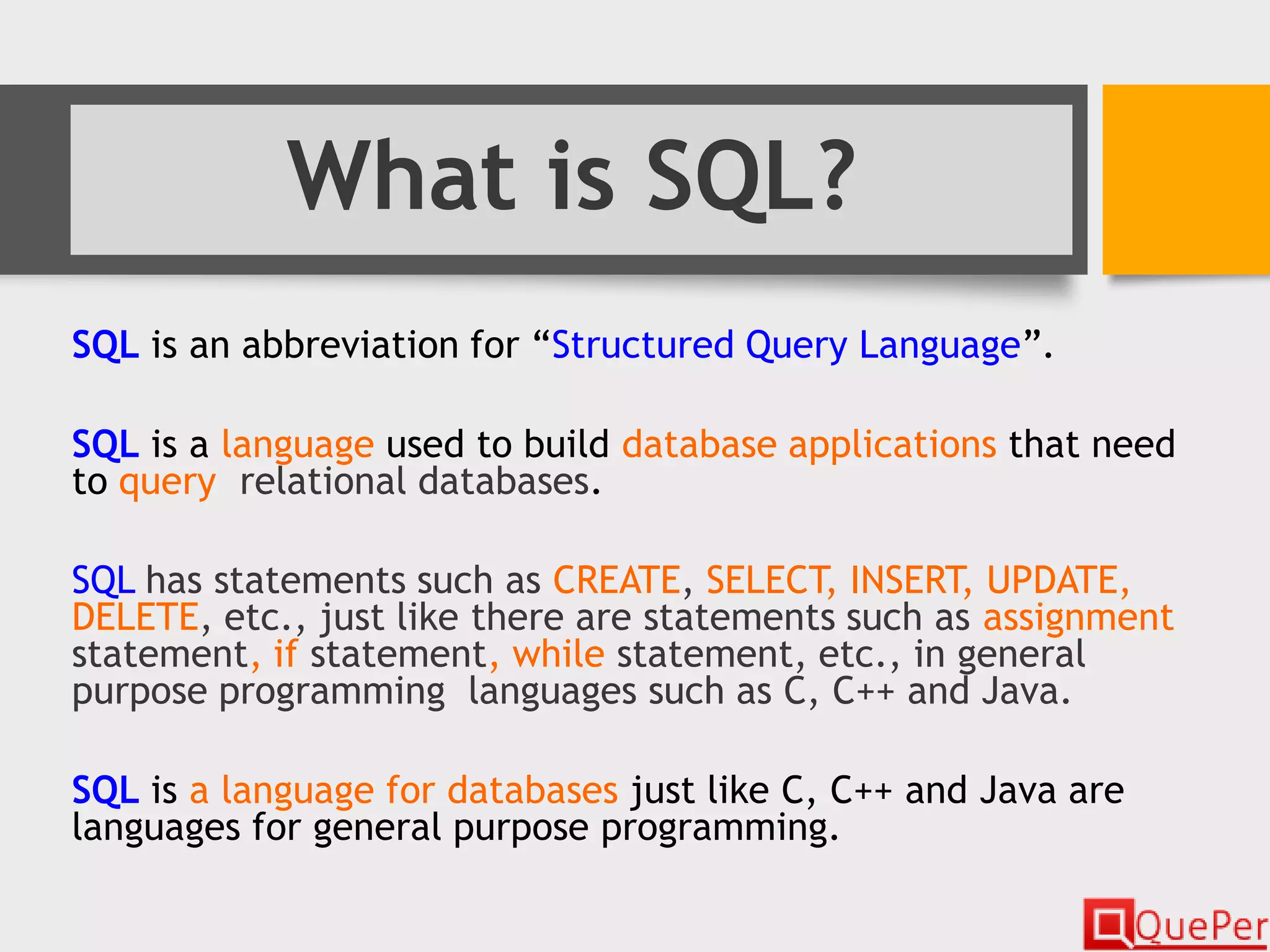
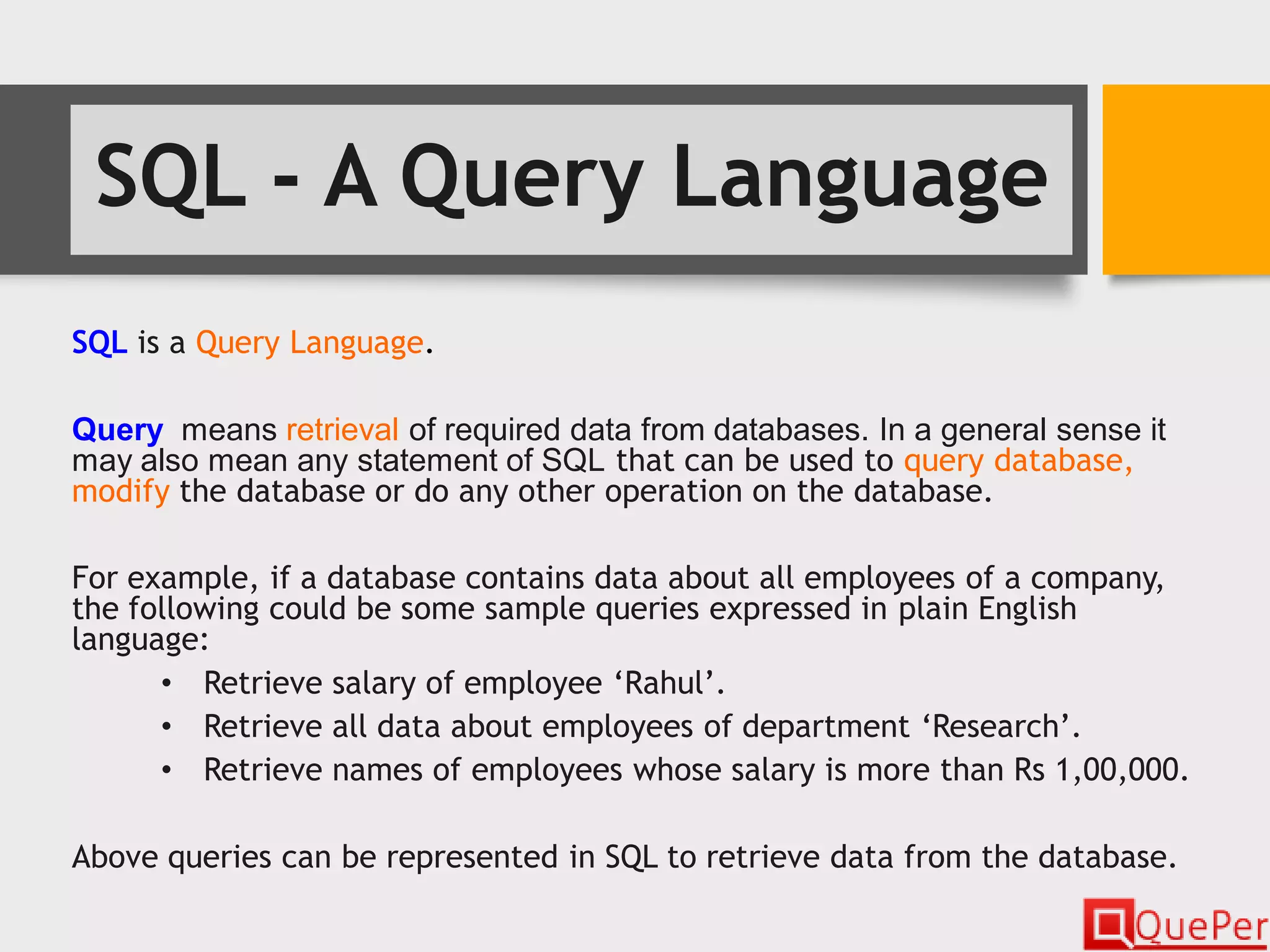
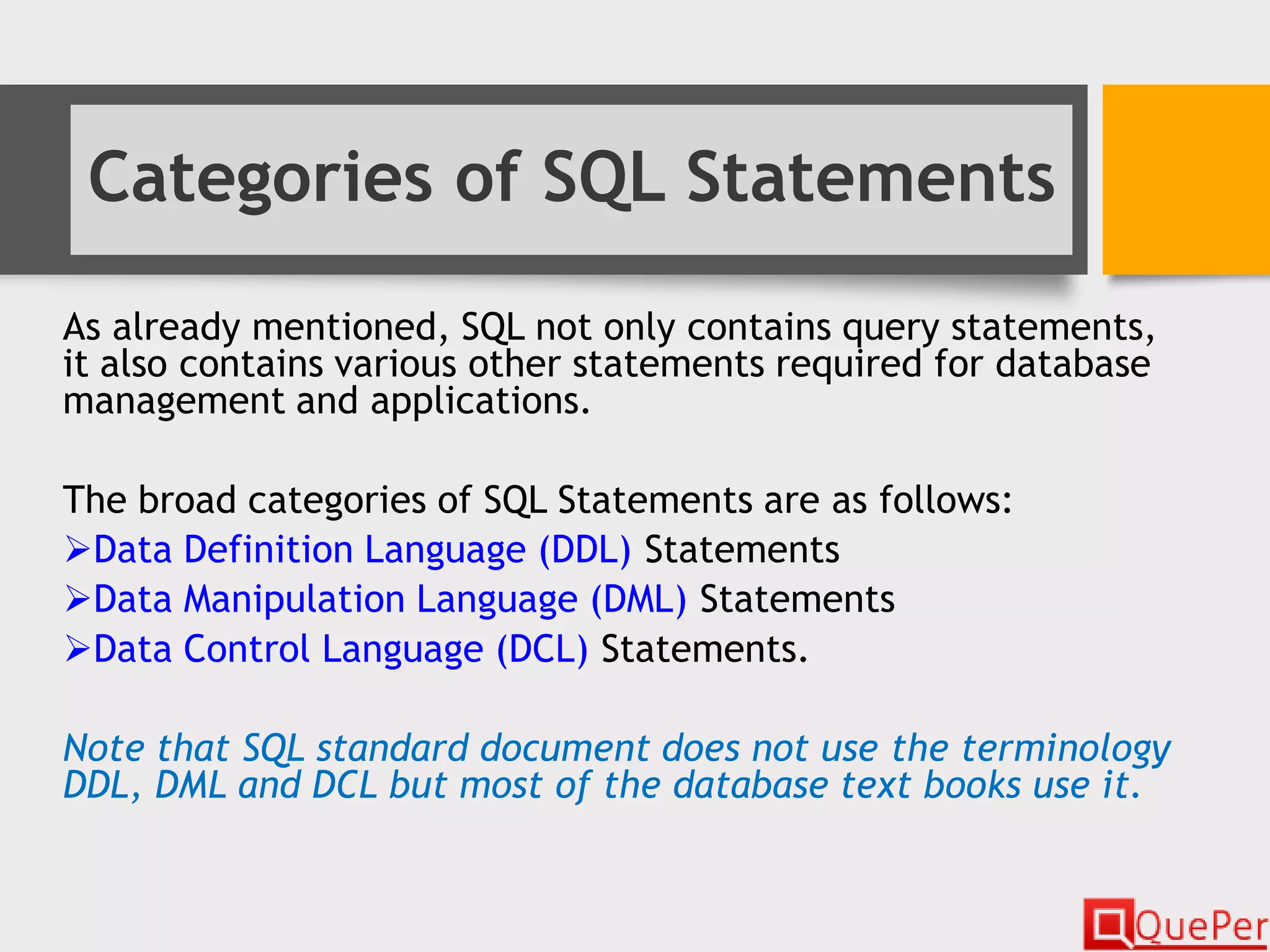
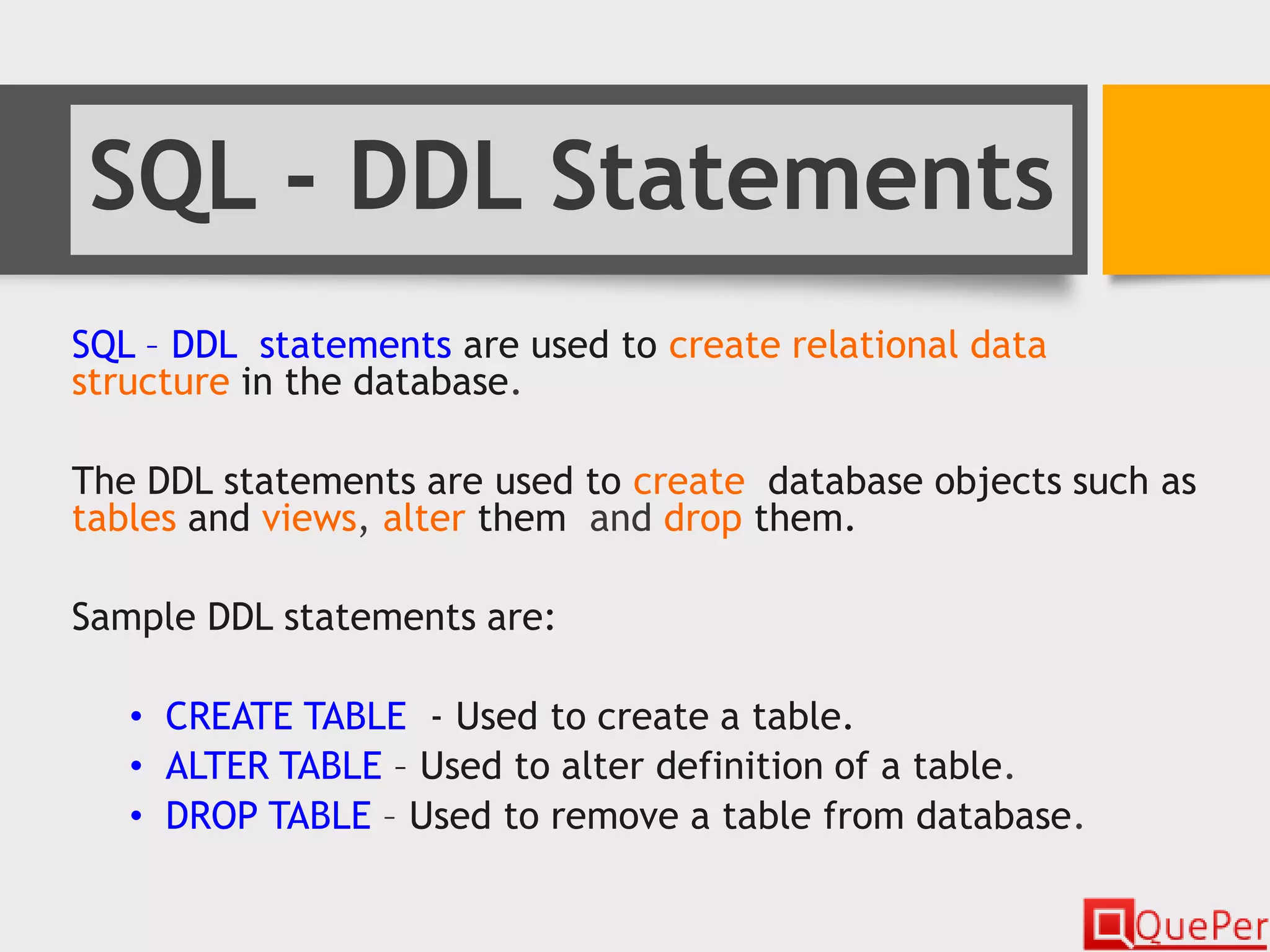
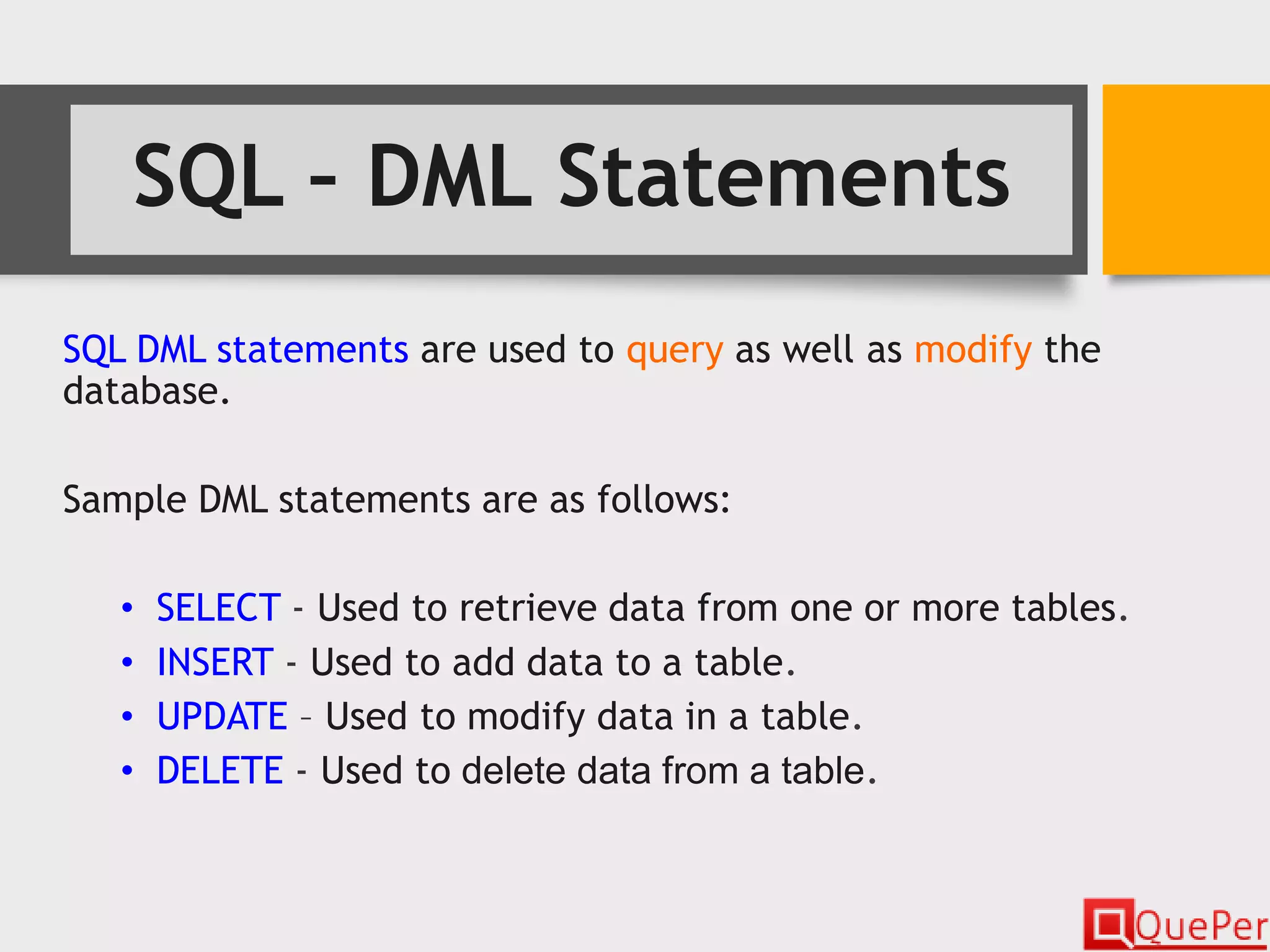
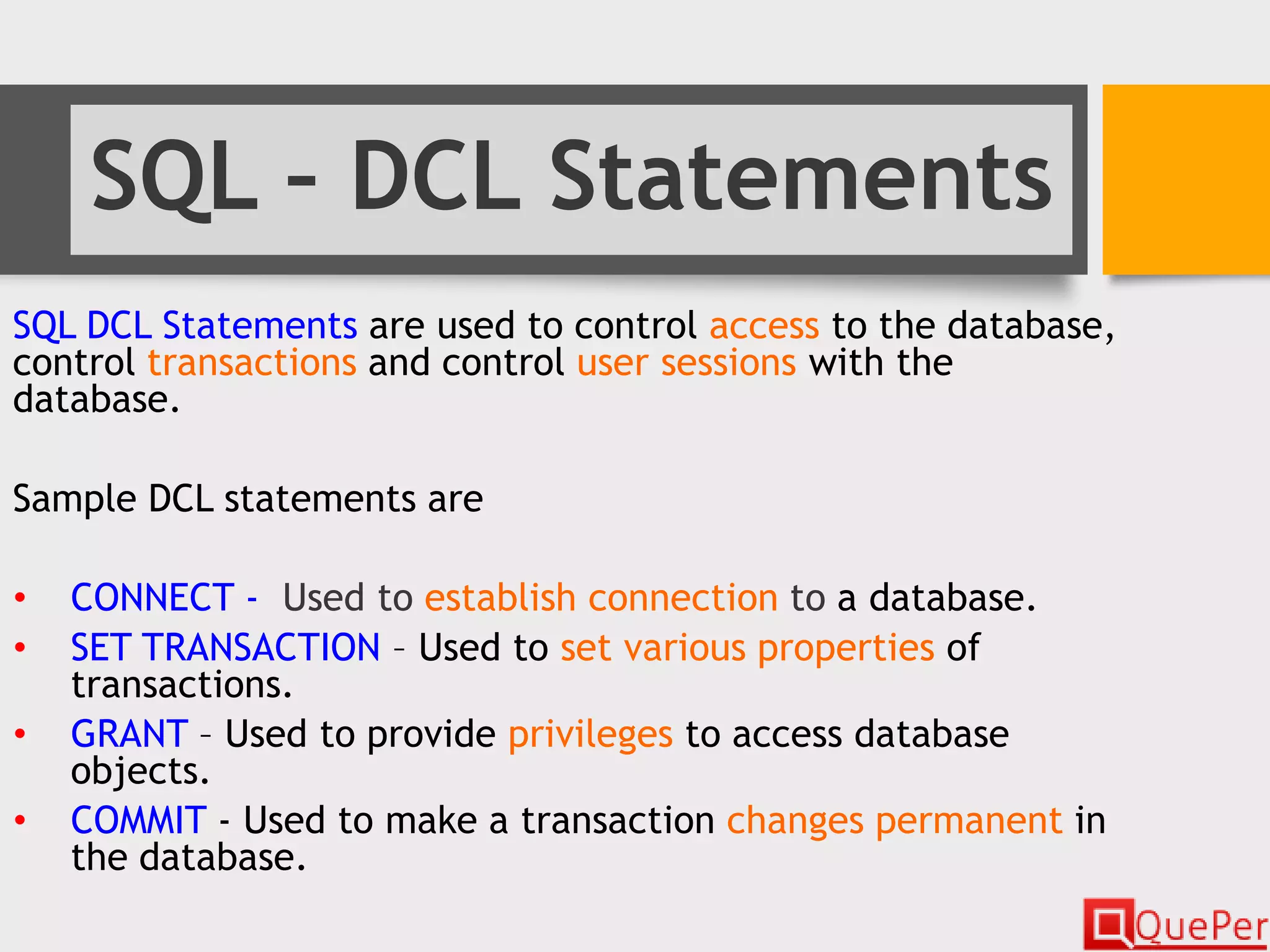
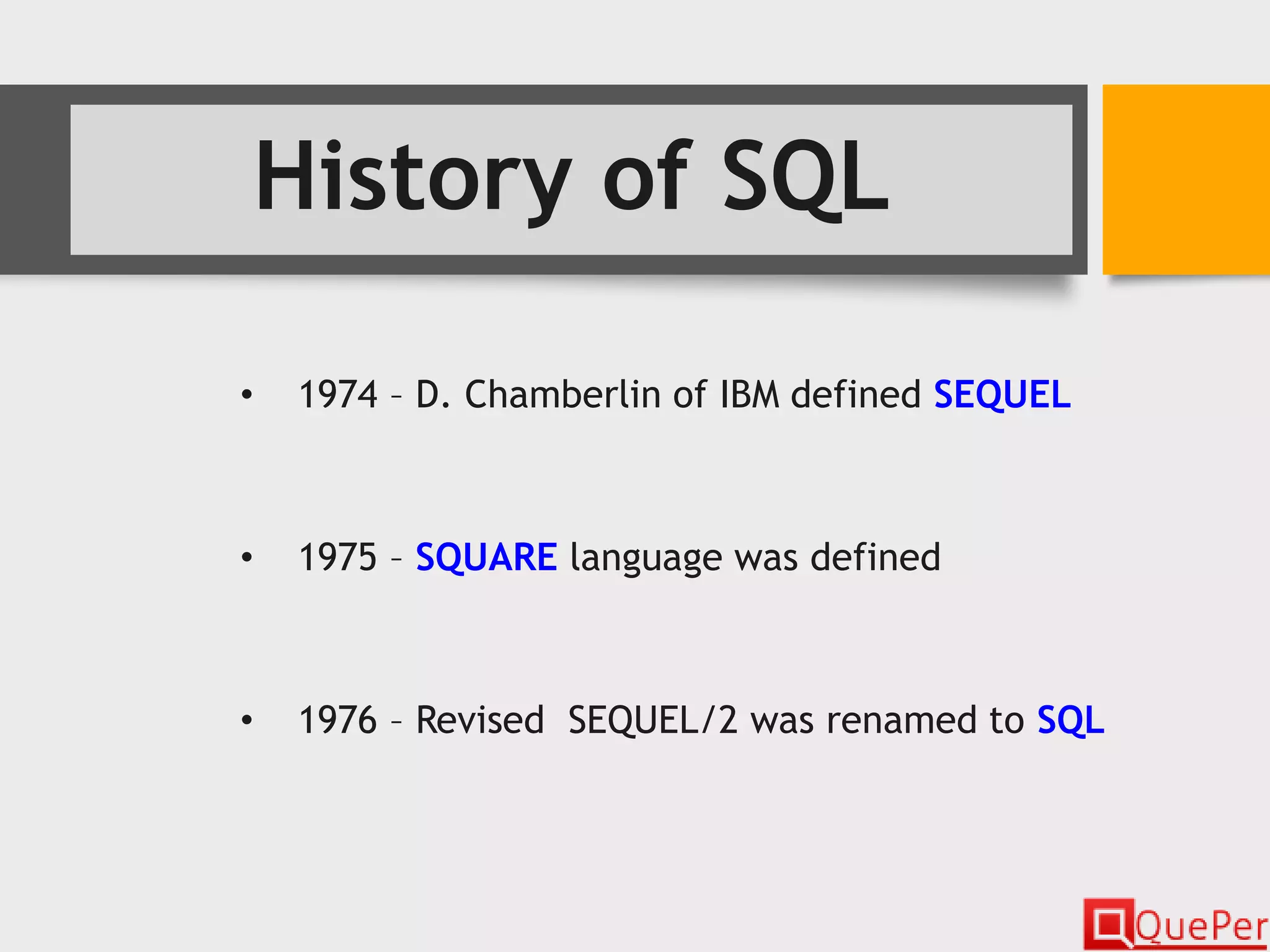
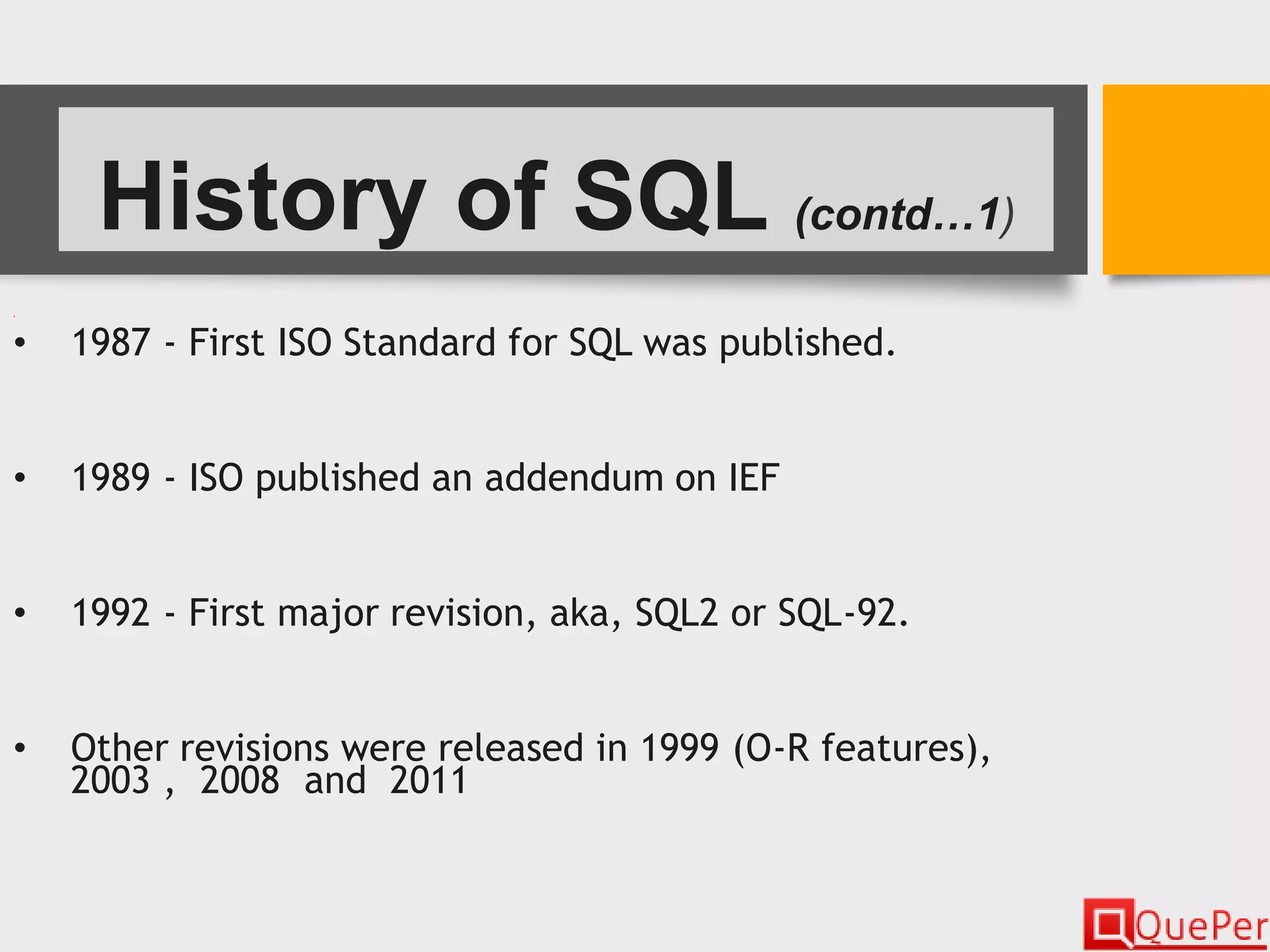
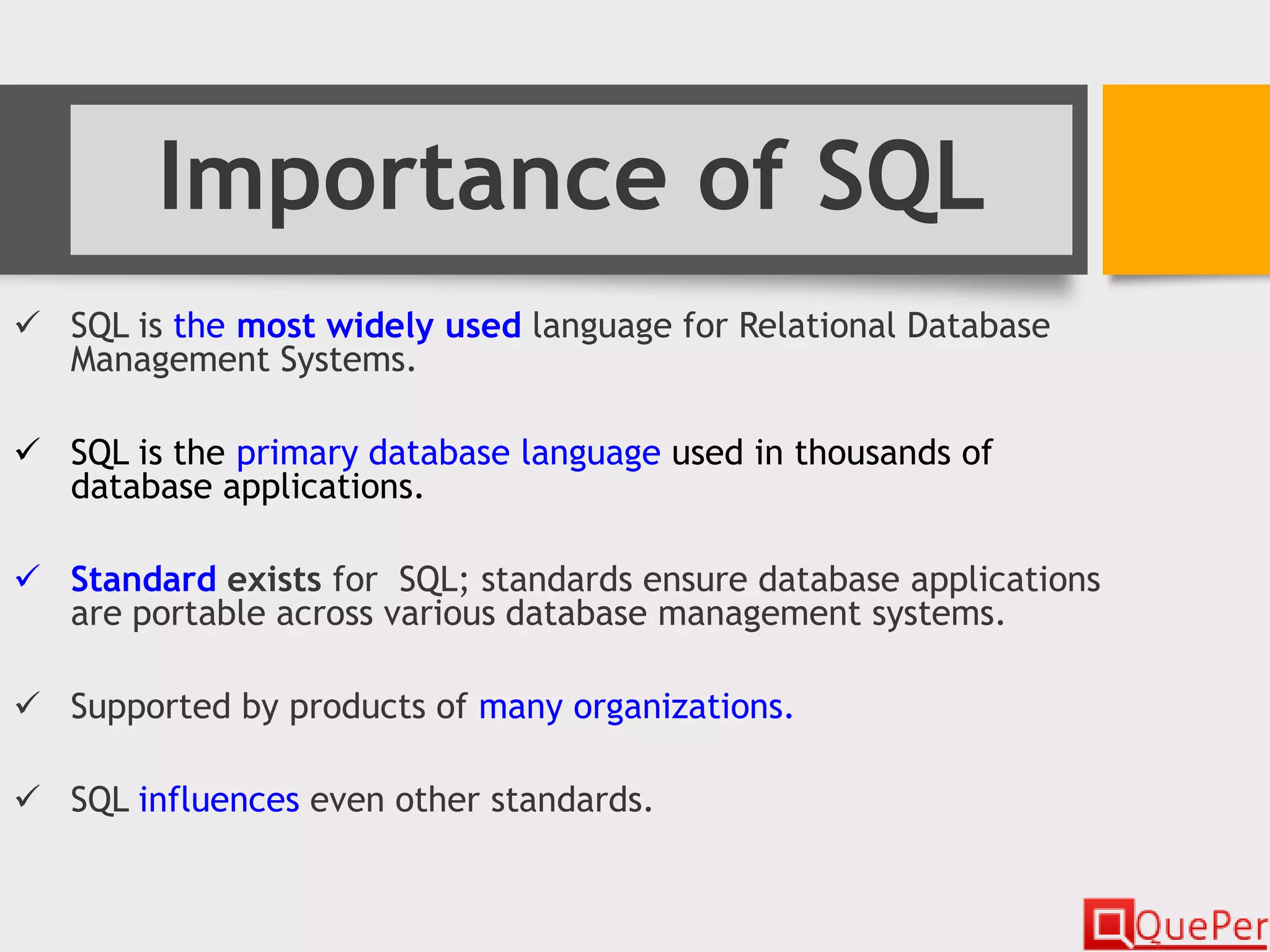
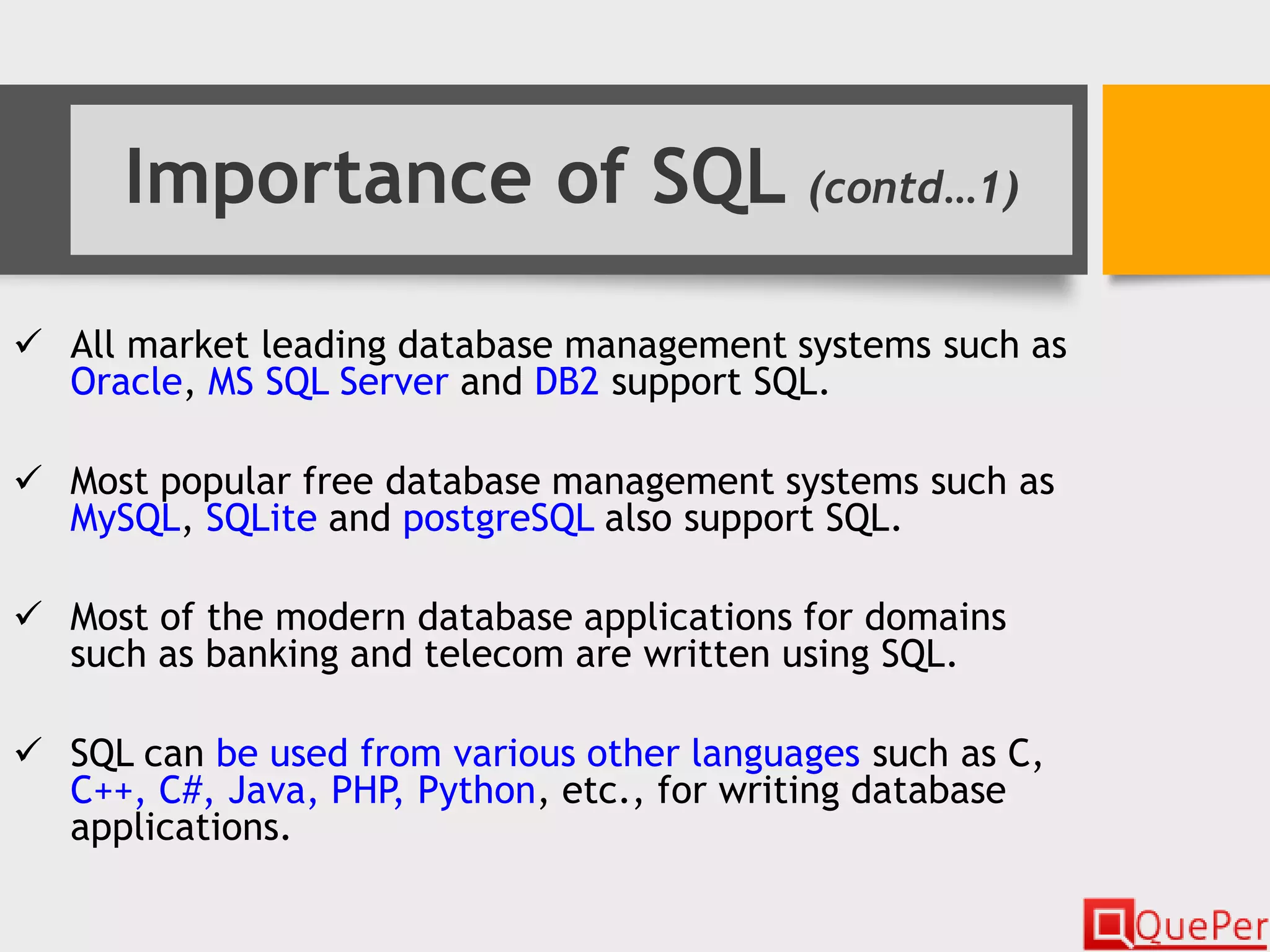
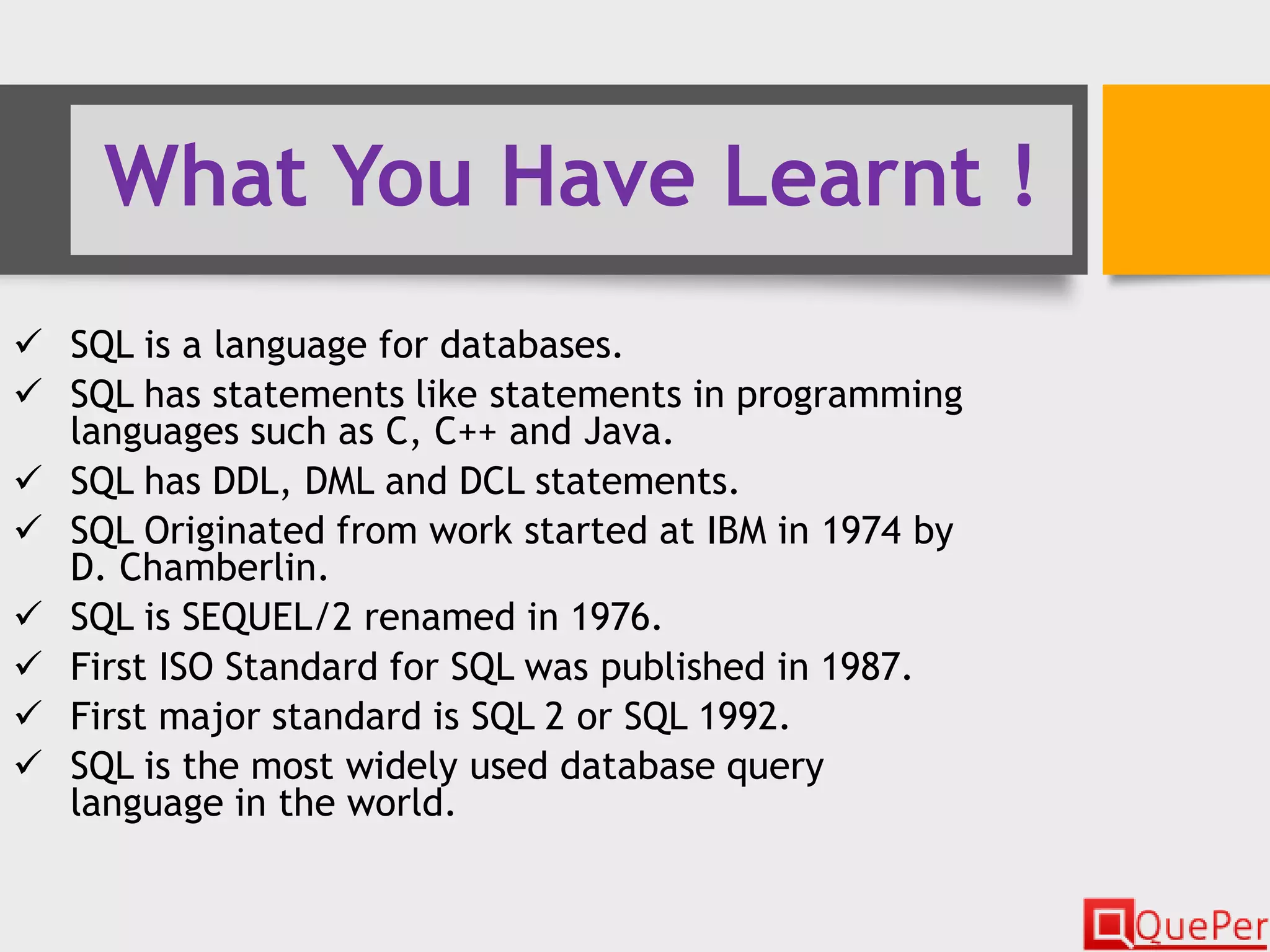
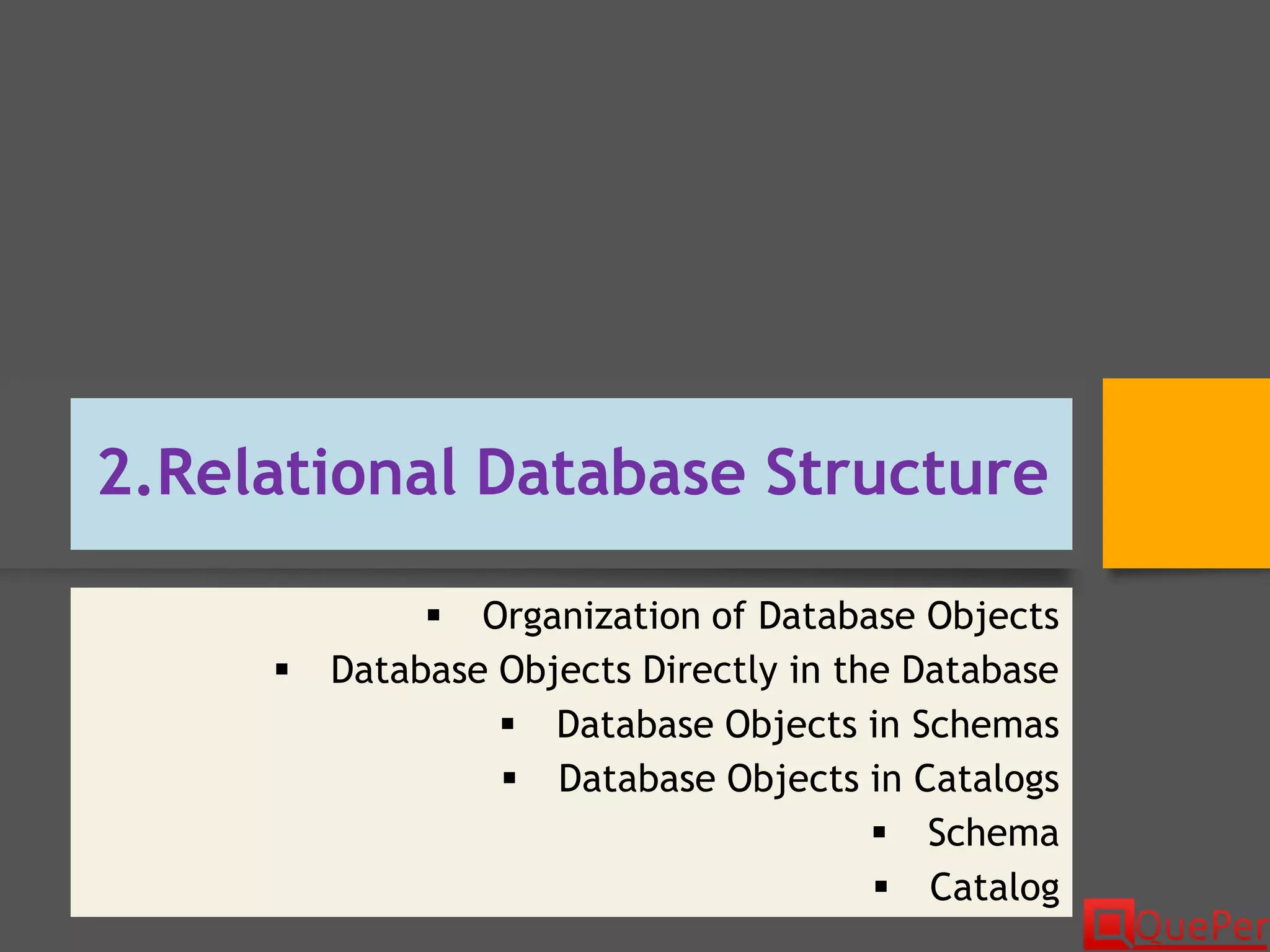
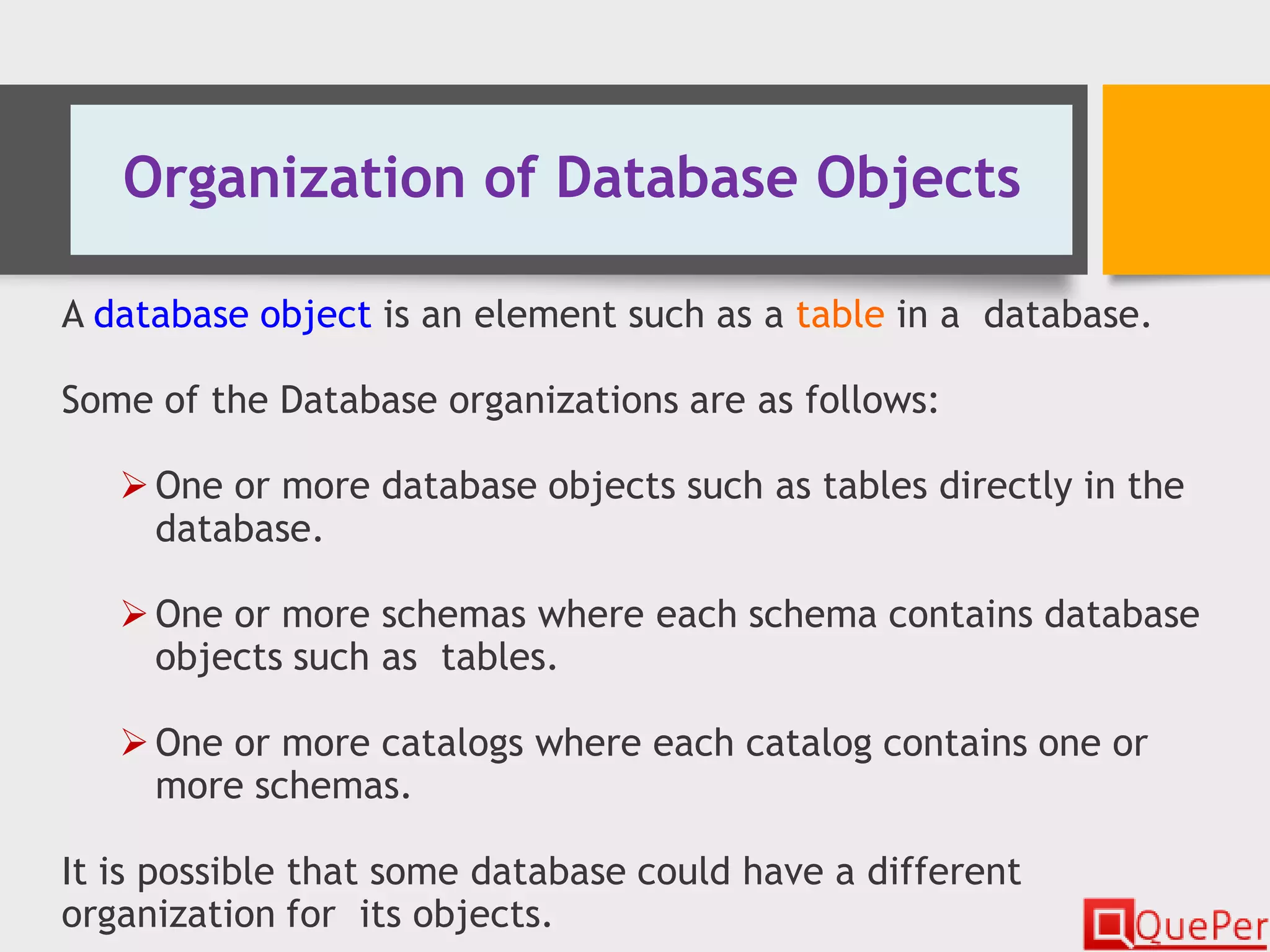
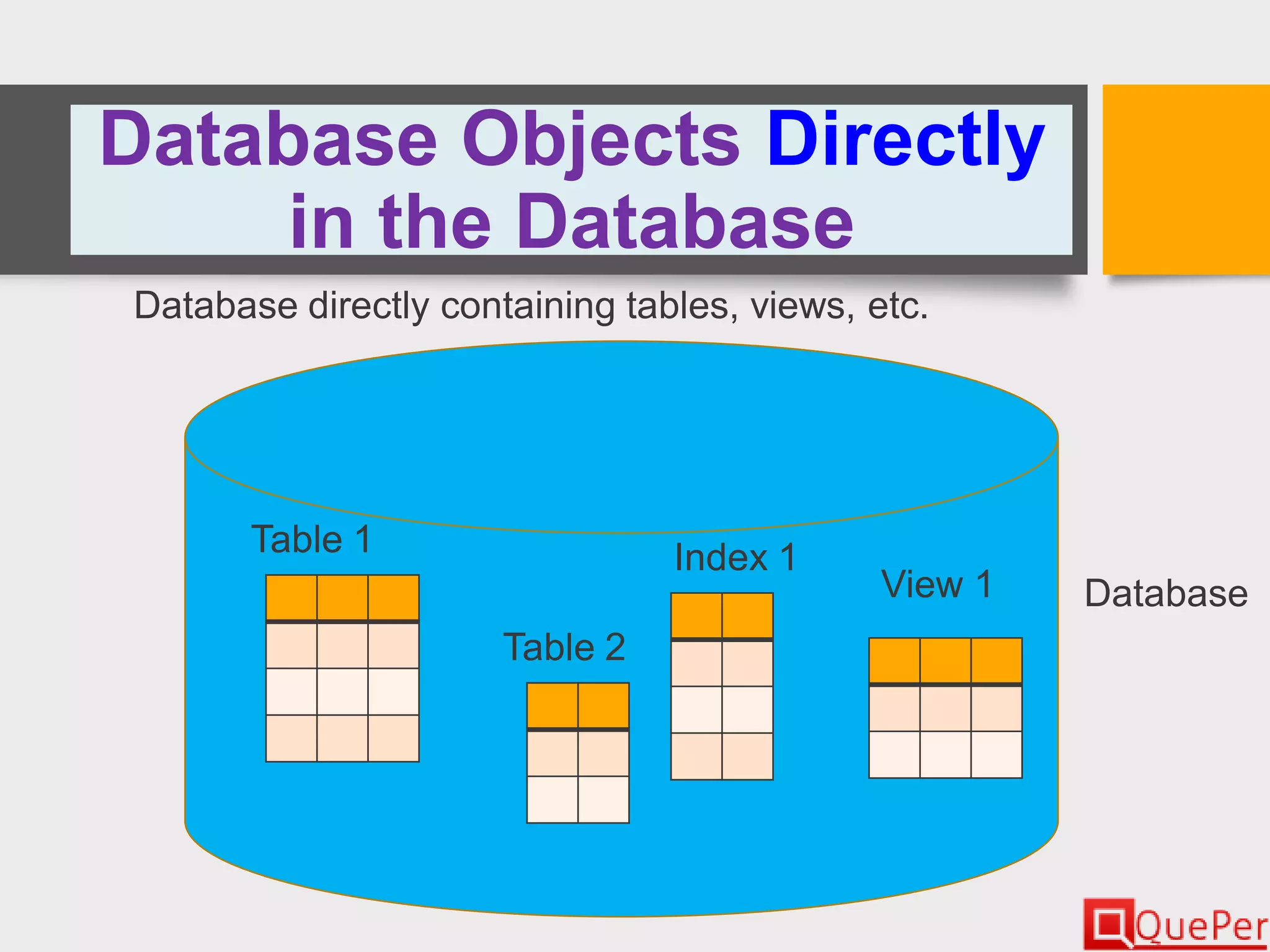
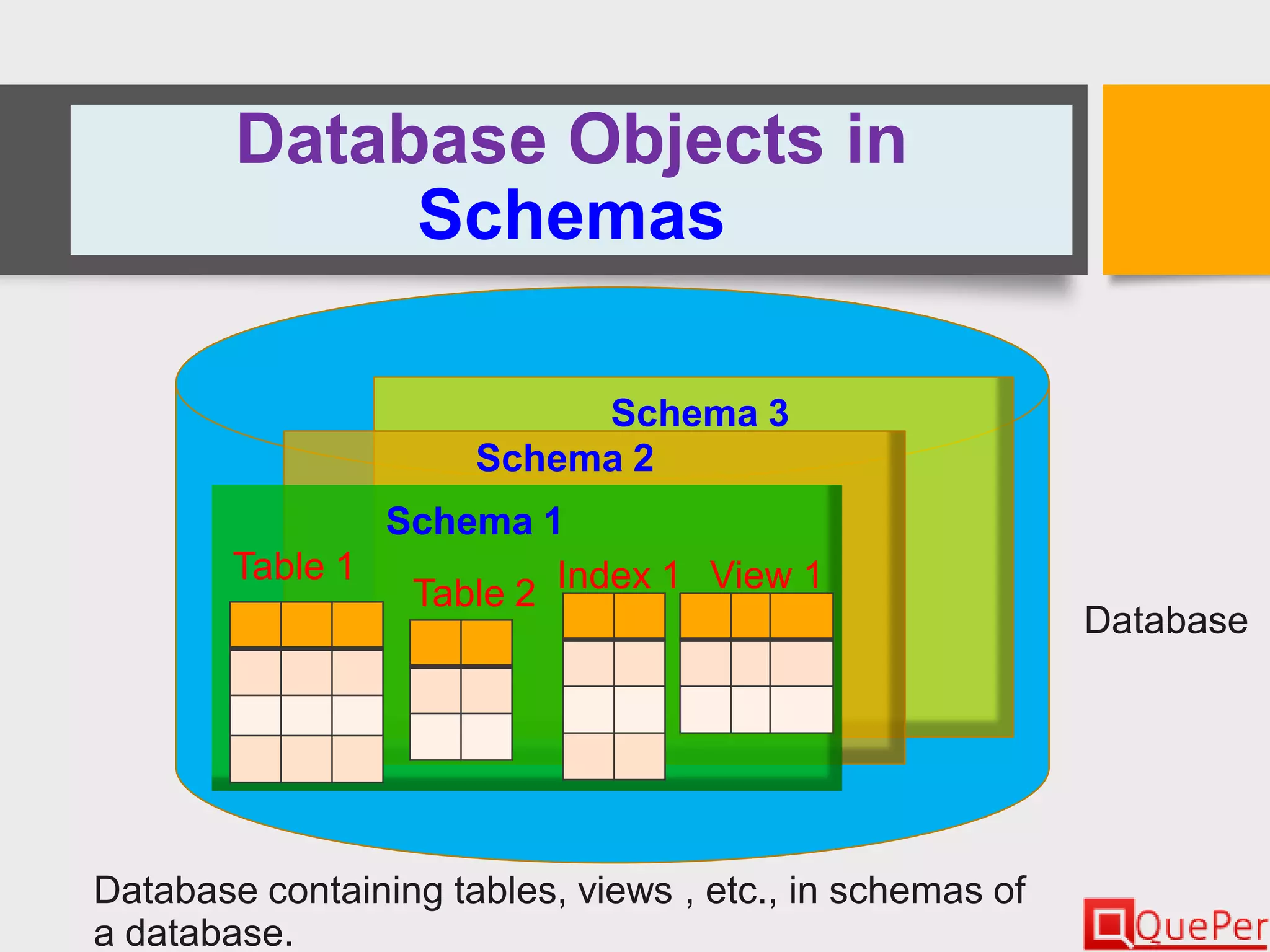
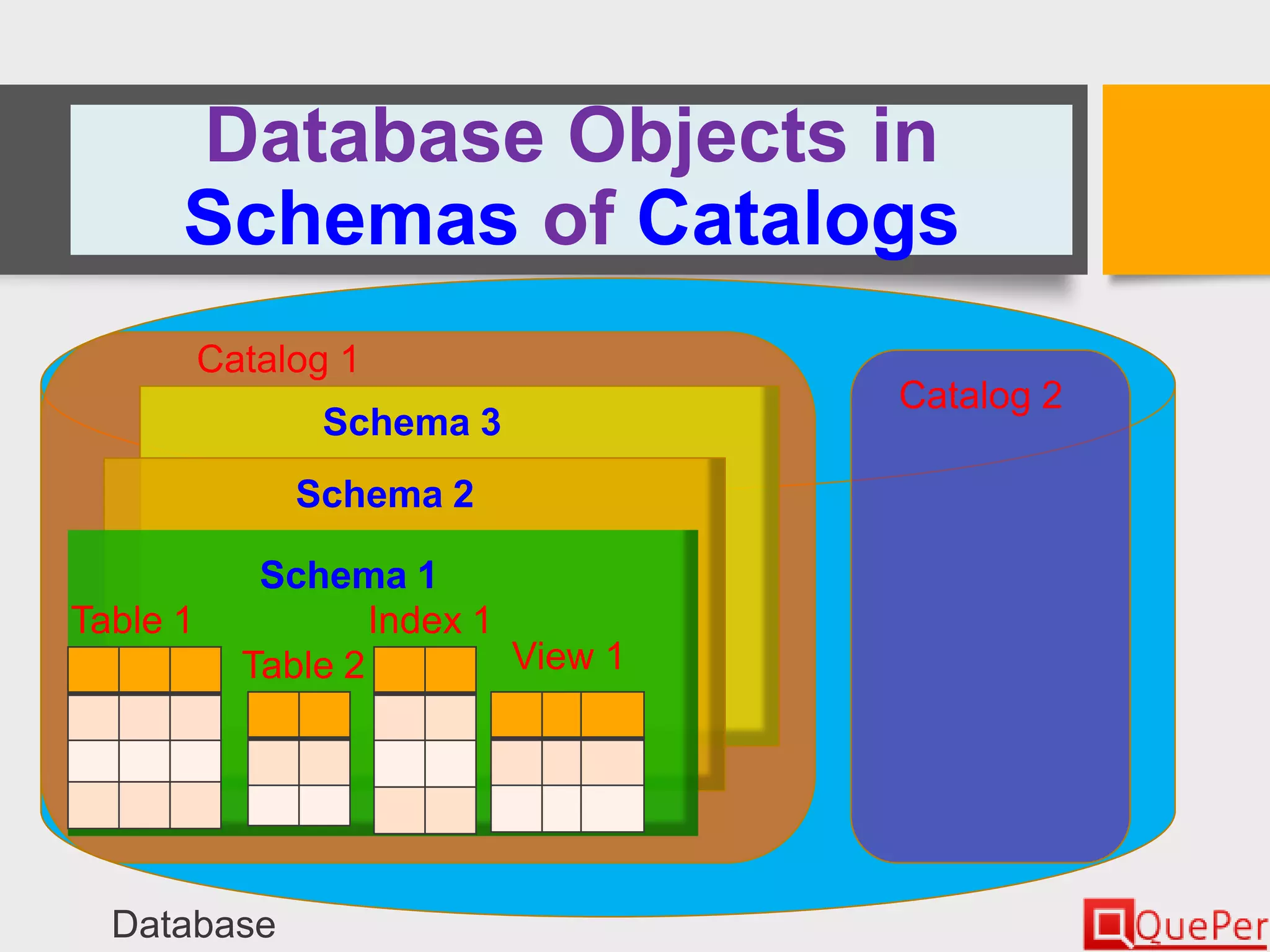
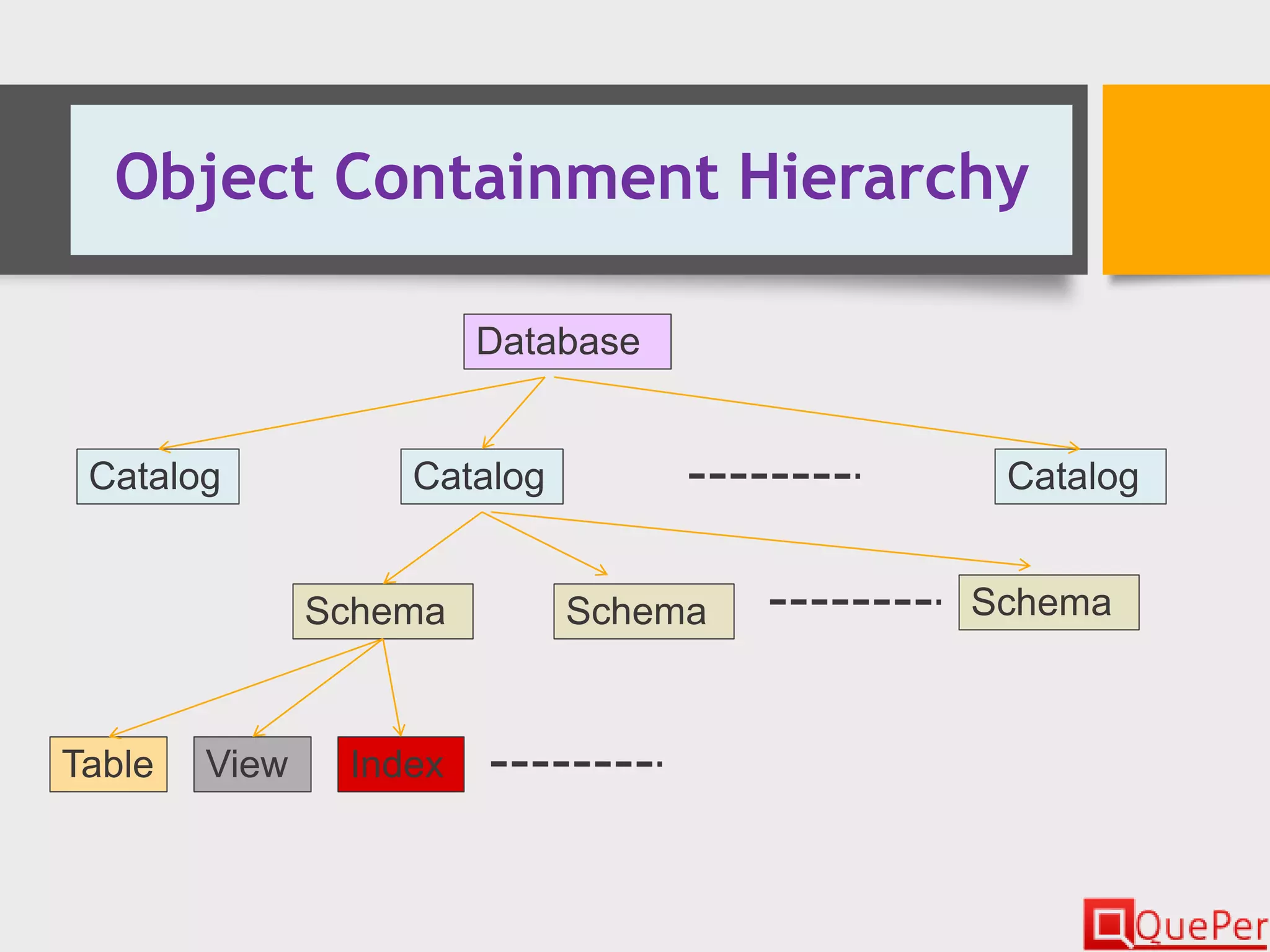
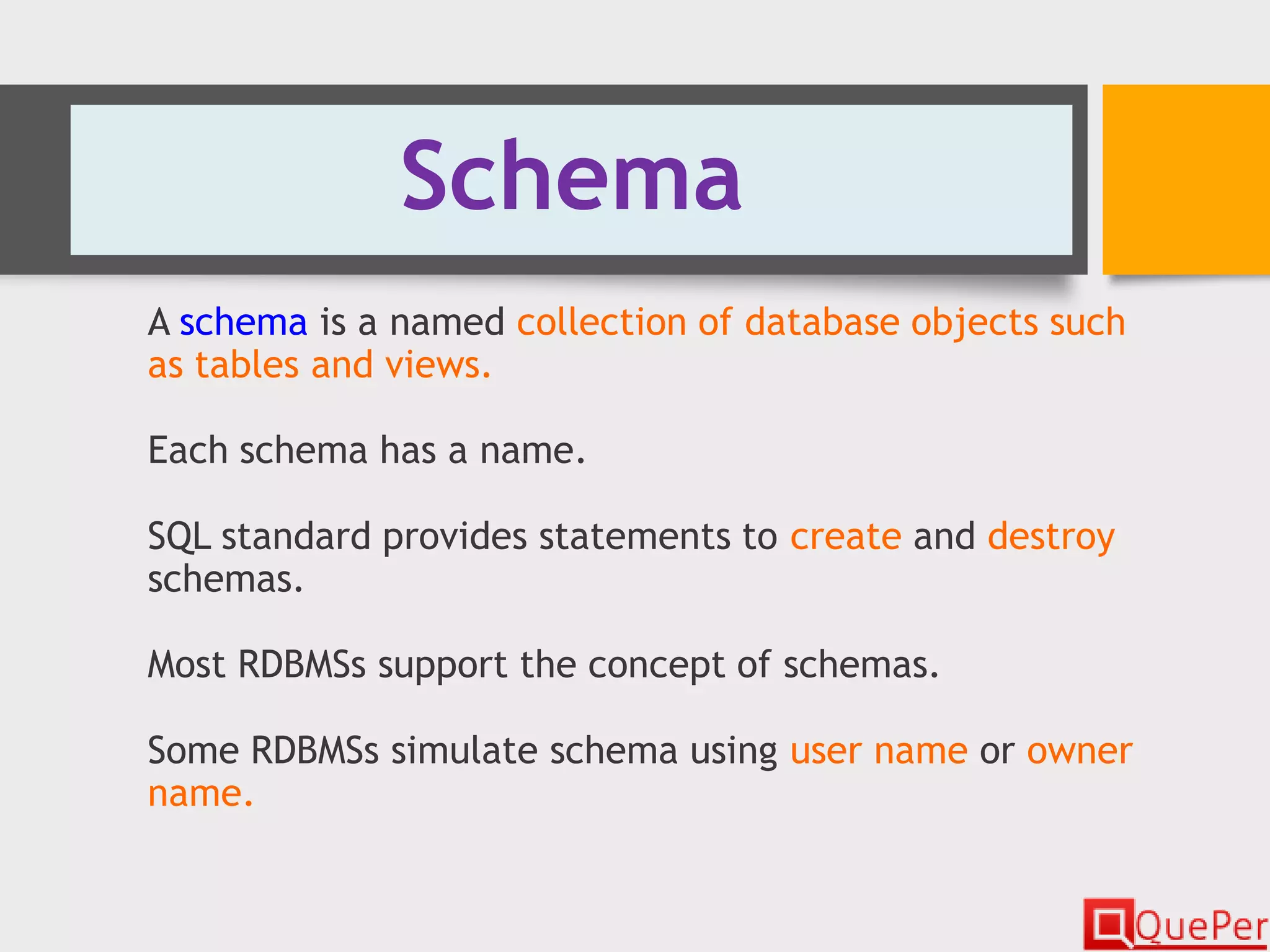
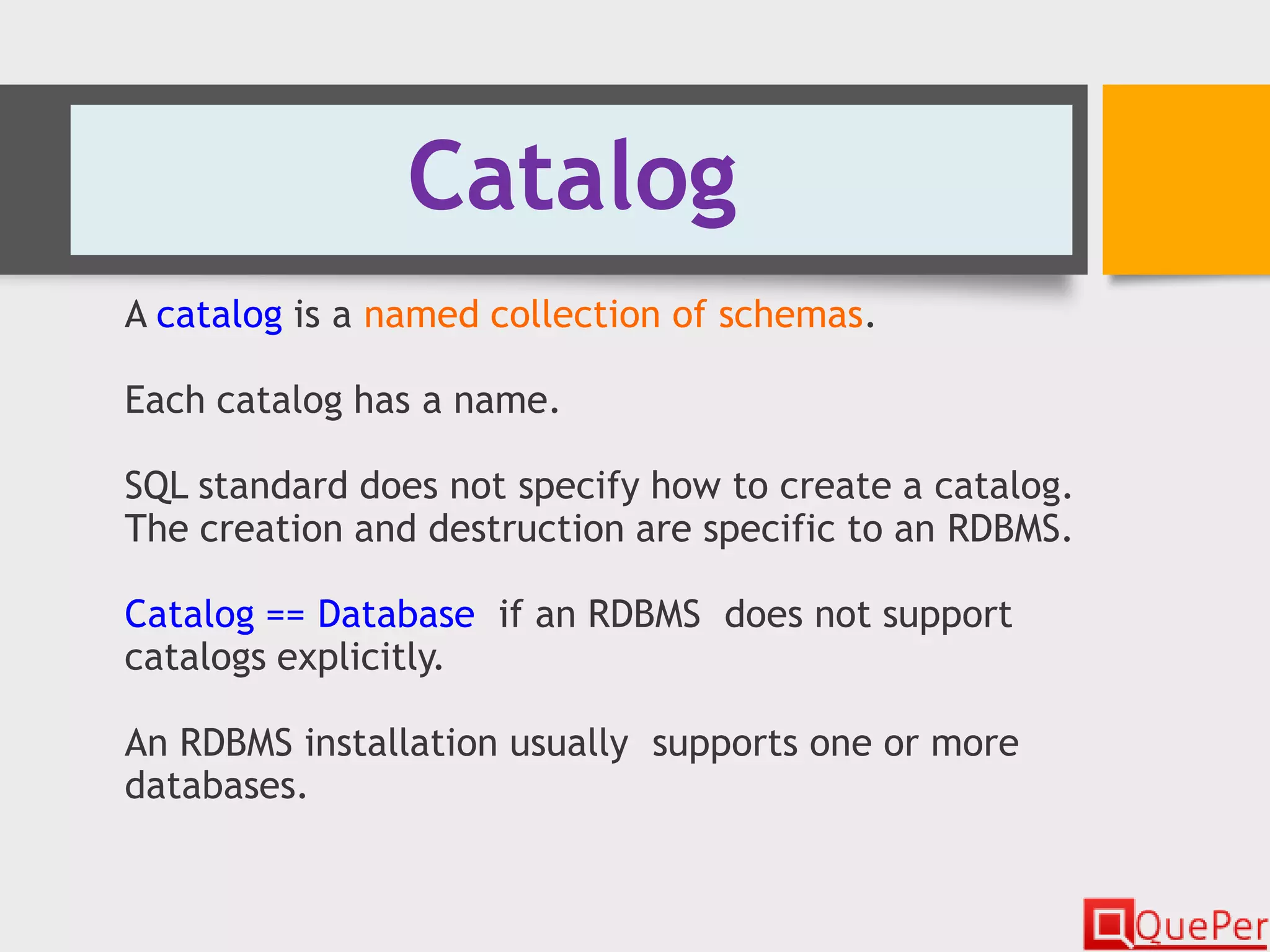
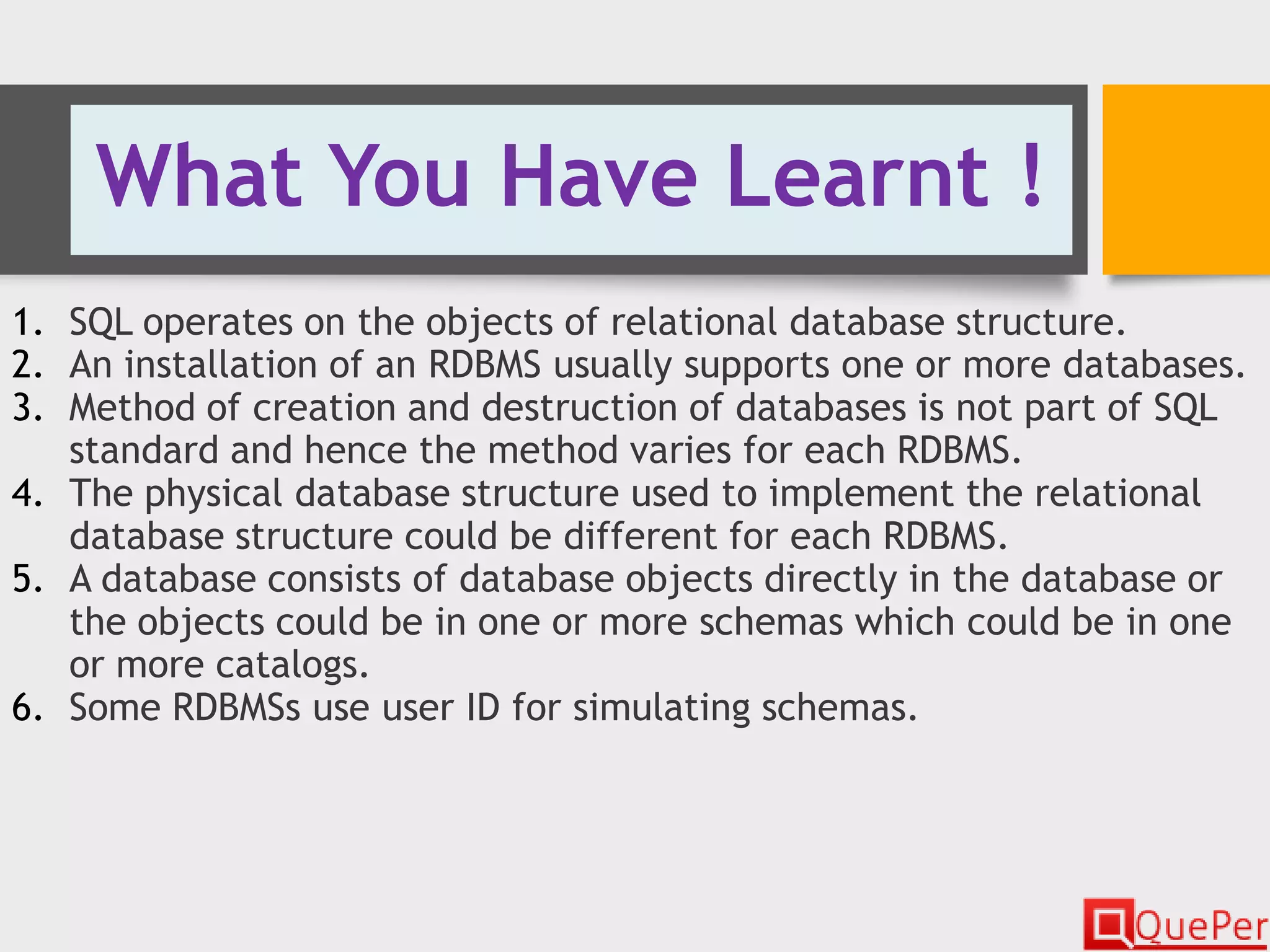
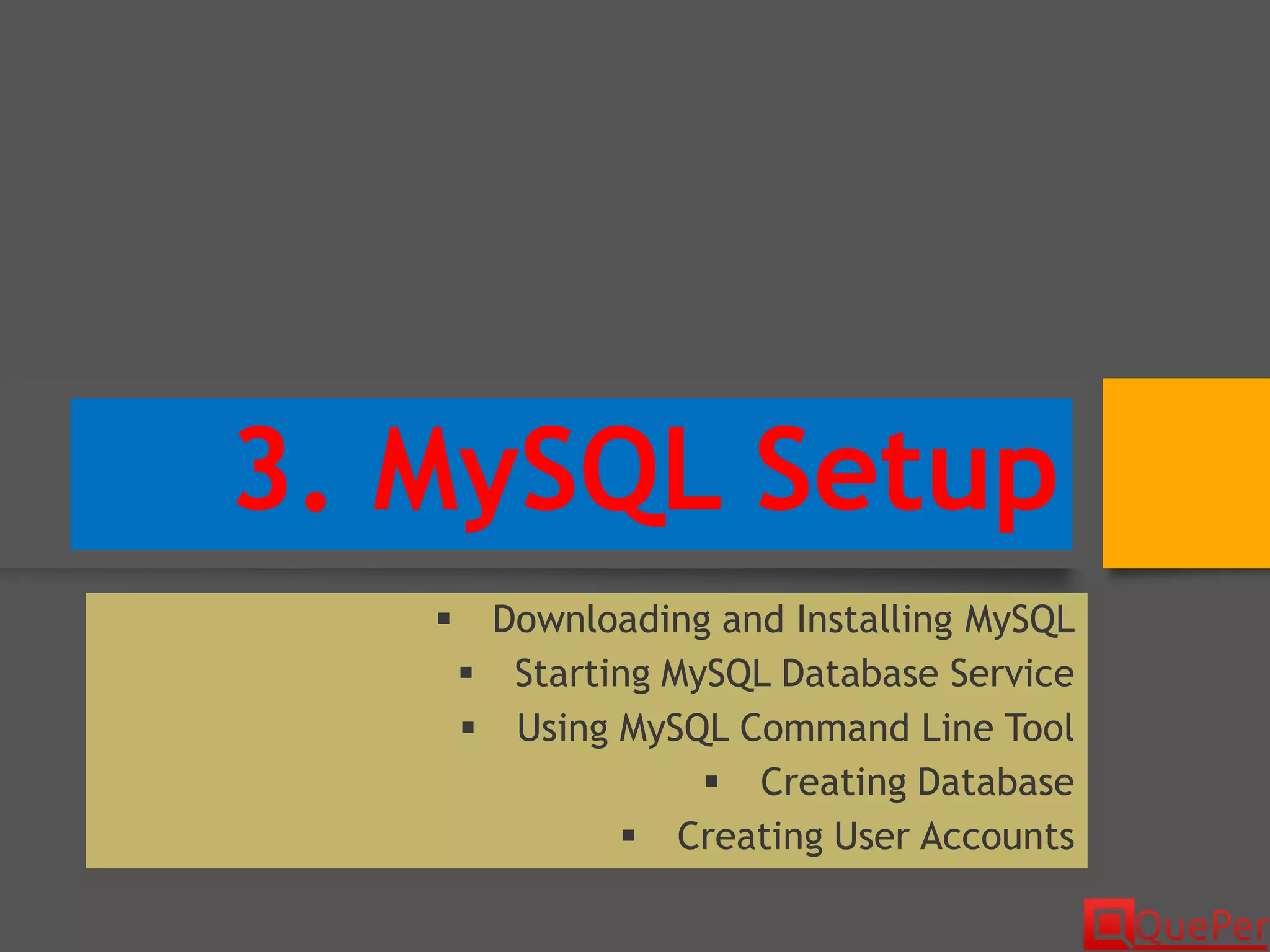
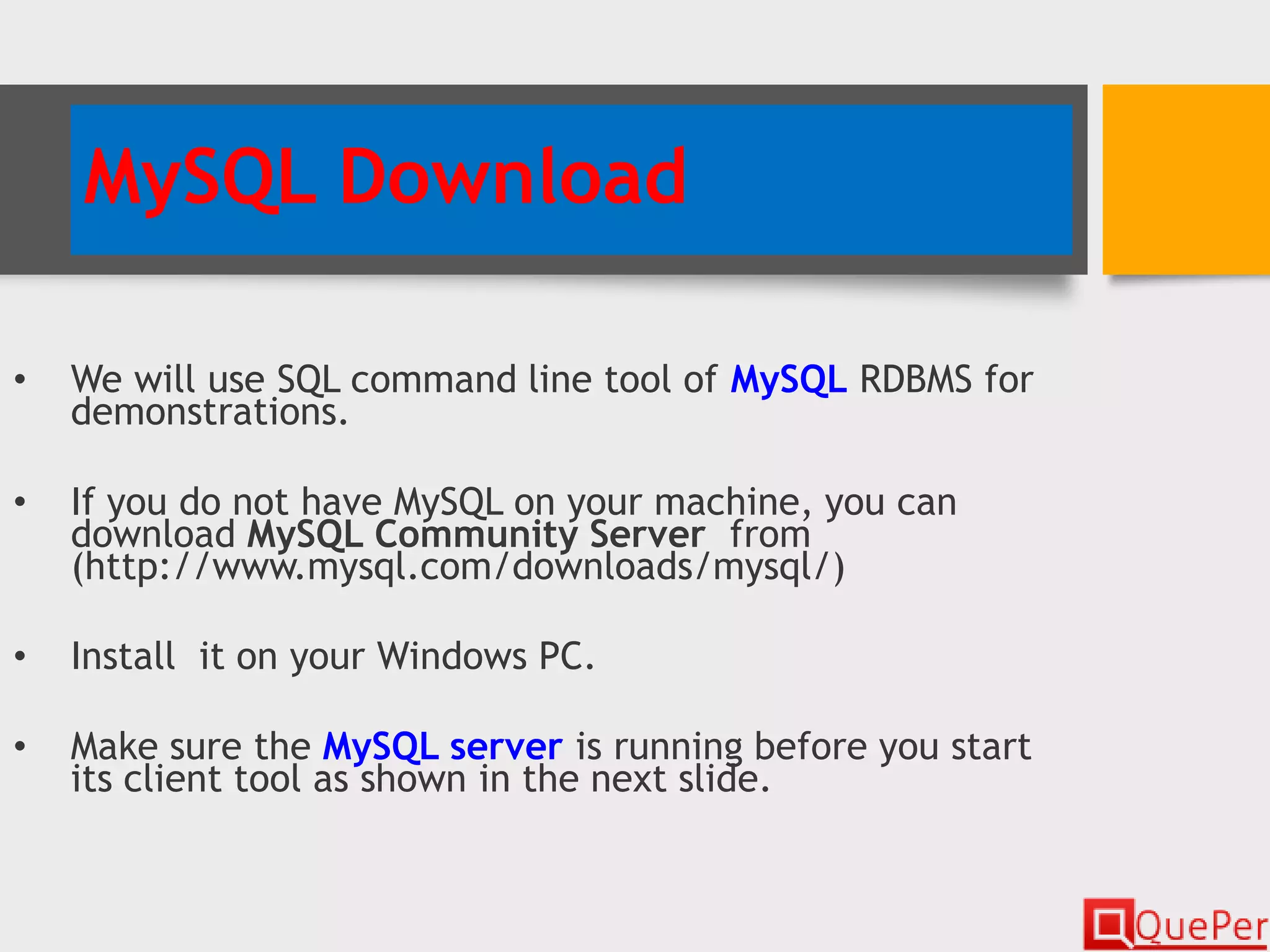

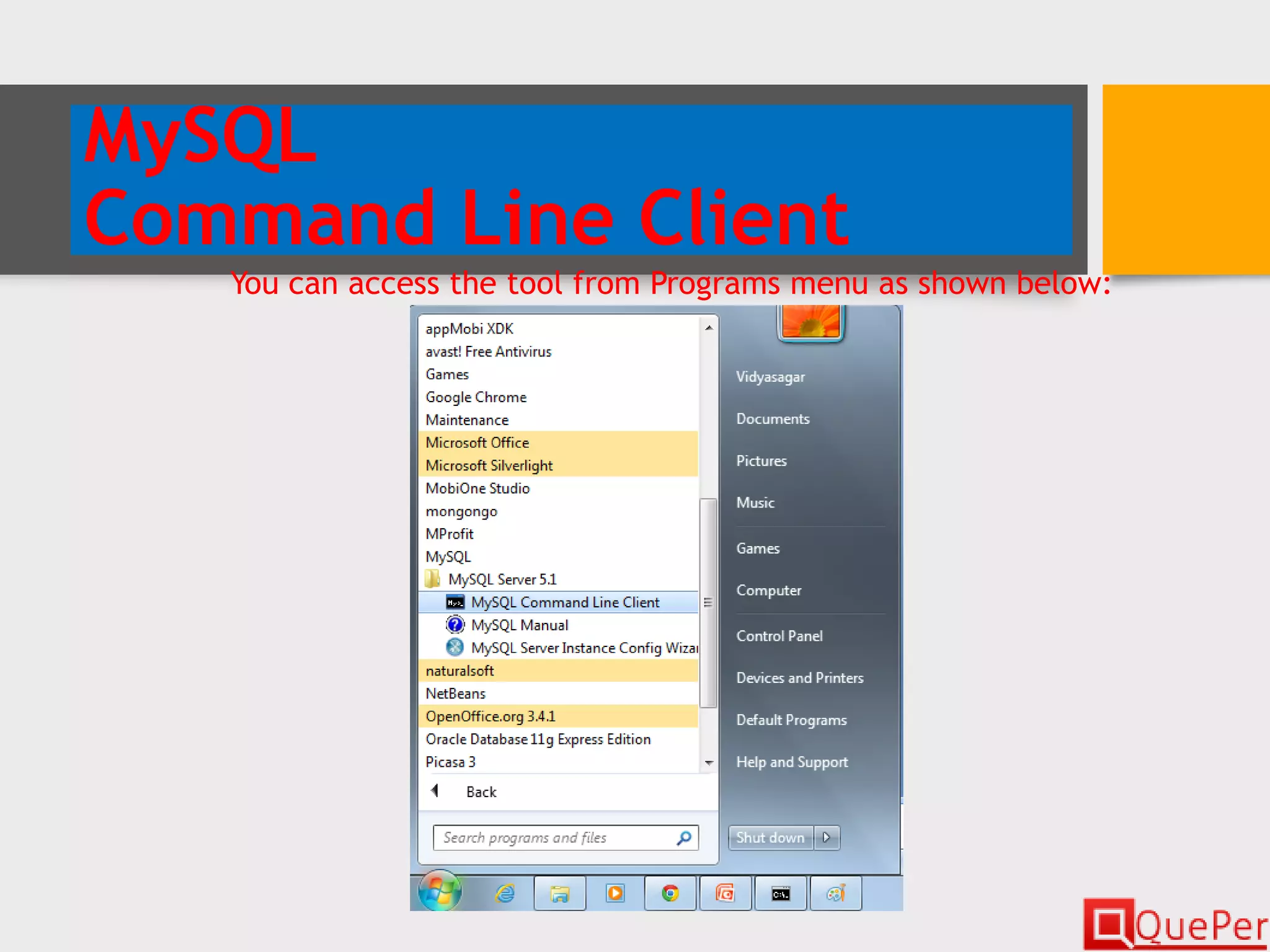
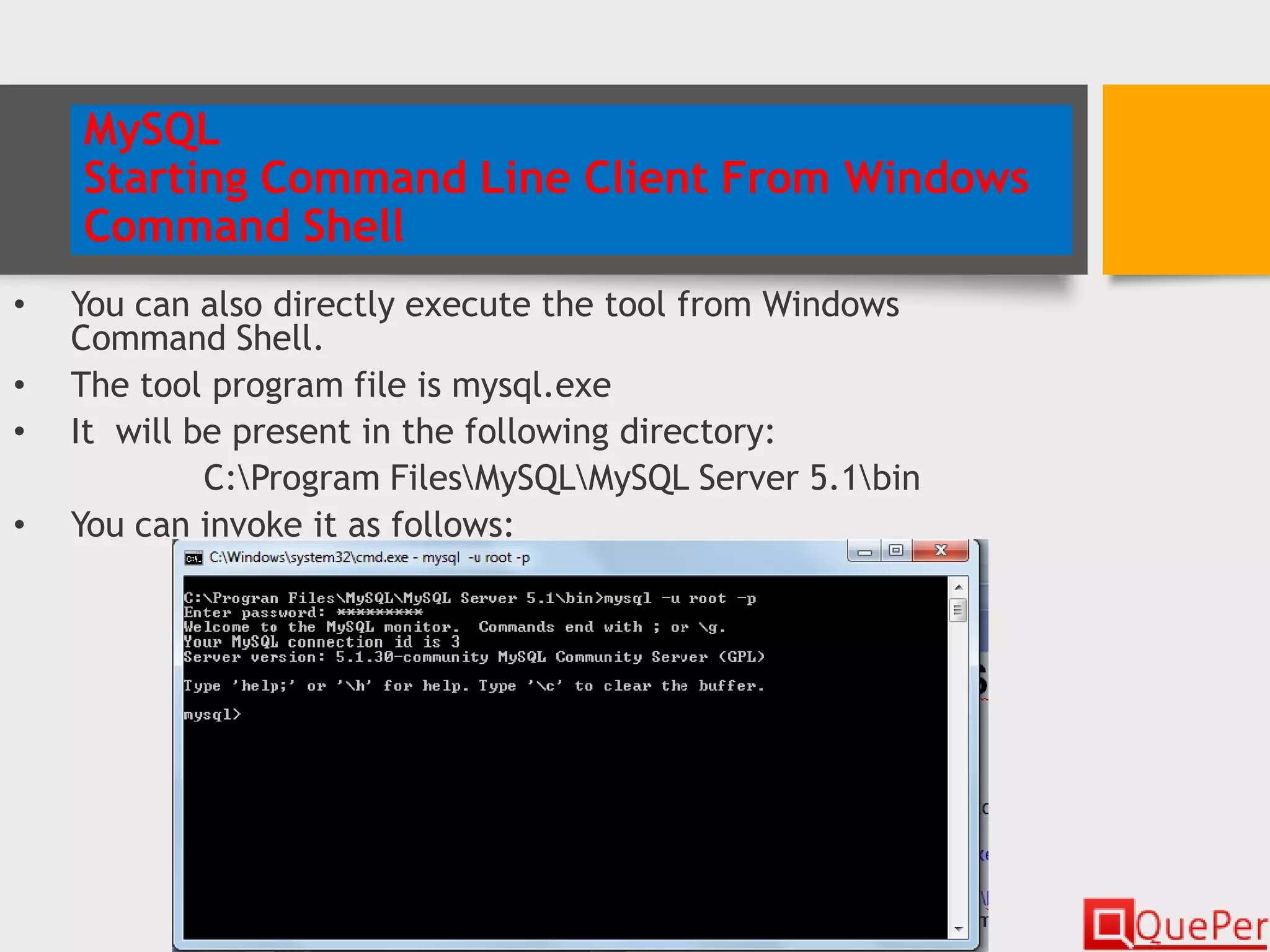
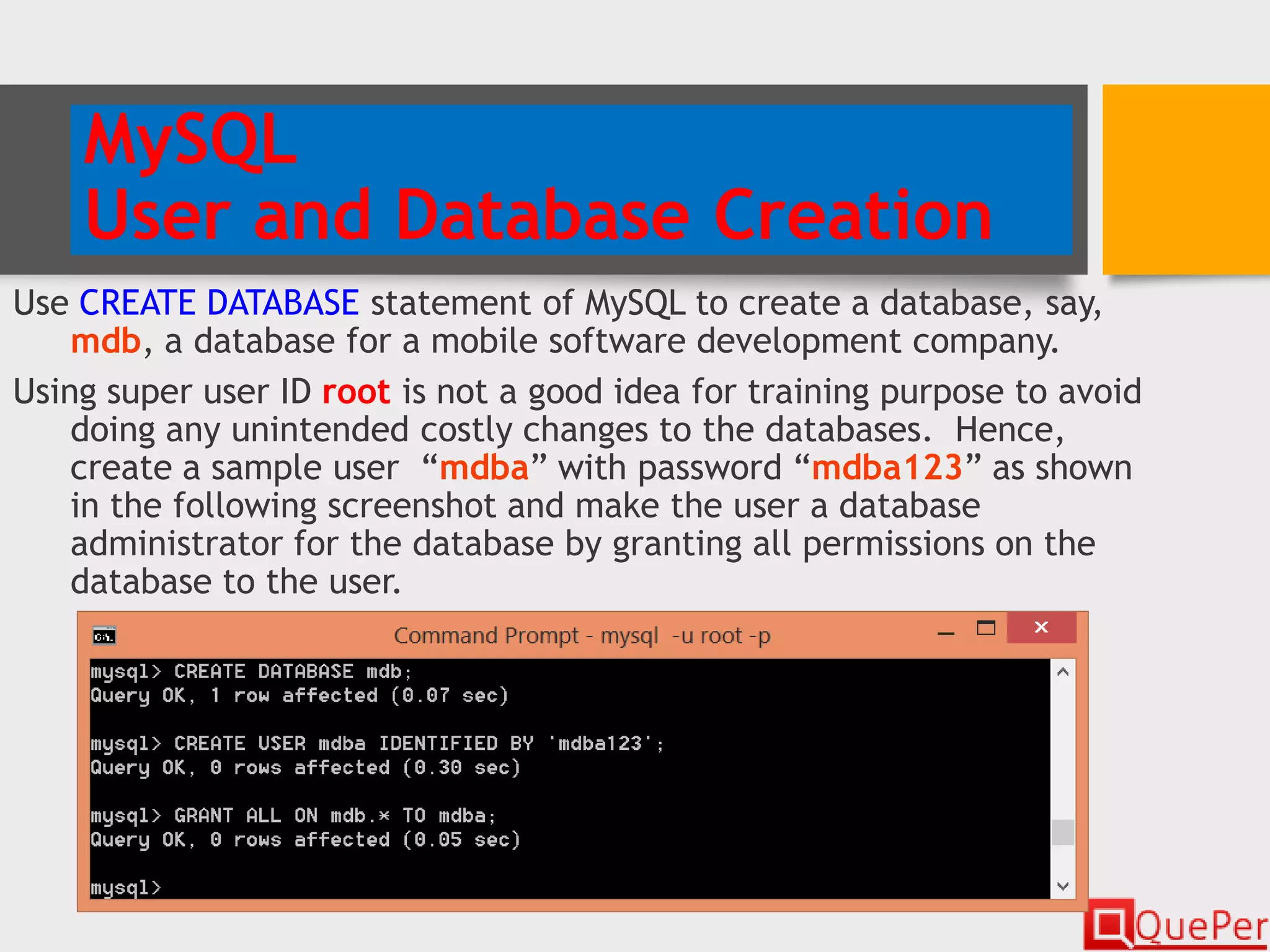
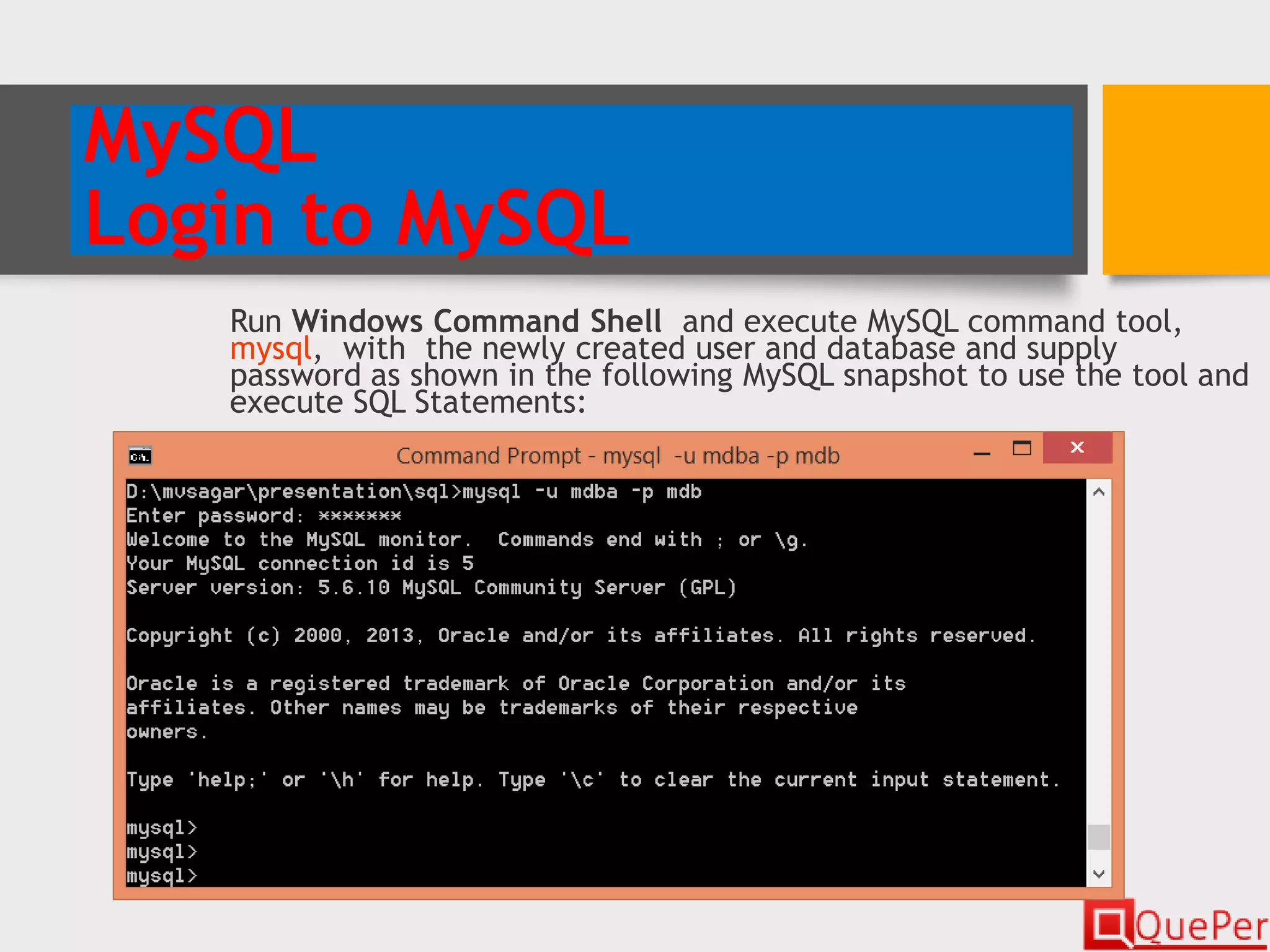
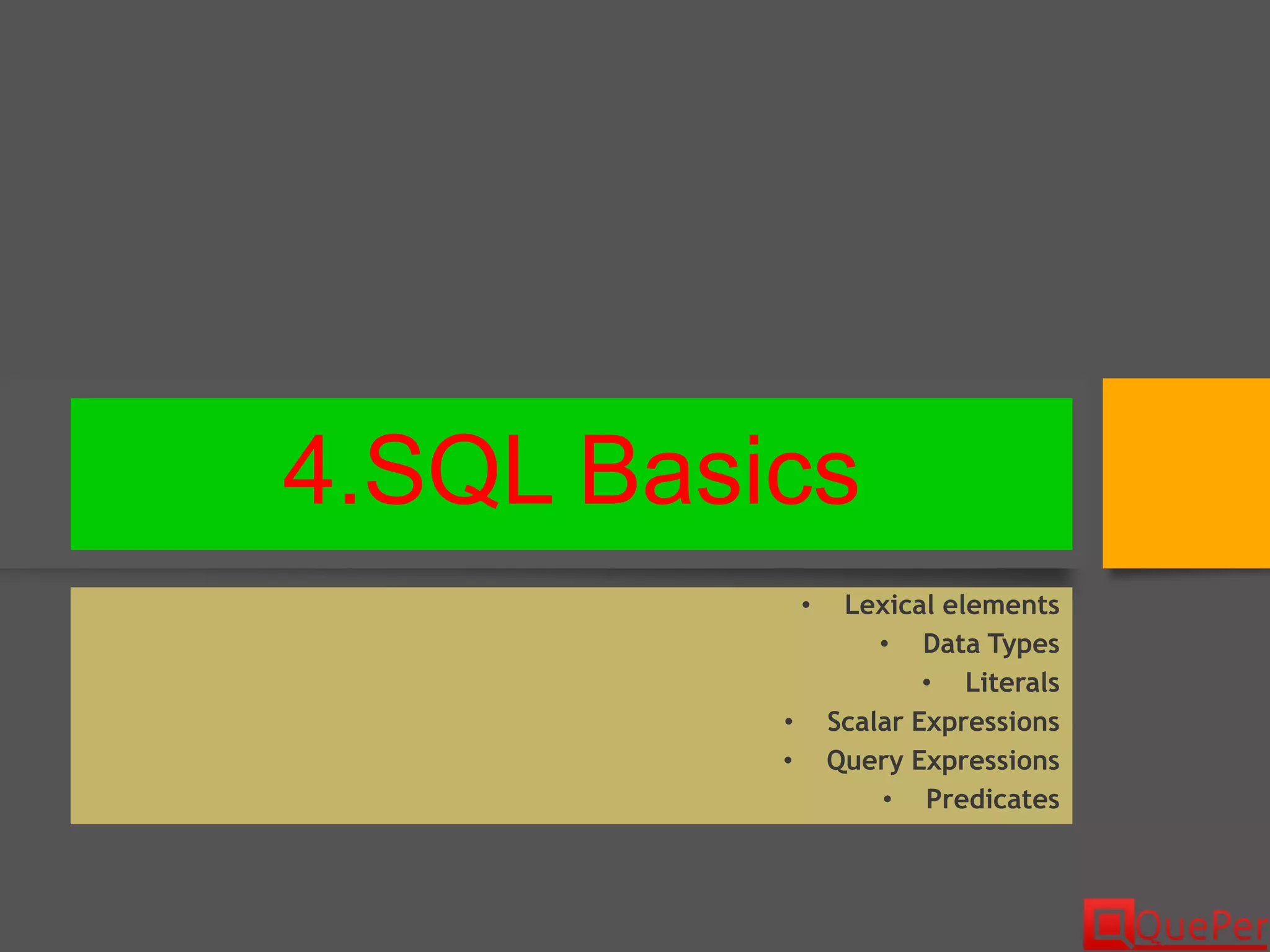
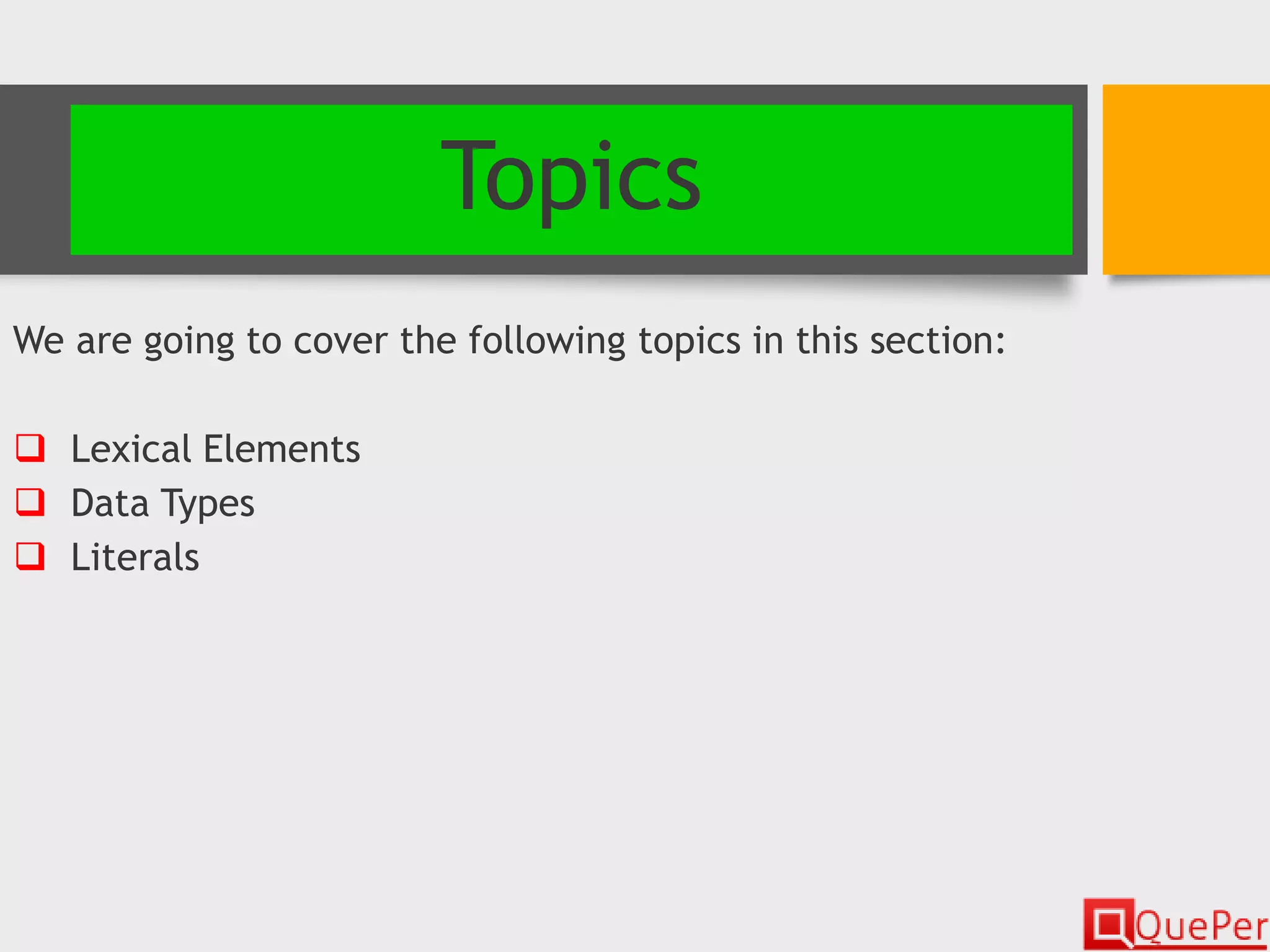
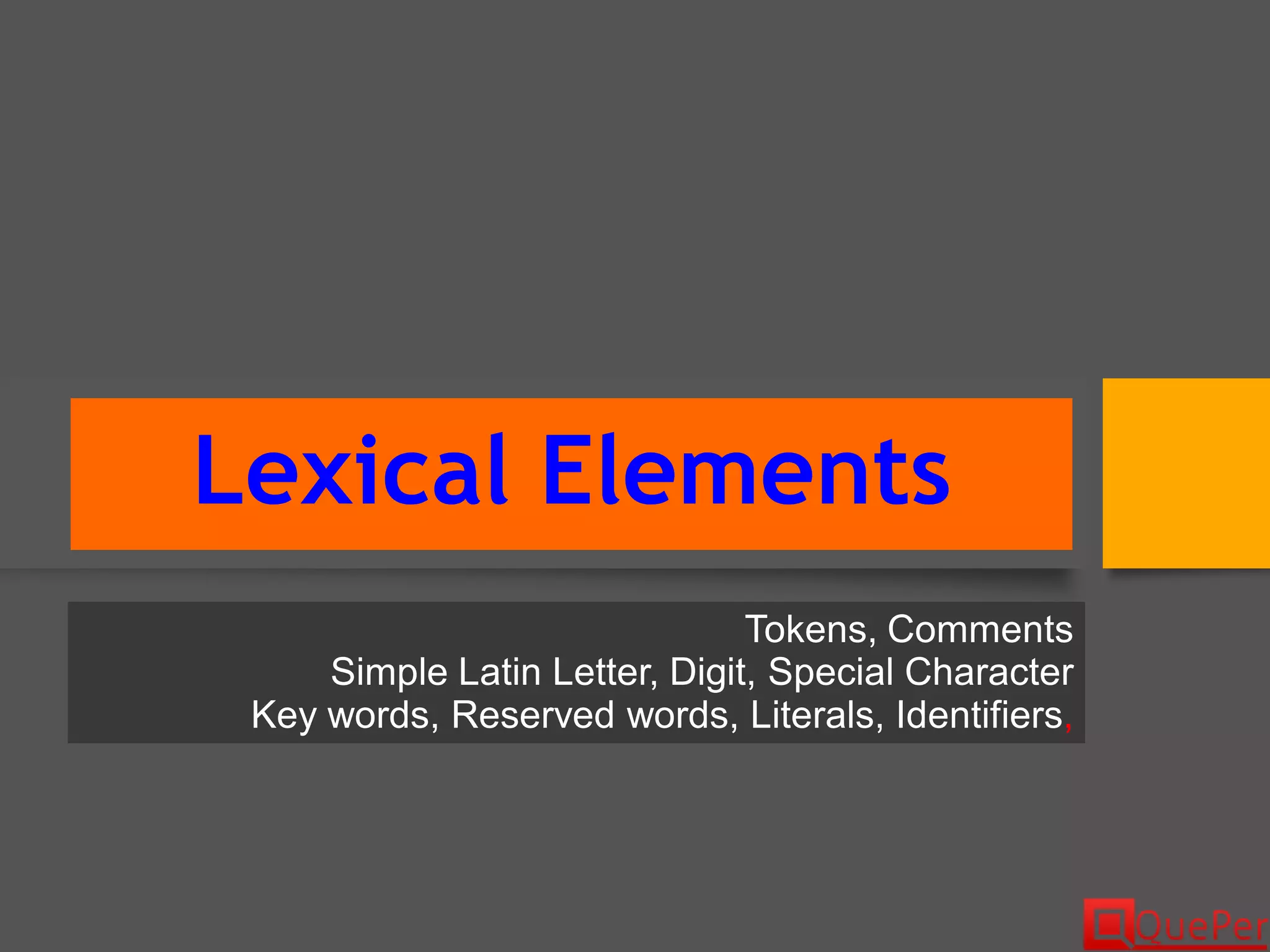
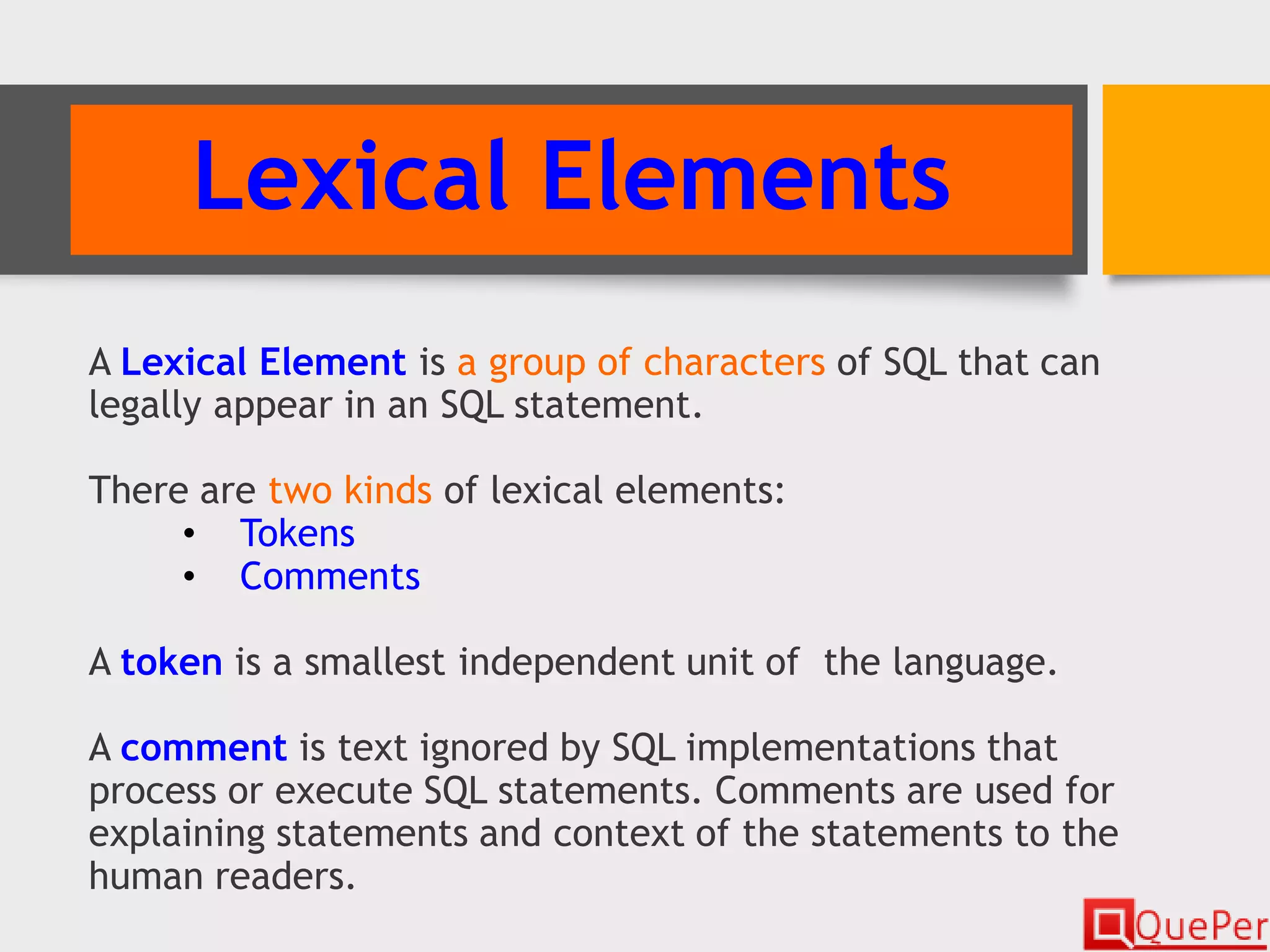
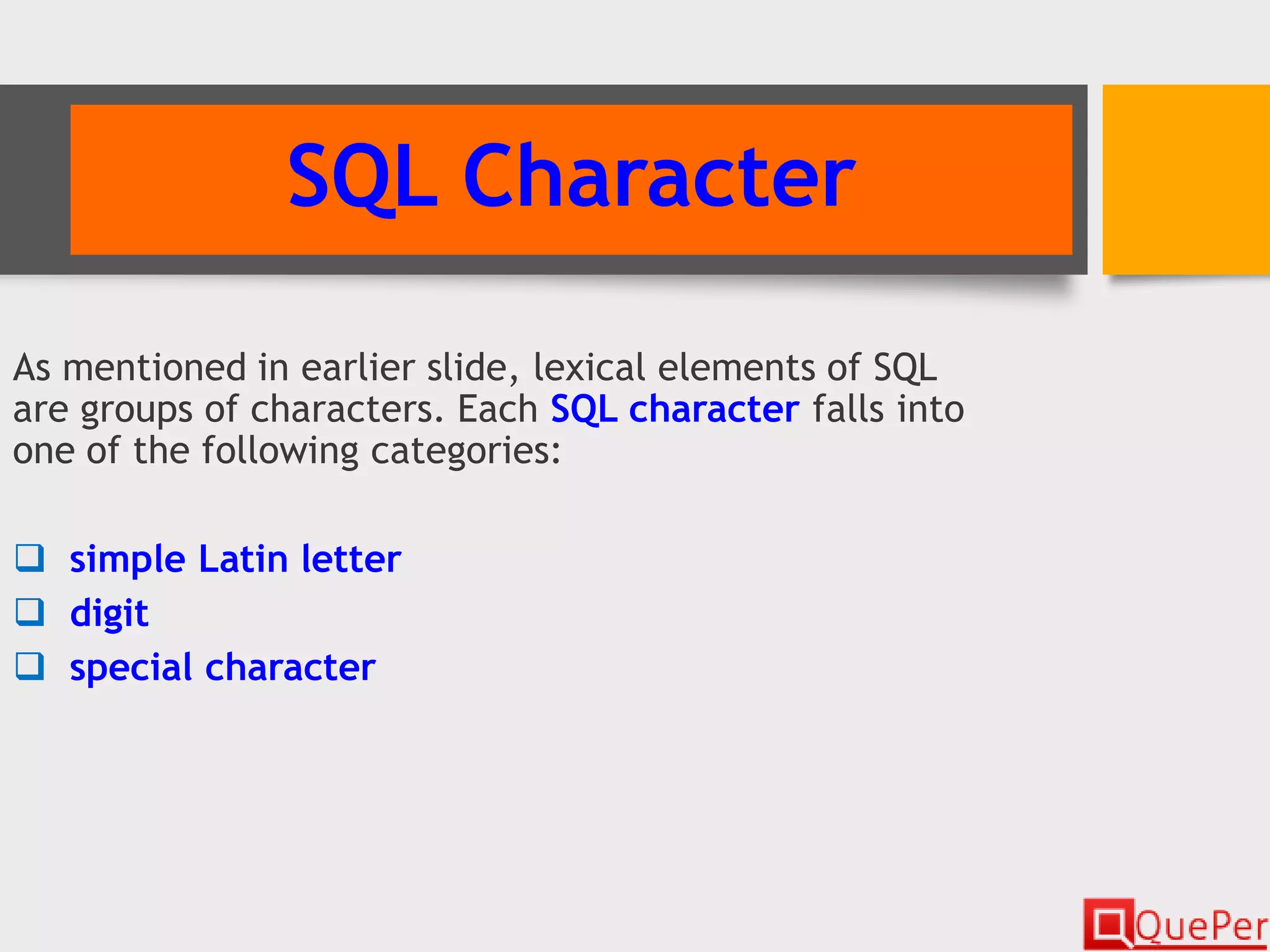
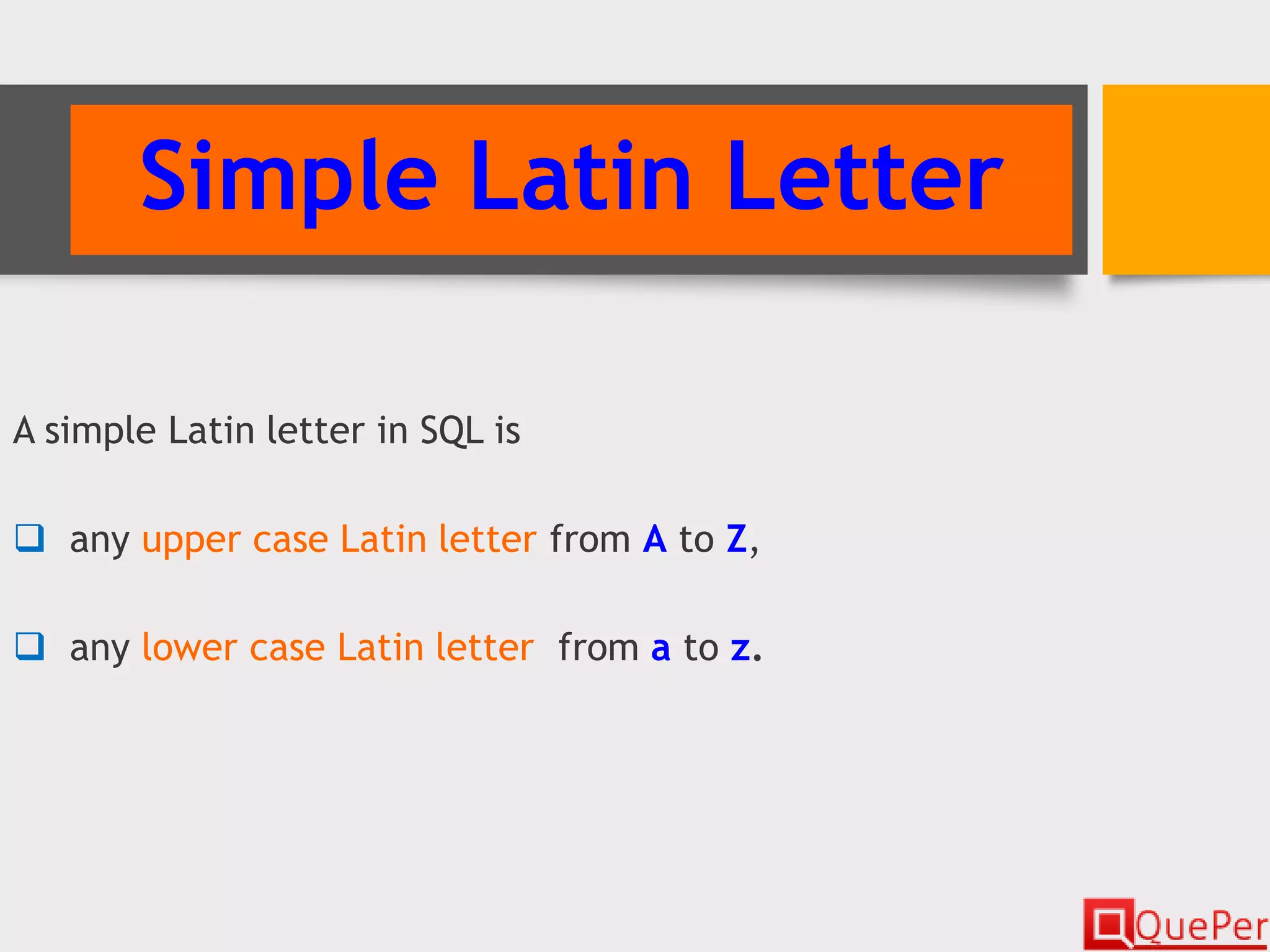
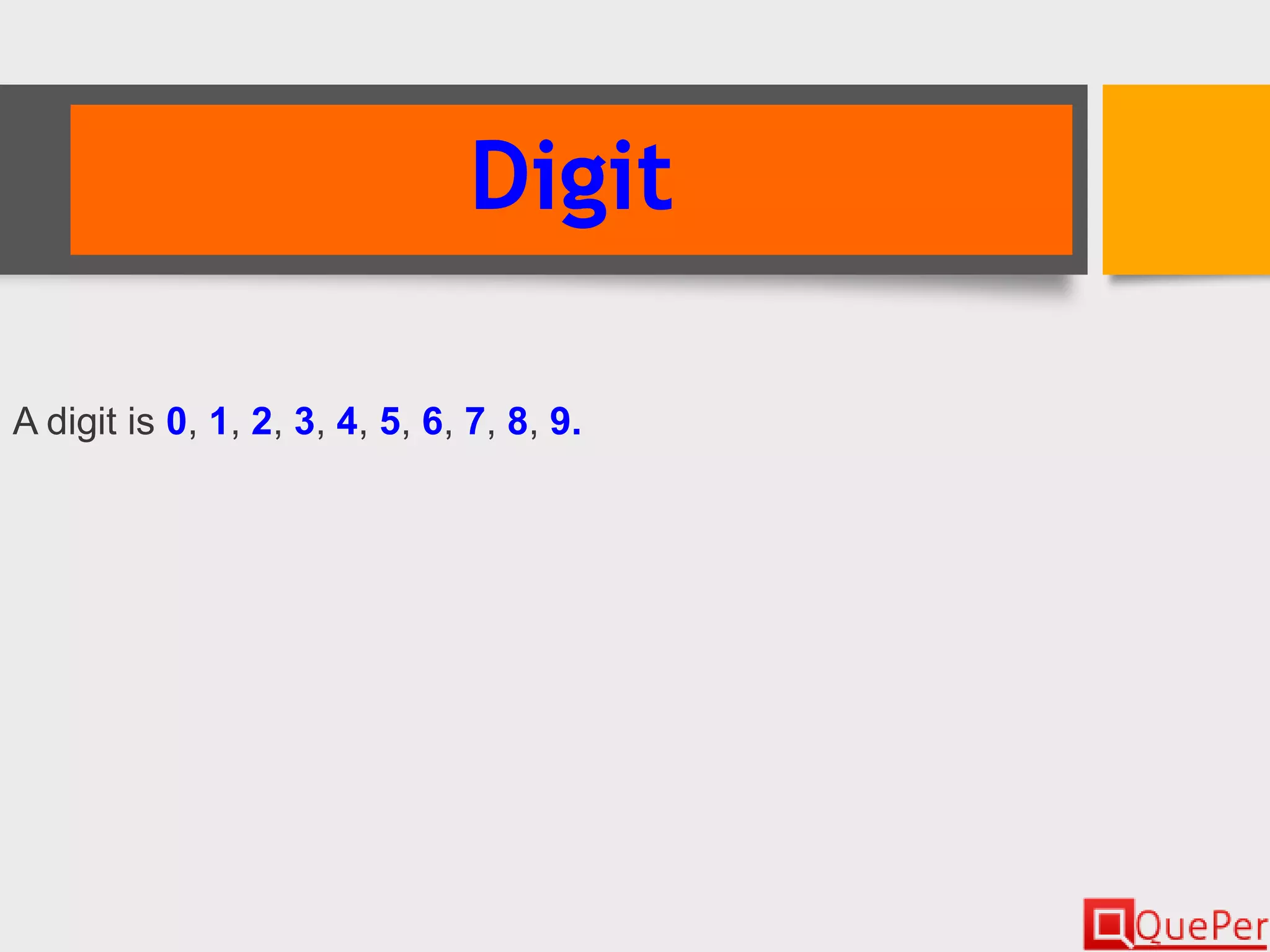
![Special Character An SQL special character is a character other than Latin letters and digits. SQL special characters are: “ , ‘, <space>, %, &, *, (, ), +, -, , , ., :, ;, ?, <, =, >, [, ], _, |, {, }, ^.](https://image.slidesharecdn.com/dbsys-p01-c03-s01-04-sql-intro-160414113426/75/Database-Systems-Introduction-to-SQL-Chapter-3-1-42-2048.jpg)
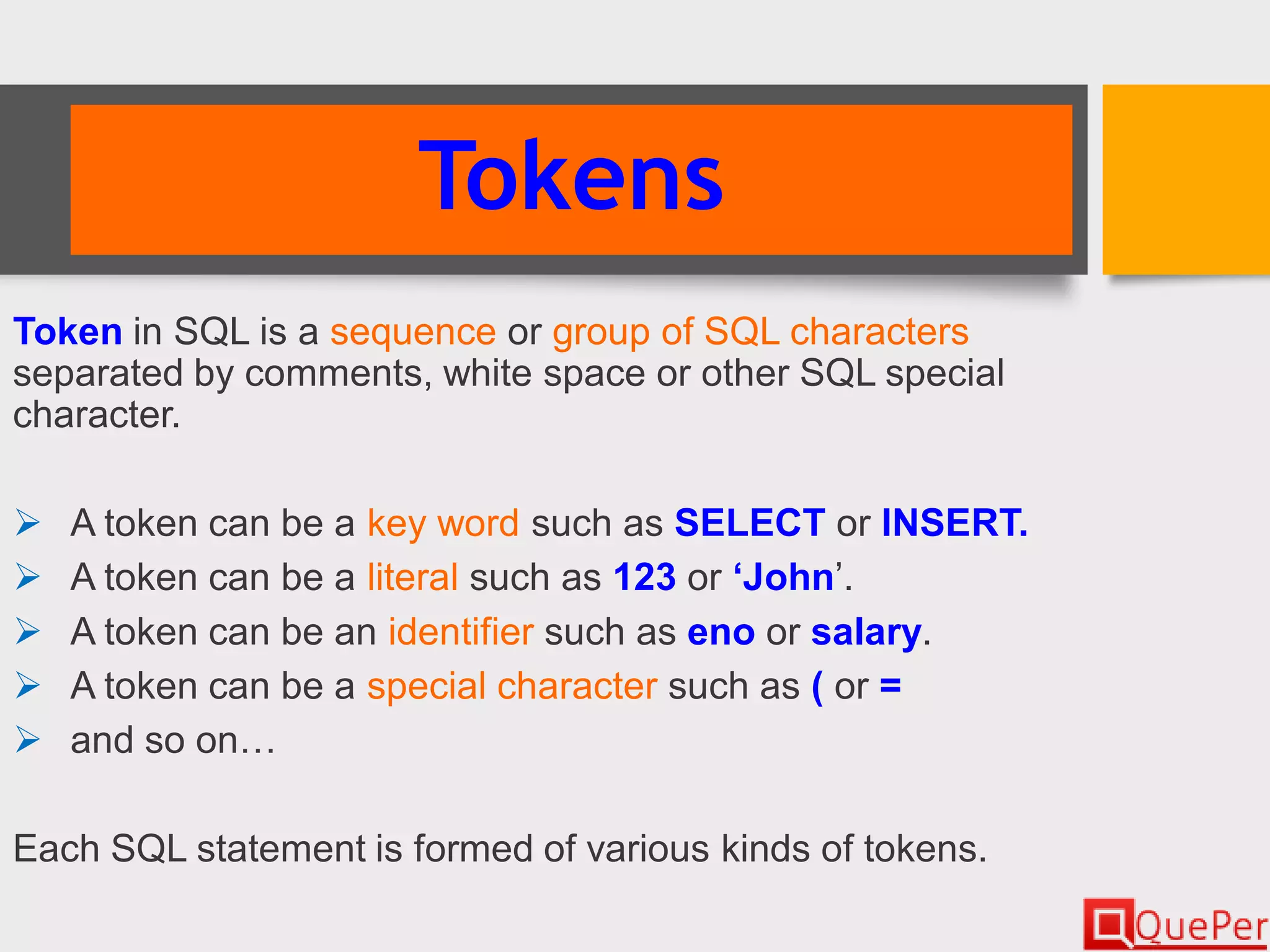
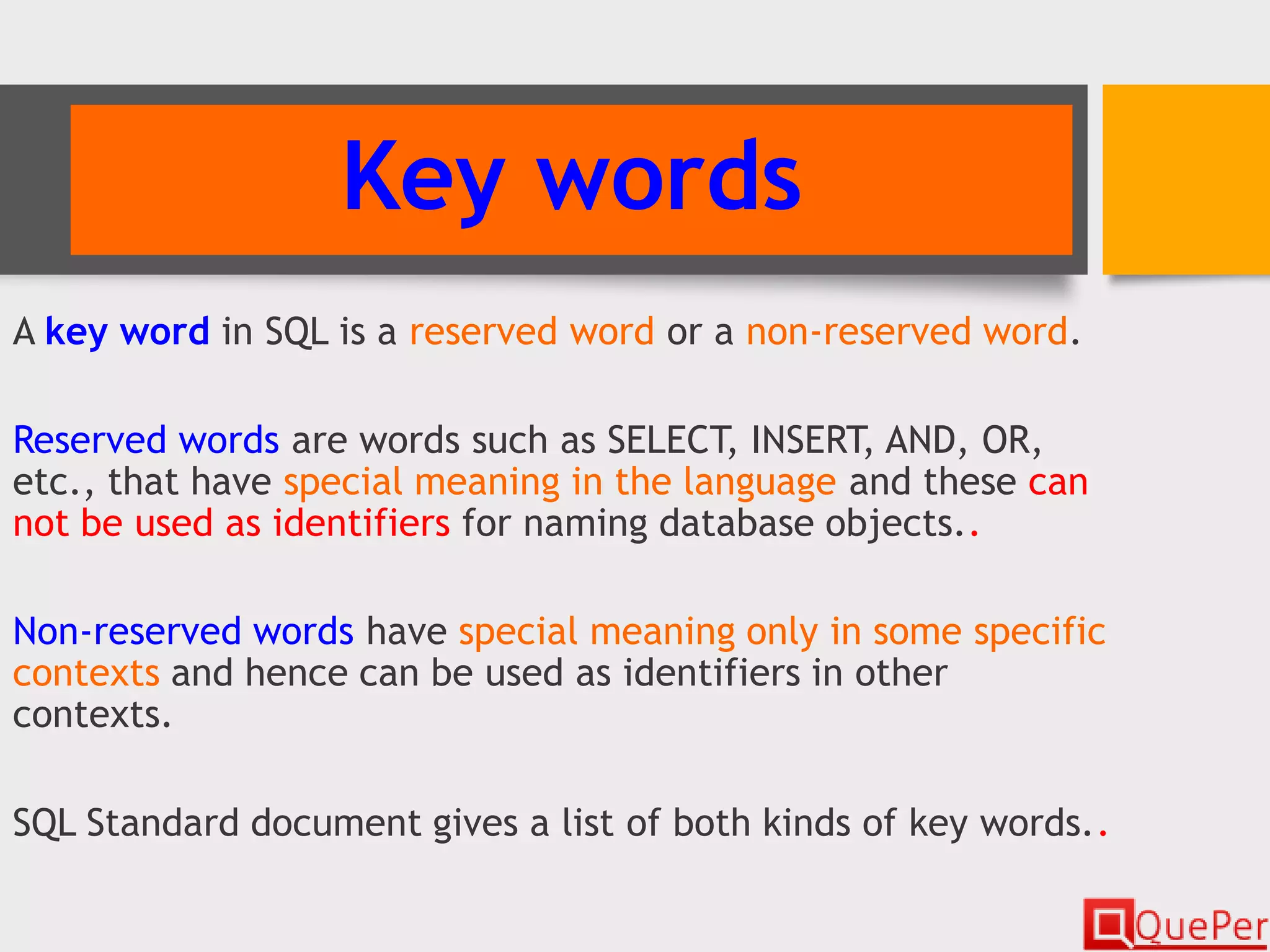
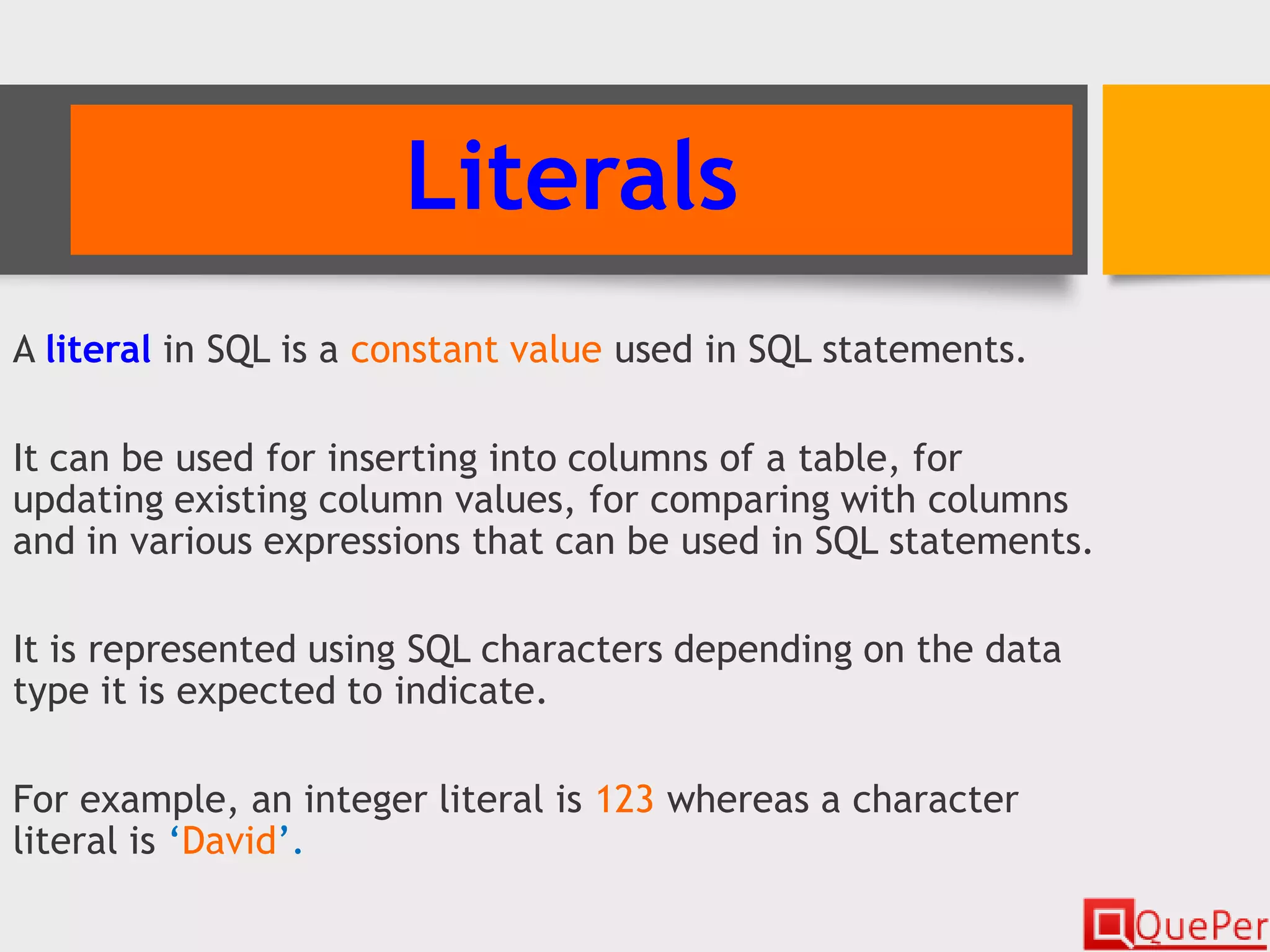
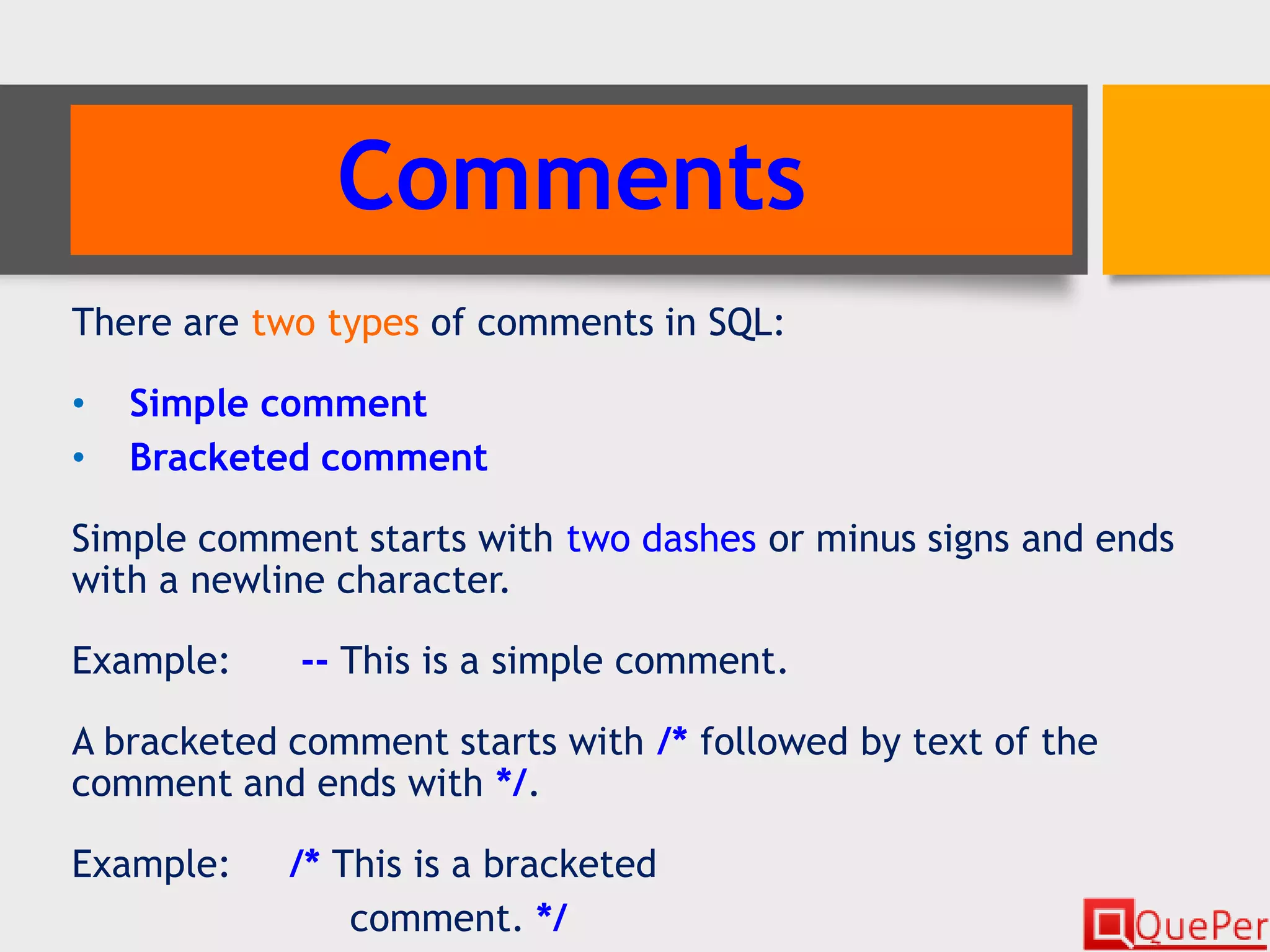
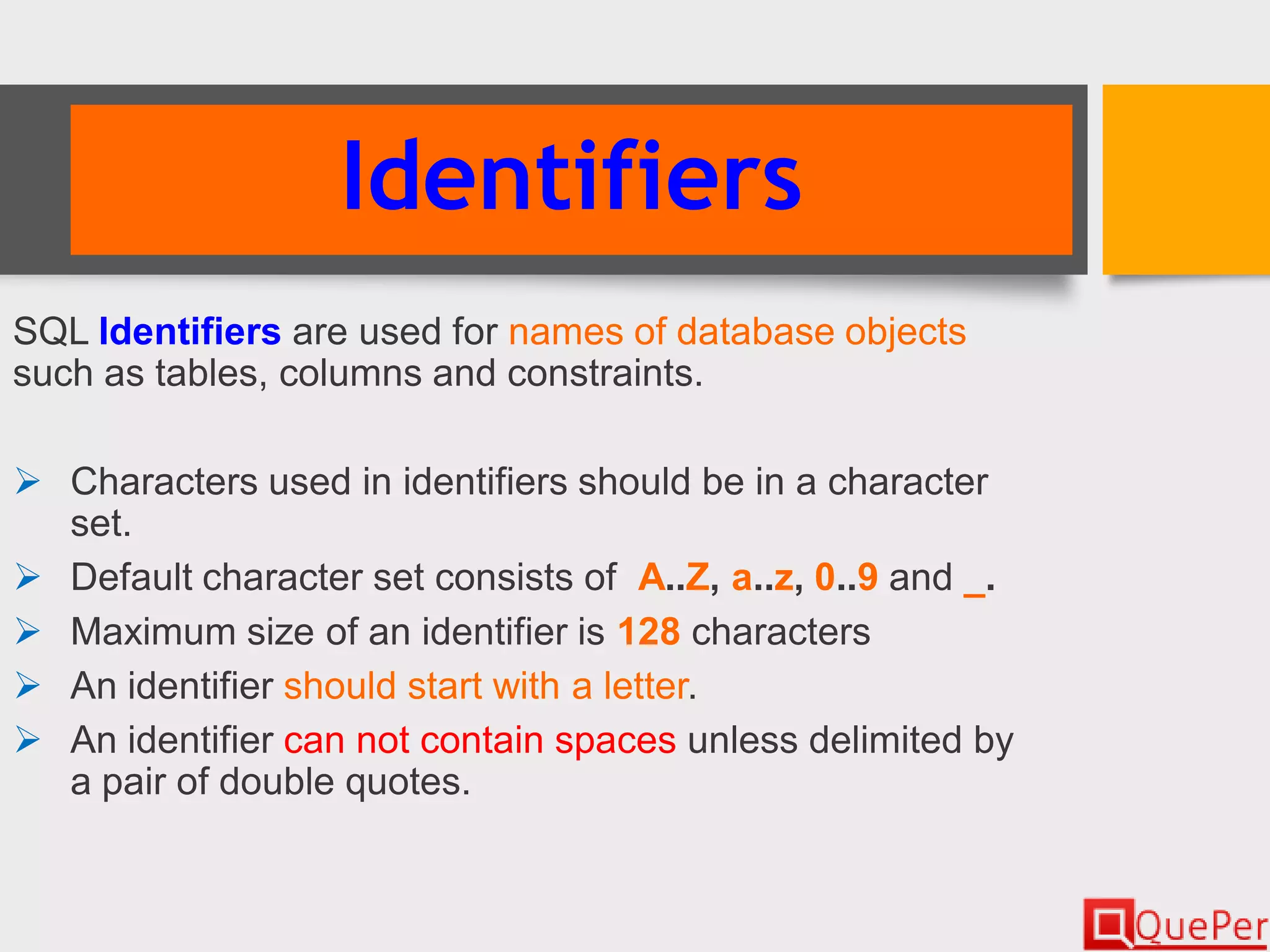
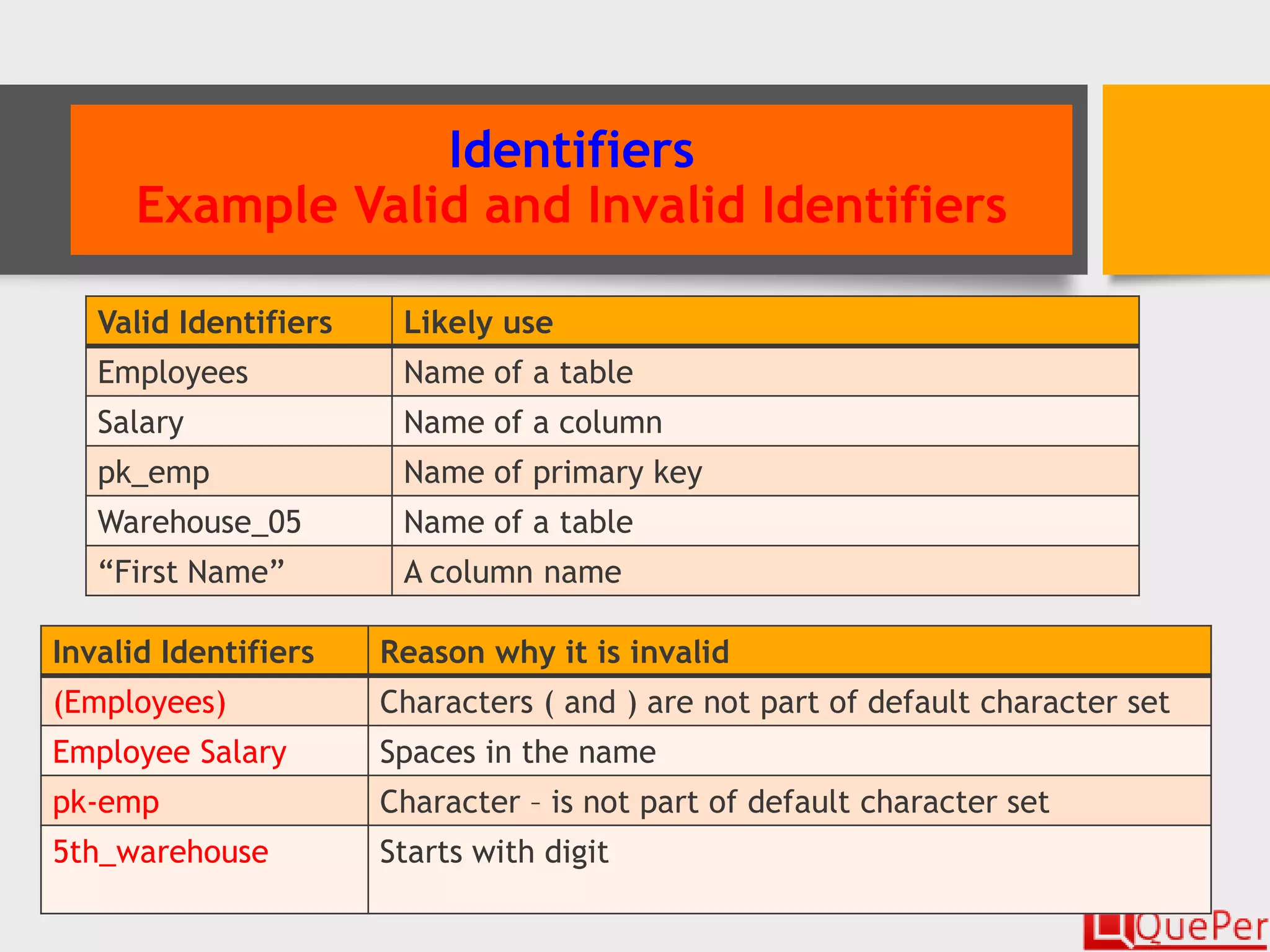
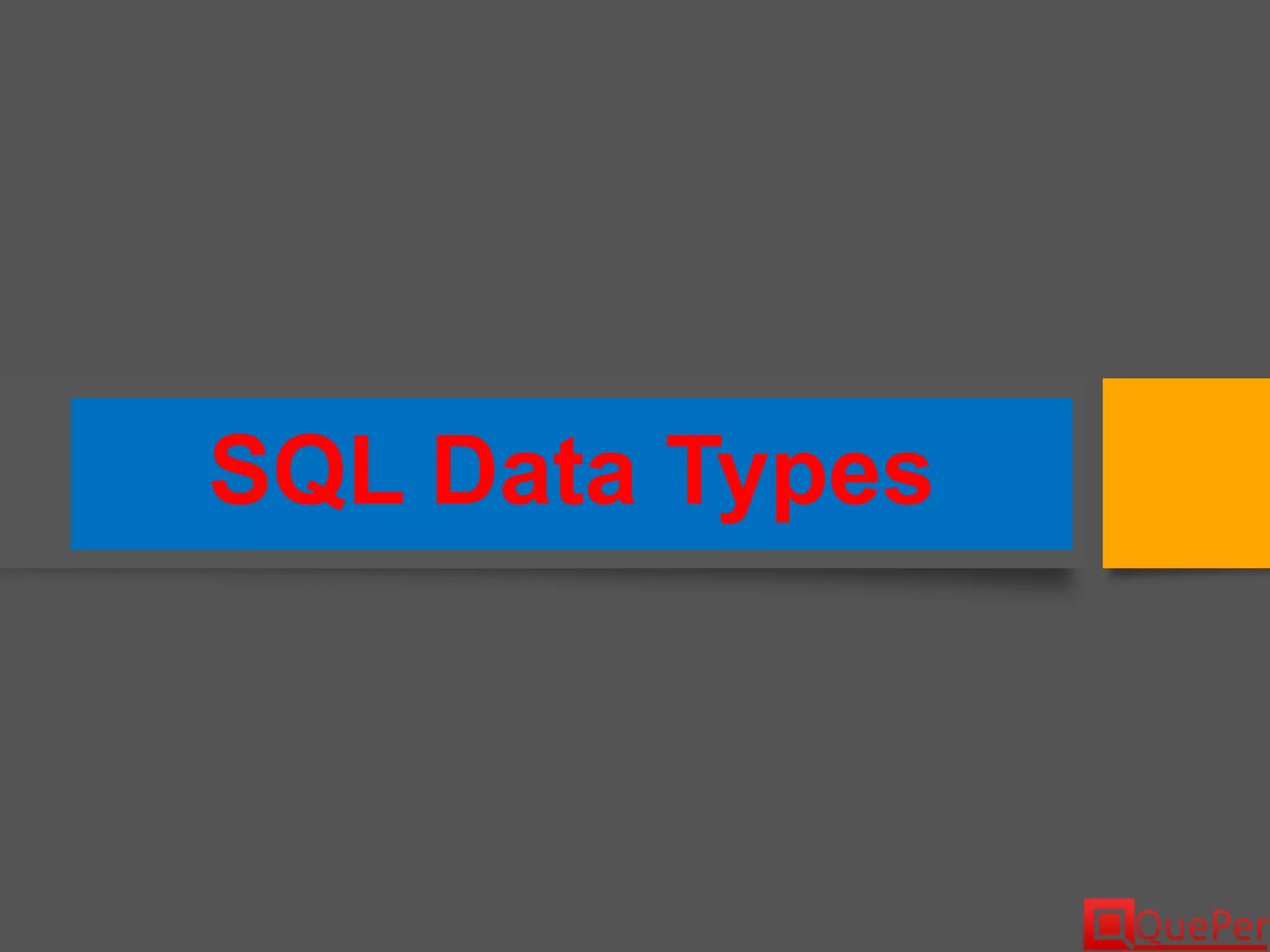
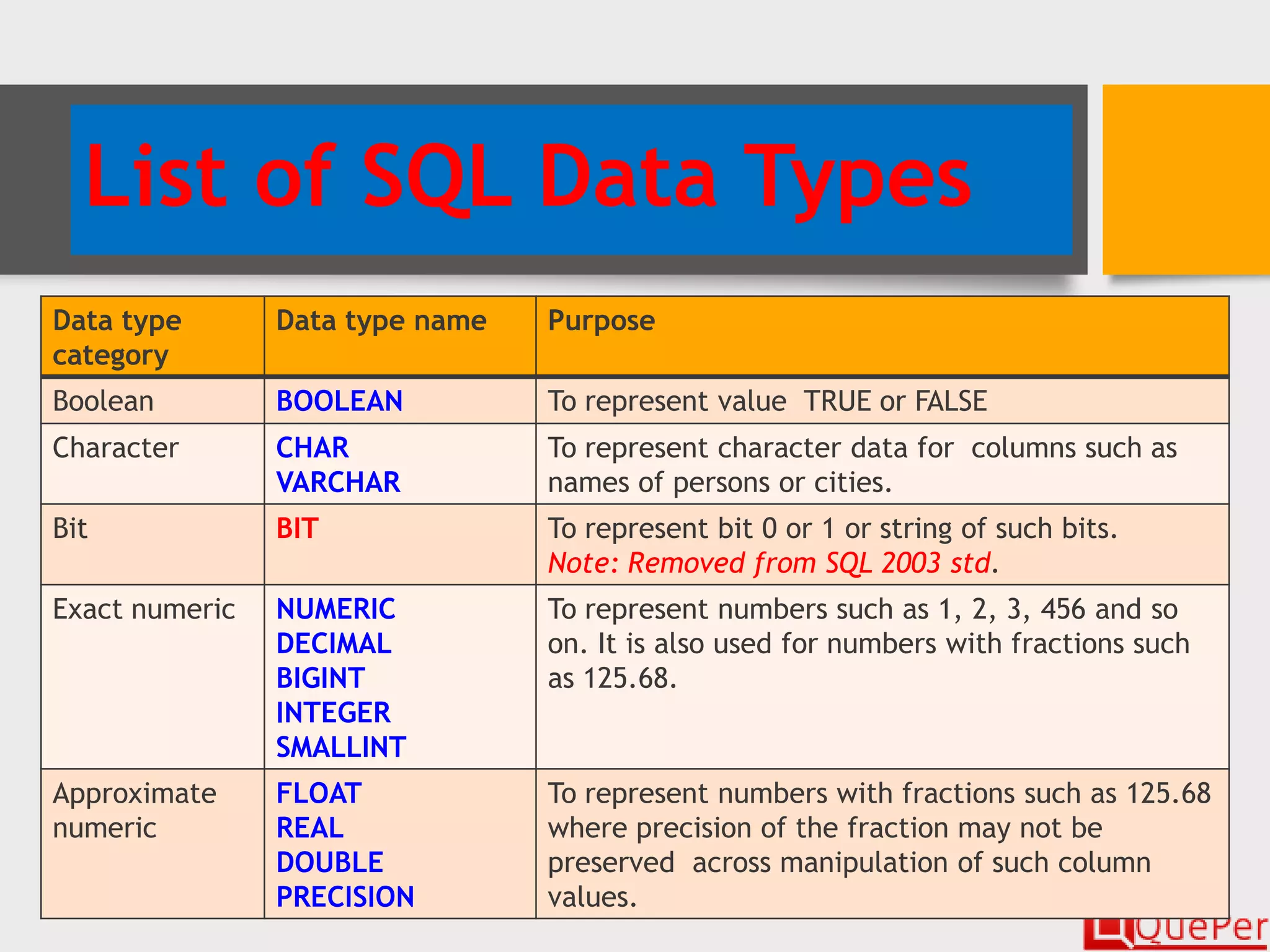
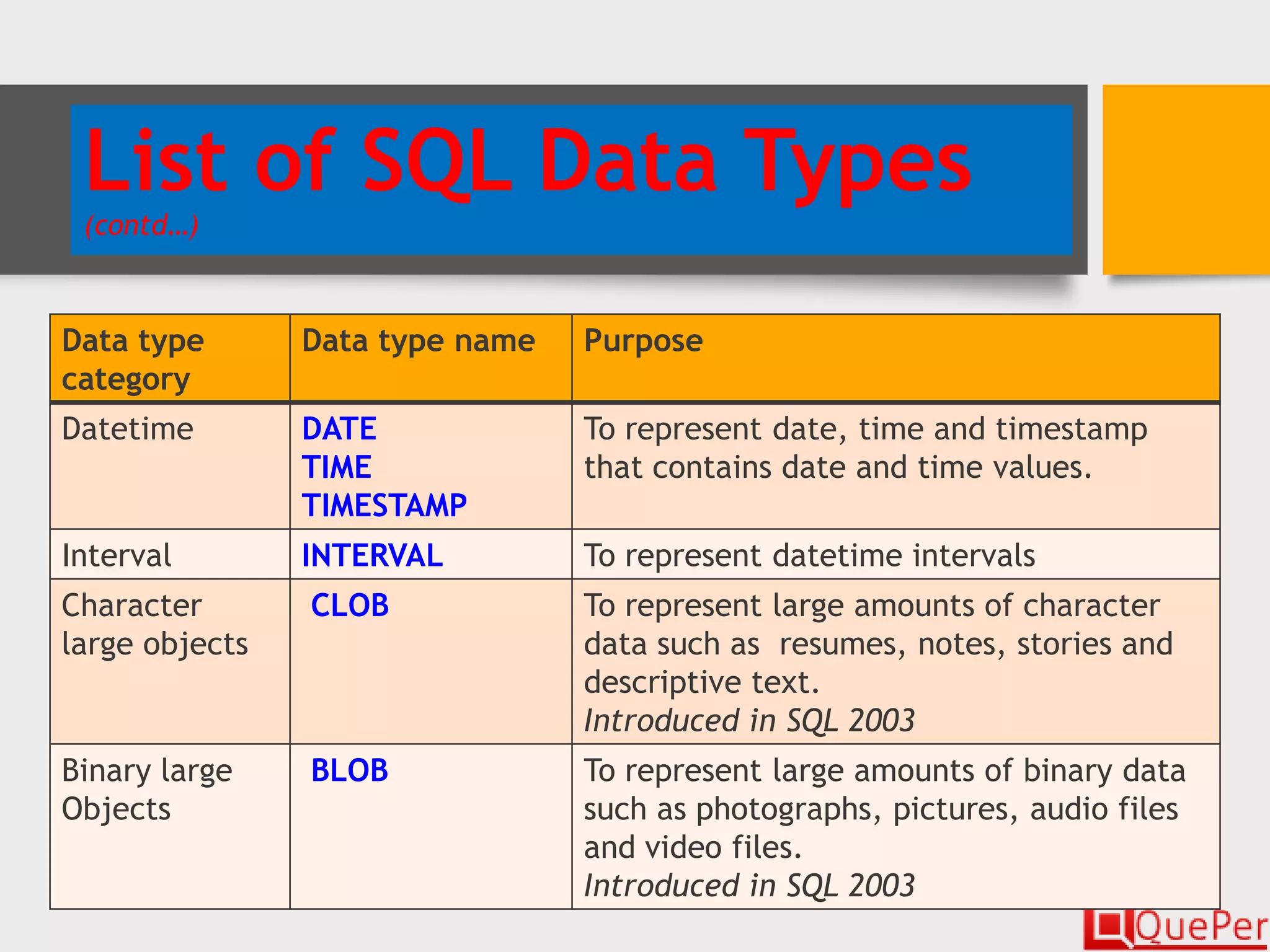
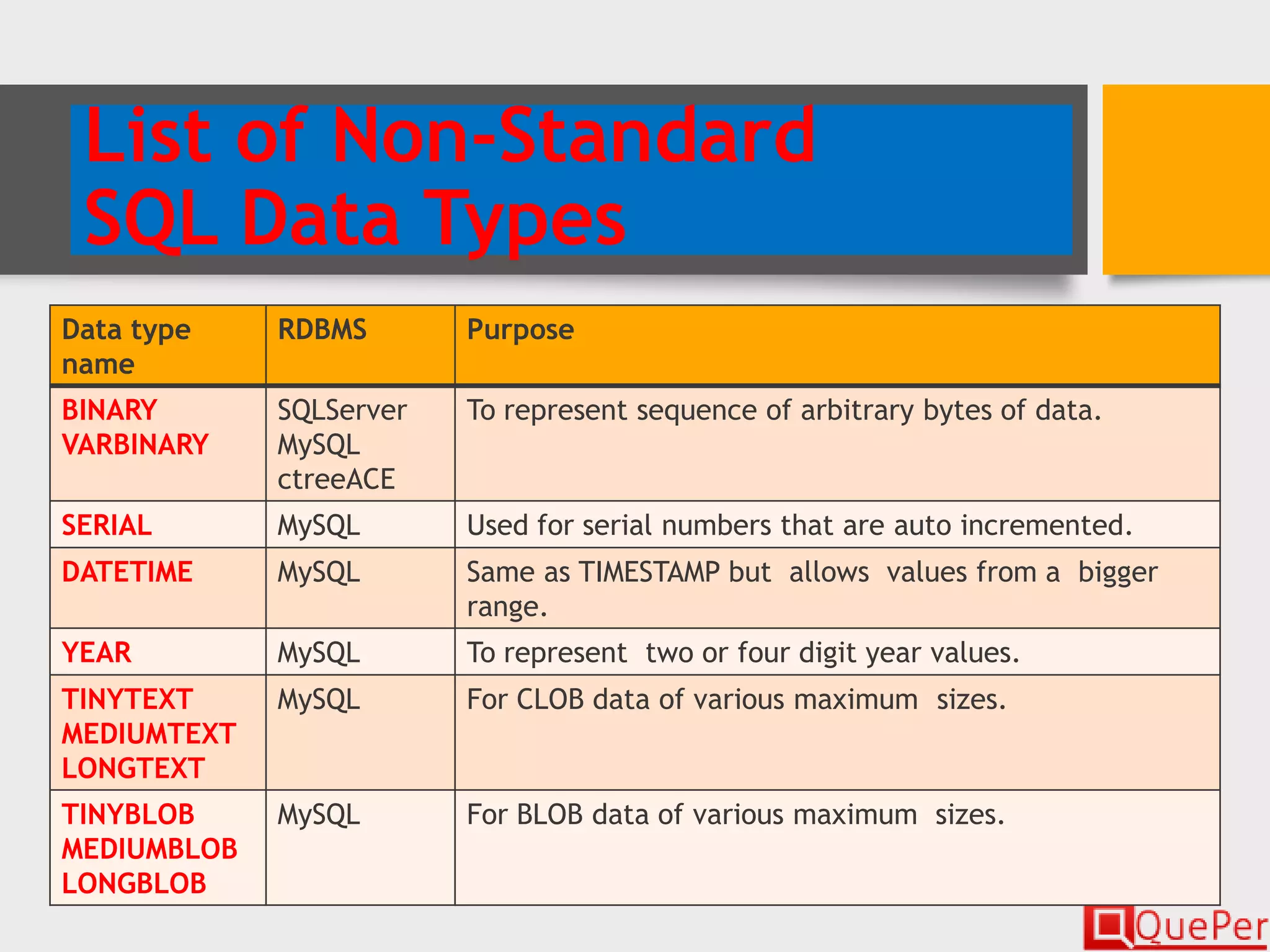
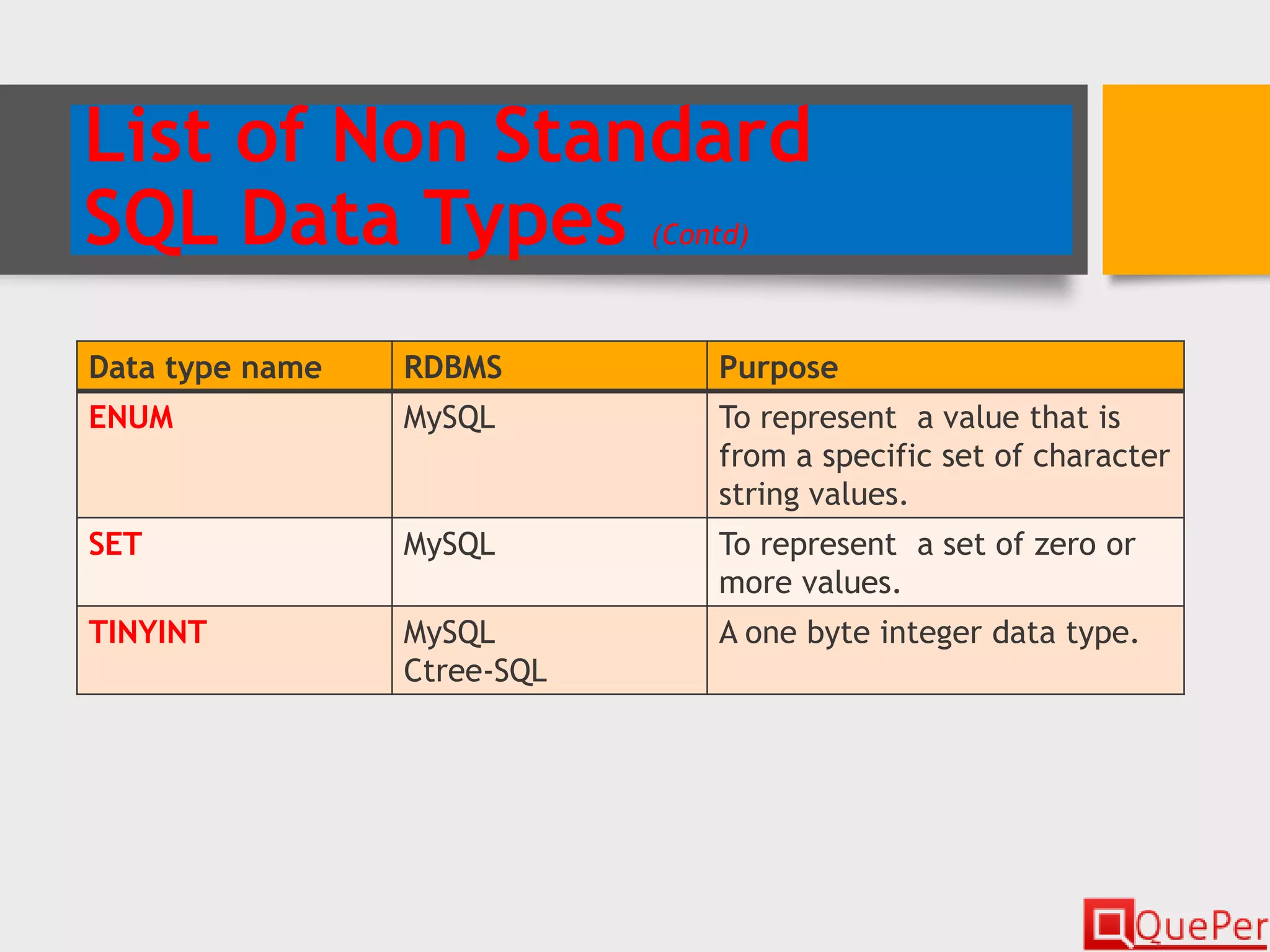
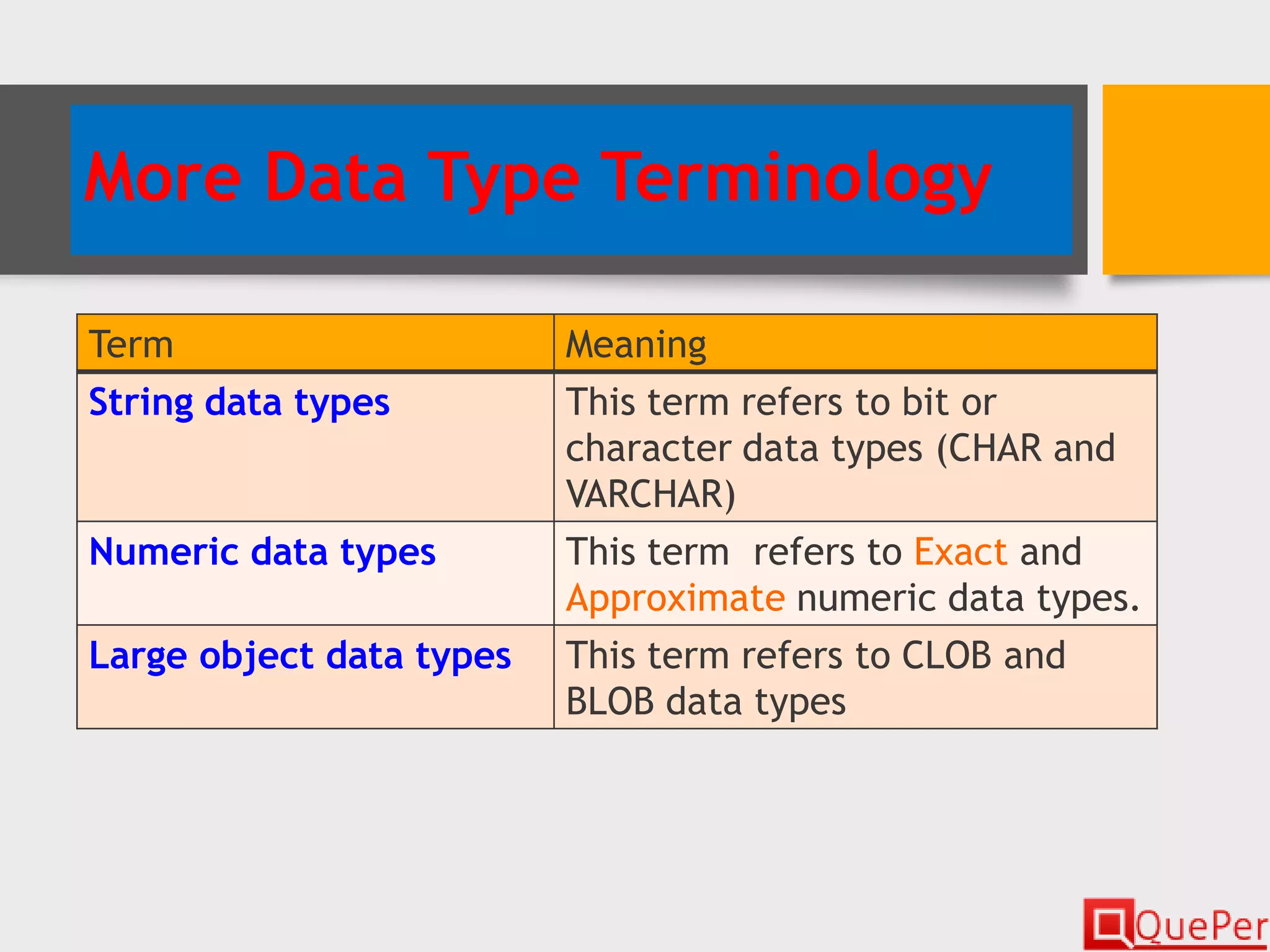
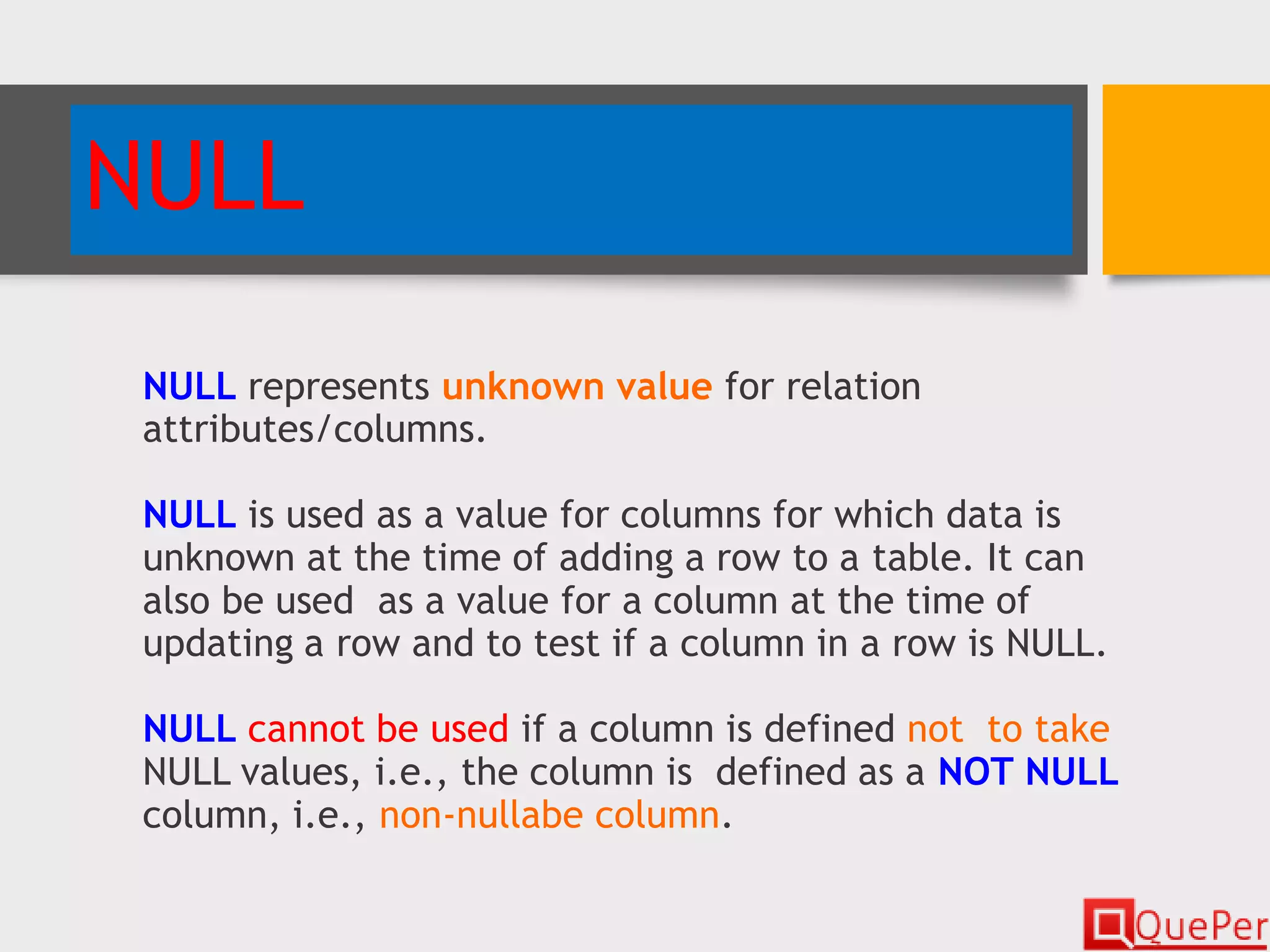
![Syntax Conventions Symbol Interpretation Example | Syntax elements separated by this symbol are alternatives. BOOLEAN | INTEGER [ ] An optional syntax element, i.e., the syntax element need not be used. CHAR [(length)] { } Used to group tokens together to indicate contents of the flower brackets is a one syntax element. {CHARACTER | CHAR} [(length)] ... Previous syntax element can appear zero or more times. (column-name [, column-name] ...) The following conventions are used in representing syntax of SQL:](https://image.slidesharecdn.com/dbsys-p01-c03-s01-04-sql-intro-160414113426/75/Database-Systems-Introduction-to-SQL-Chapter-3-1-56-2048.jpg)
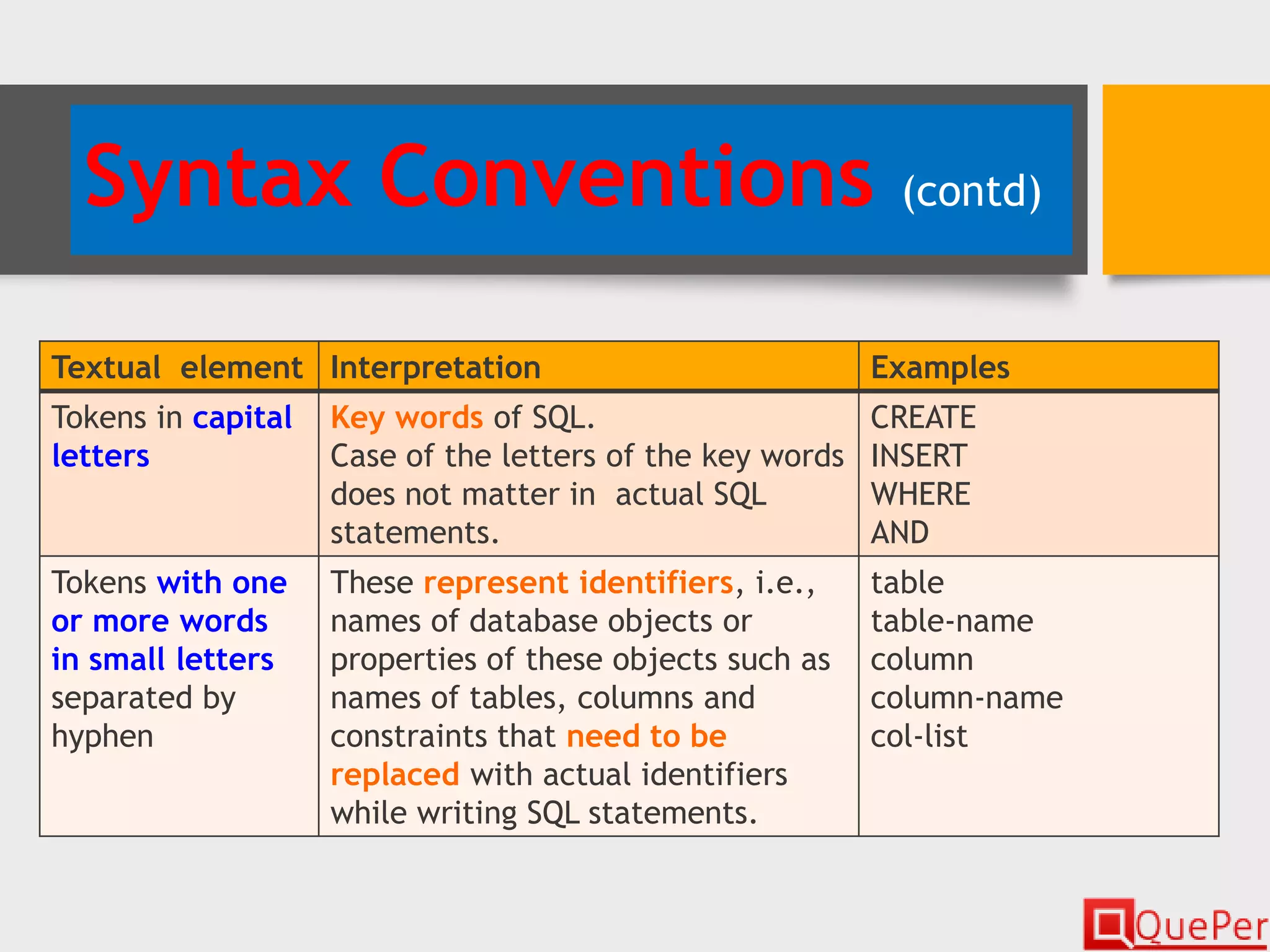
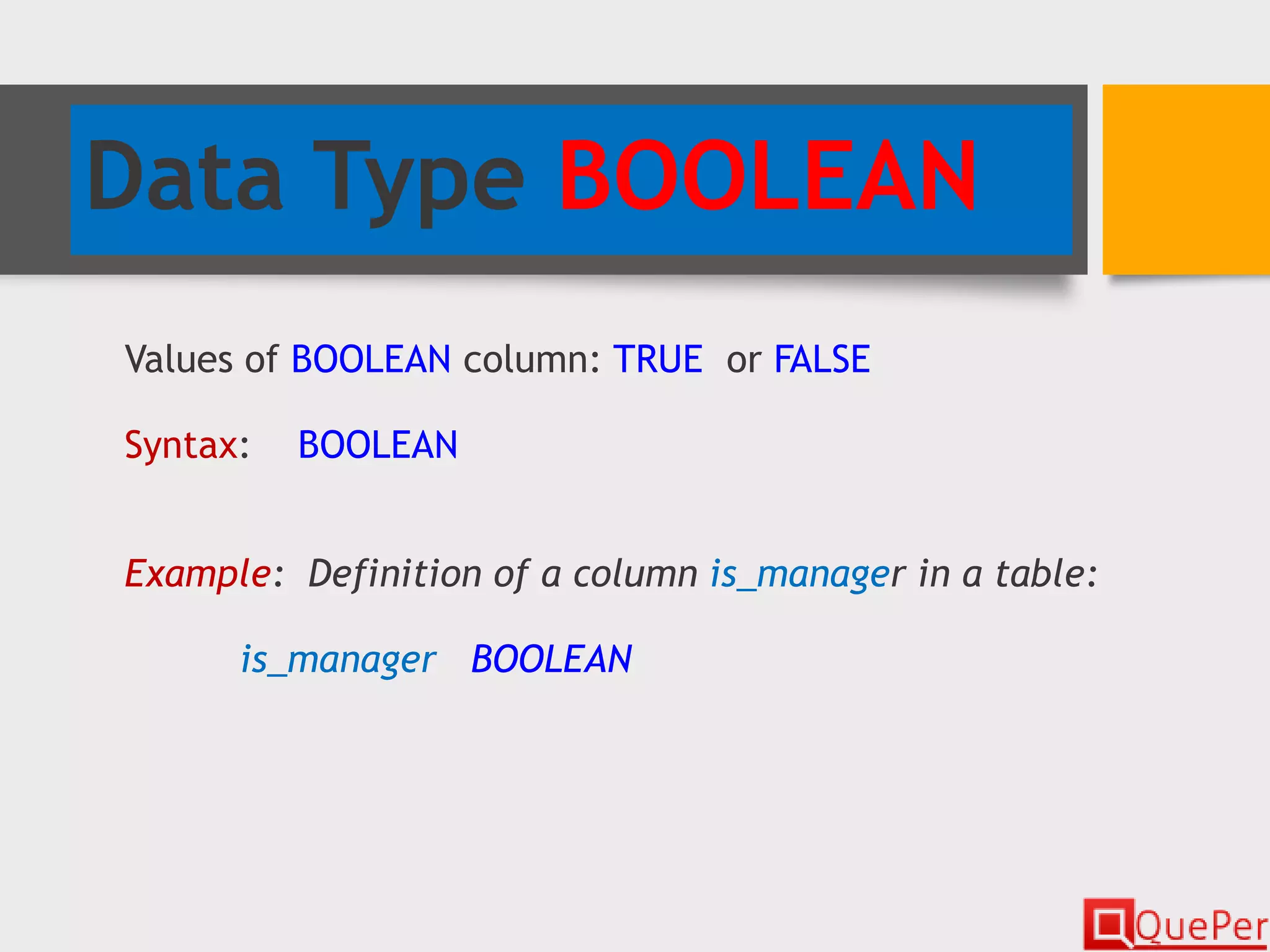
![Data Type CHARACTER Data type CHARACTER or CHAR is used for columns in which a sequence of characters such as names of persons, cities, etc., need to be stored. Syntax: {CHARACTER | CHAR } [(length)] length: Length of the string. 1 if not specified. Examples: book_title CHARACTER(50) book_category CHAR Note: CHAR is a fixed-length data type.](https://image.slidesharecdn.com/dbsys-p01-c03-s01-04-sql-intro-160414113426/75/Database-Systems-Introduction-to-SQL-Chapter-3-1-59-2048.jpg)
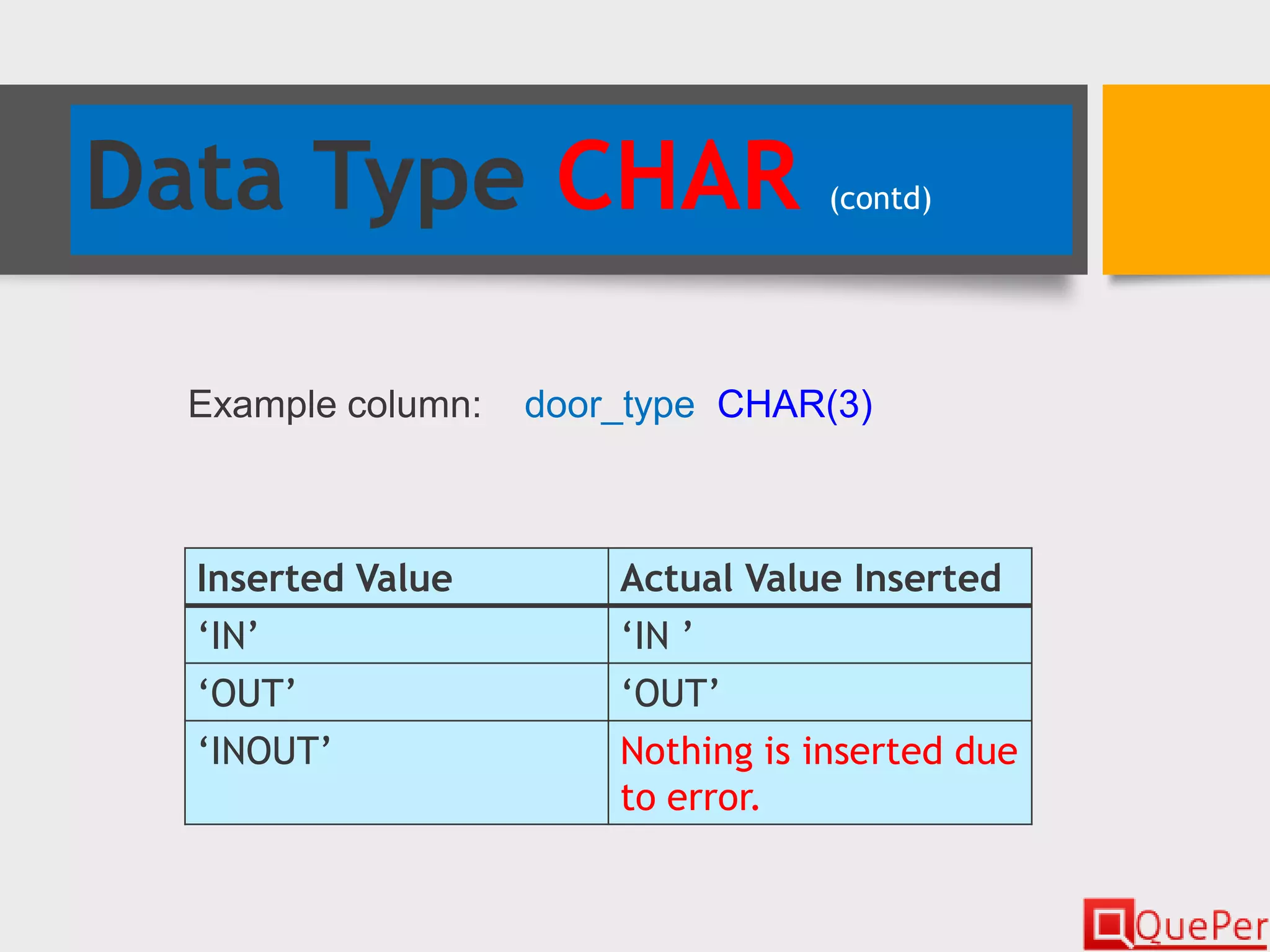
![Data Type VARCHAR VARCHAR data type means VARYING CHARACTER data type where size of data stored in such a column in each row can vary according to the actual size of the data. If data size is less than the size specified for the column at the time of its definition, data is not padded with blanks. Syntax: { VARCHAR | CHARACTER VARYING | CHAR VARYING } [ (length) ] Example: book_synopsis VARCHAR(500)](https://image.slidesharecdn.com/dbsys-p01-c03-s01-04-sql-intro-160414113426/75/Database-Systems-Introduction-to-SQL-Chapter-3-1-61-2048.jpg)
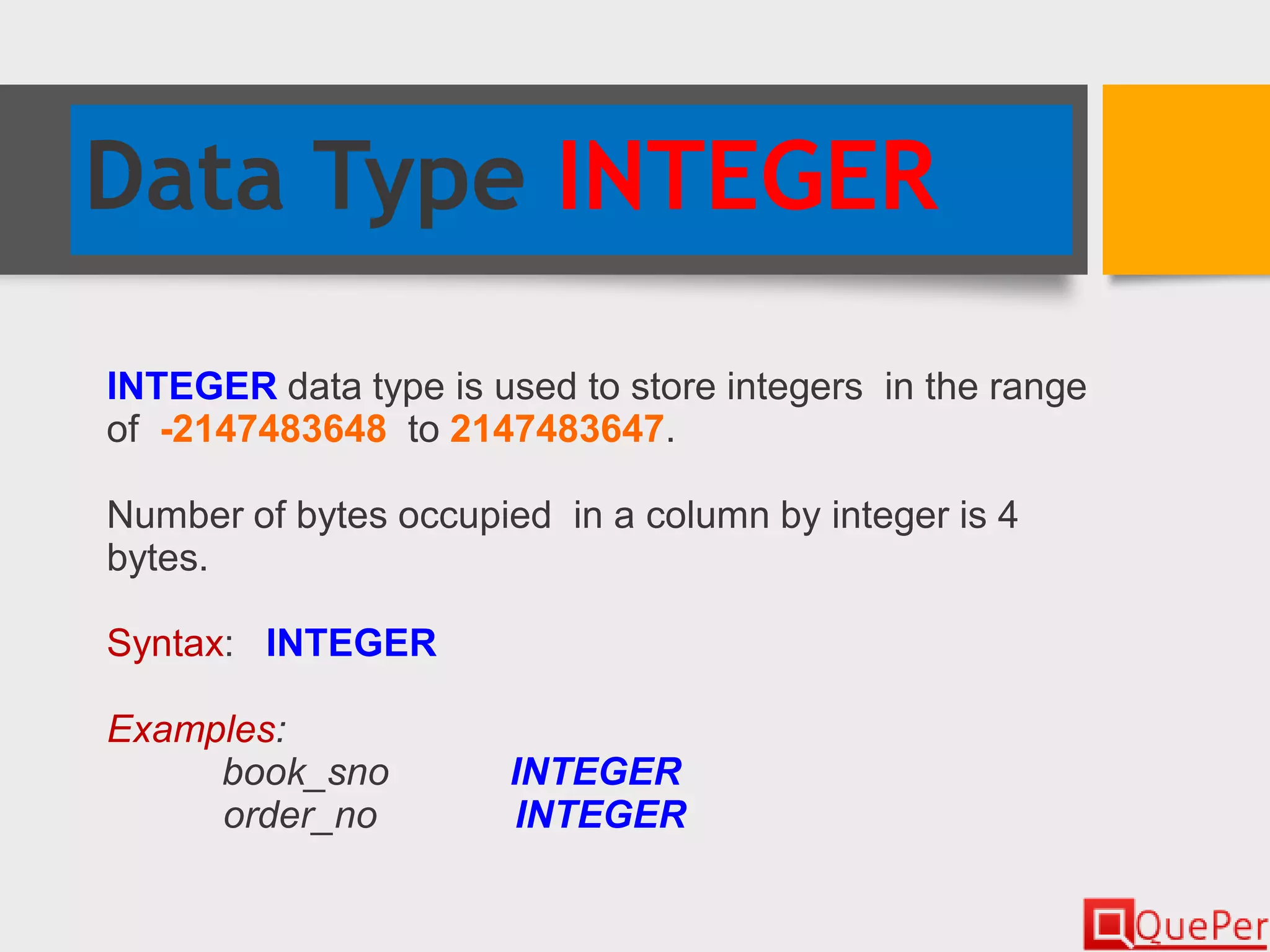
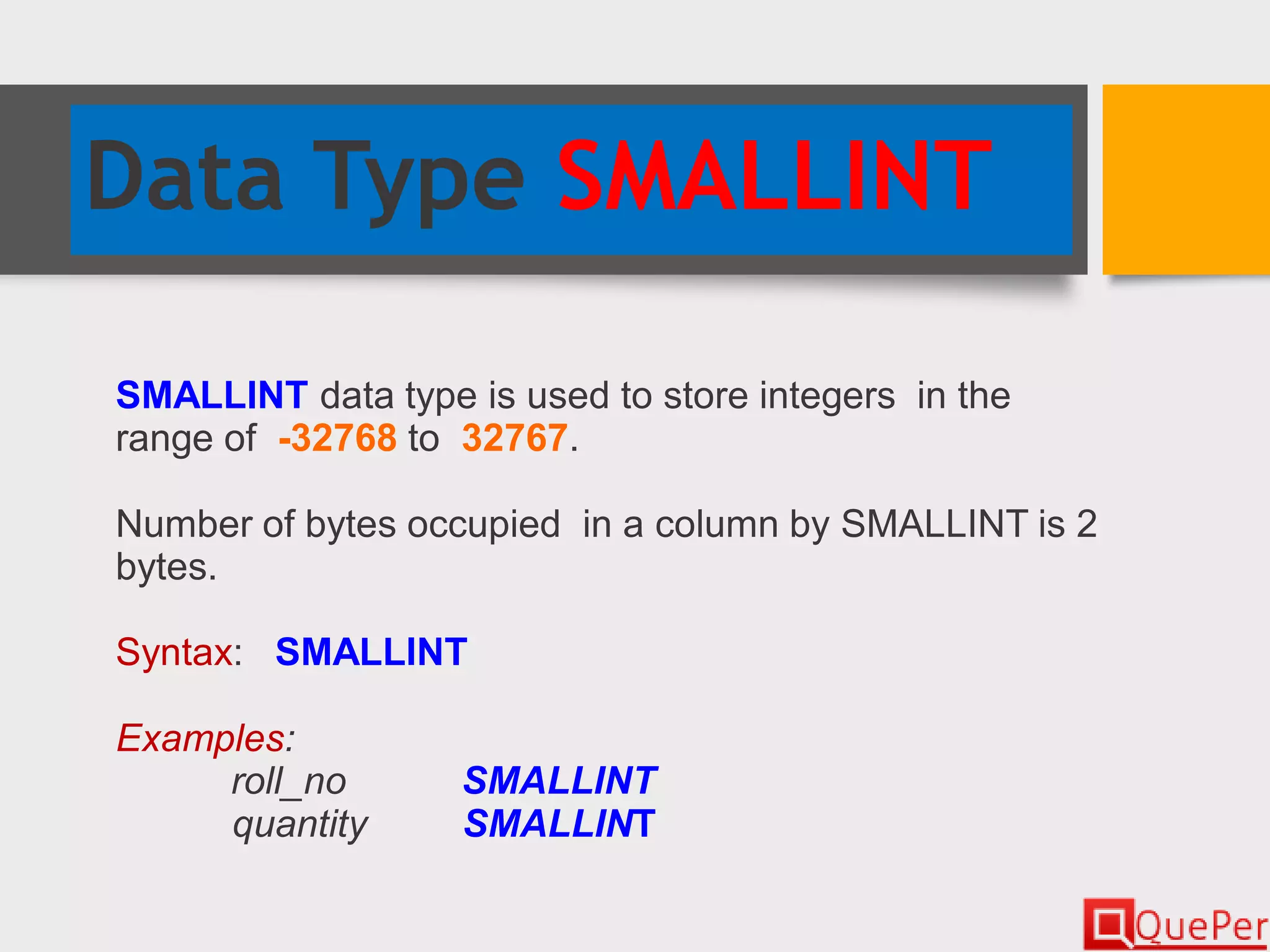
![Data Type NUMERIC NUMERIC data type is used to store numbers that can have fractions. Syntax: NUMERIC [ ( precision [, scale] ) ] precision – Total number of digits including number of decimal places but excluding decimal point. Default value is RDBMS specific. scale – Number of decimal places. Default value is 0. Examples: price NUMERIC (8,2) discount NUMERIC (4,1) interest NUMERIC (4,2)](https://image.slidesharecdn.com/dbsys-p01-c03-s01-04-sql-intro-160414113426/75/Database-Systems-Introduction-to-SQL-Chapter-3-1-64-2048.jpg)
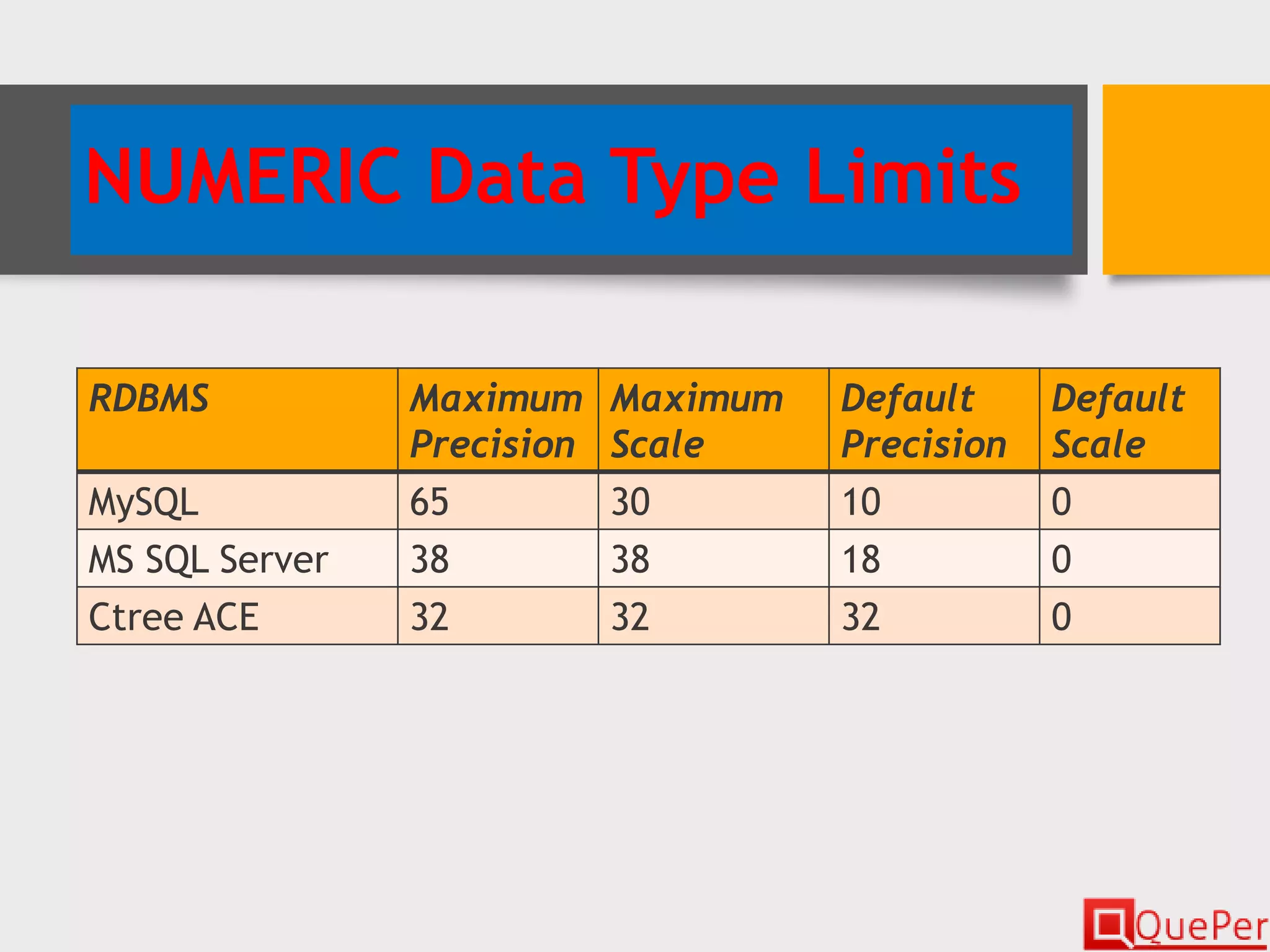
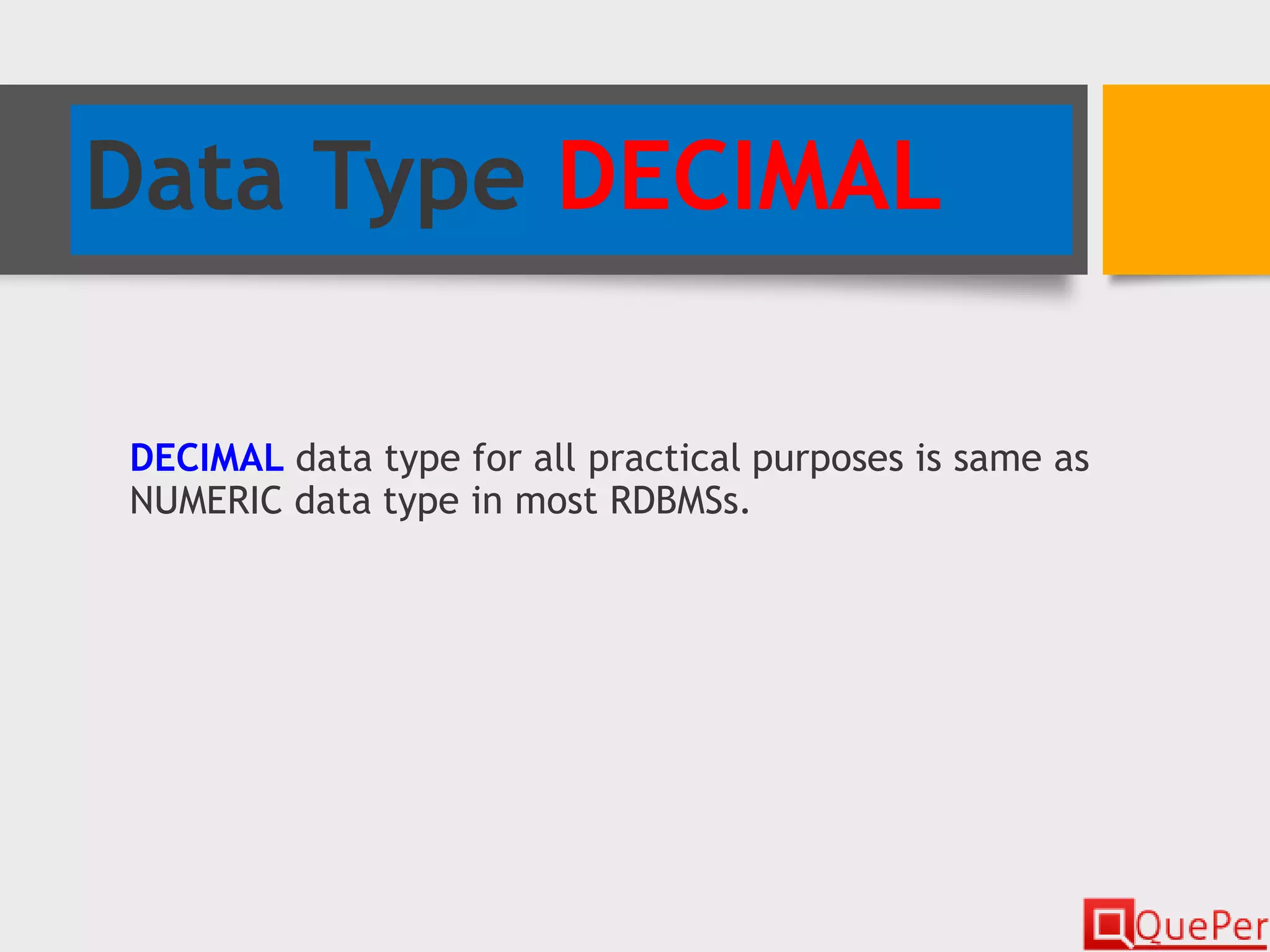
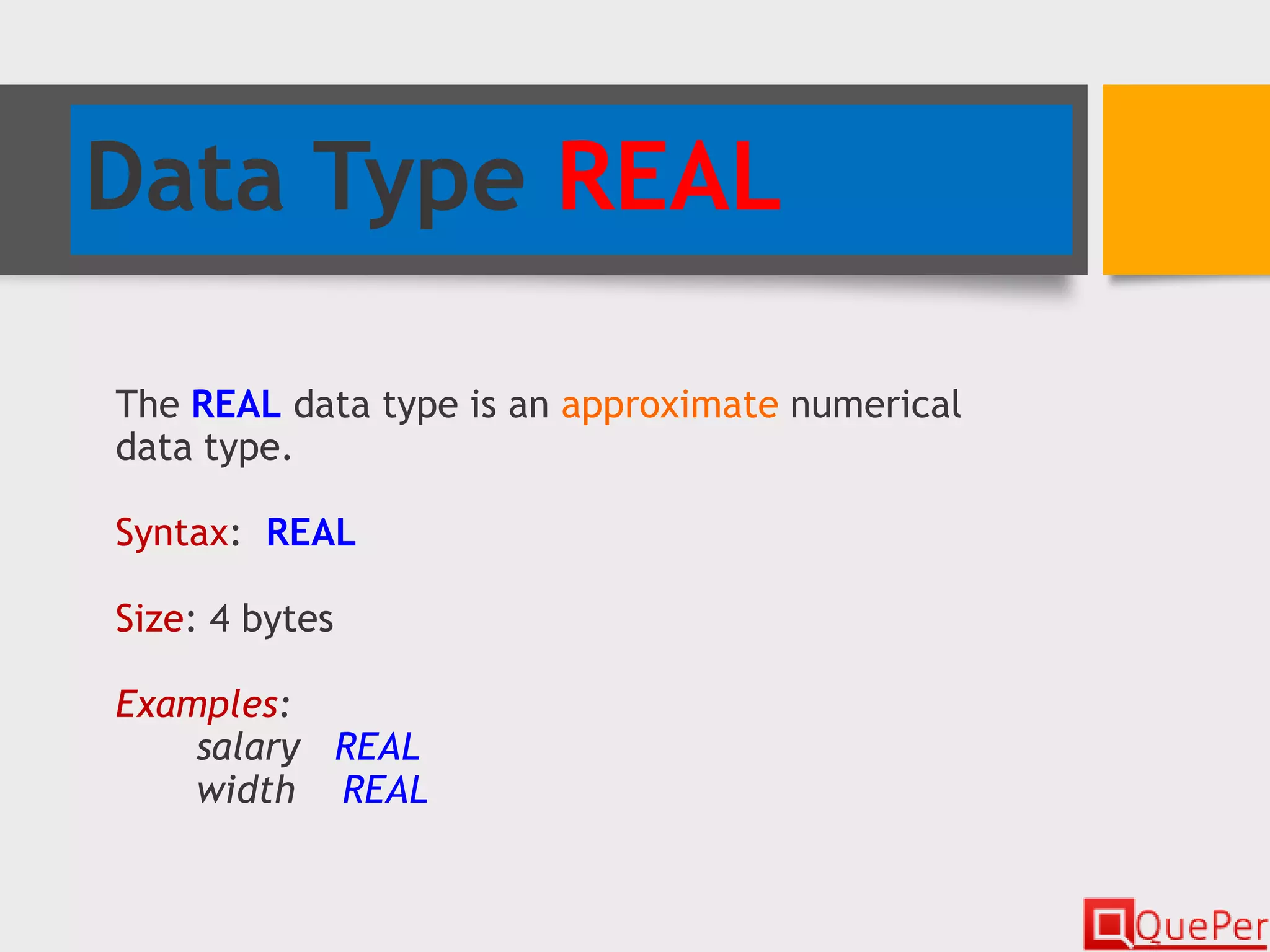
![Data Type FLOAT The FLOAT data type is an approximate numerical data type. Syntax: FLOAT [precision] precision – This indicates precision of mantissa. Size: 8 bytes Examples: distance FLOAT](https://image.slidesharecdn.com/dbsys-p01-c03-s01-04-sql-intro-160414113426/75/Database-Systems-Introduction-to-SQL-Chapter-3-1-68-2048.jpg)
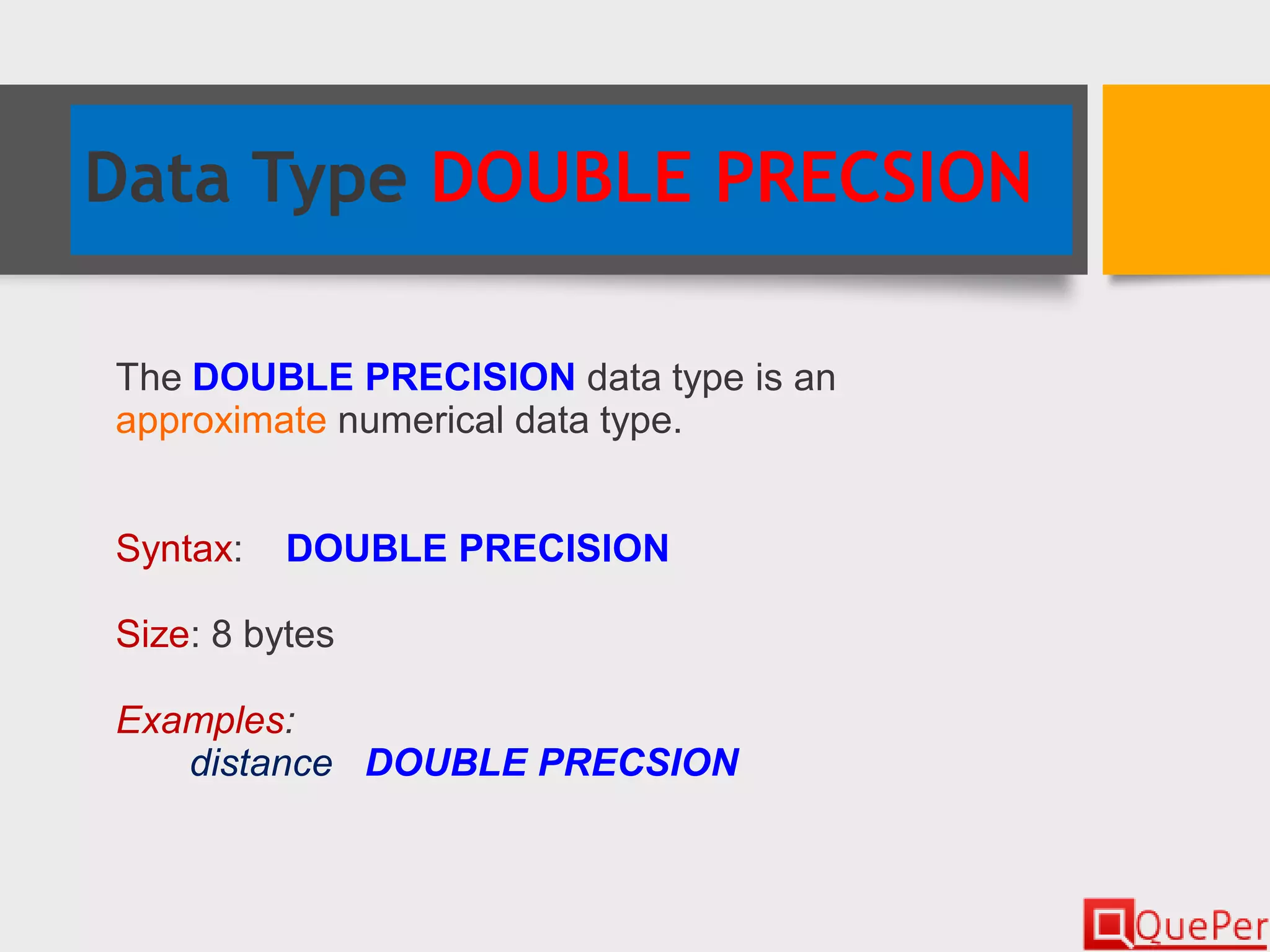
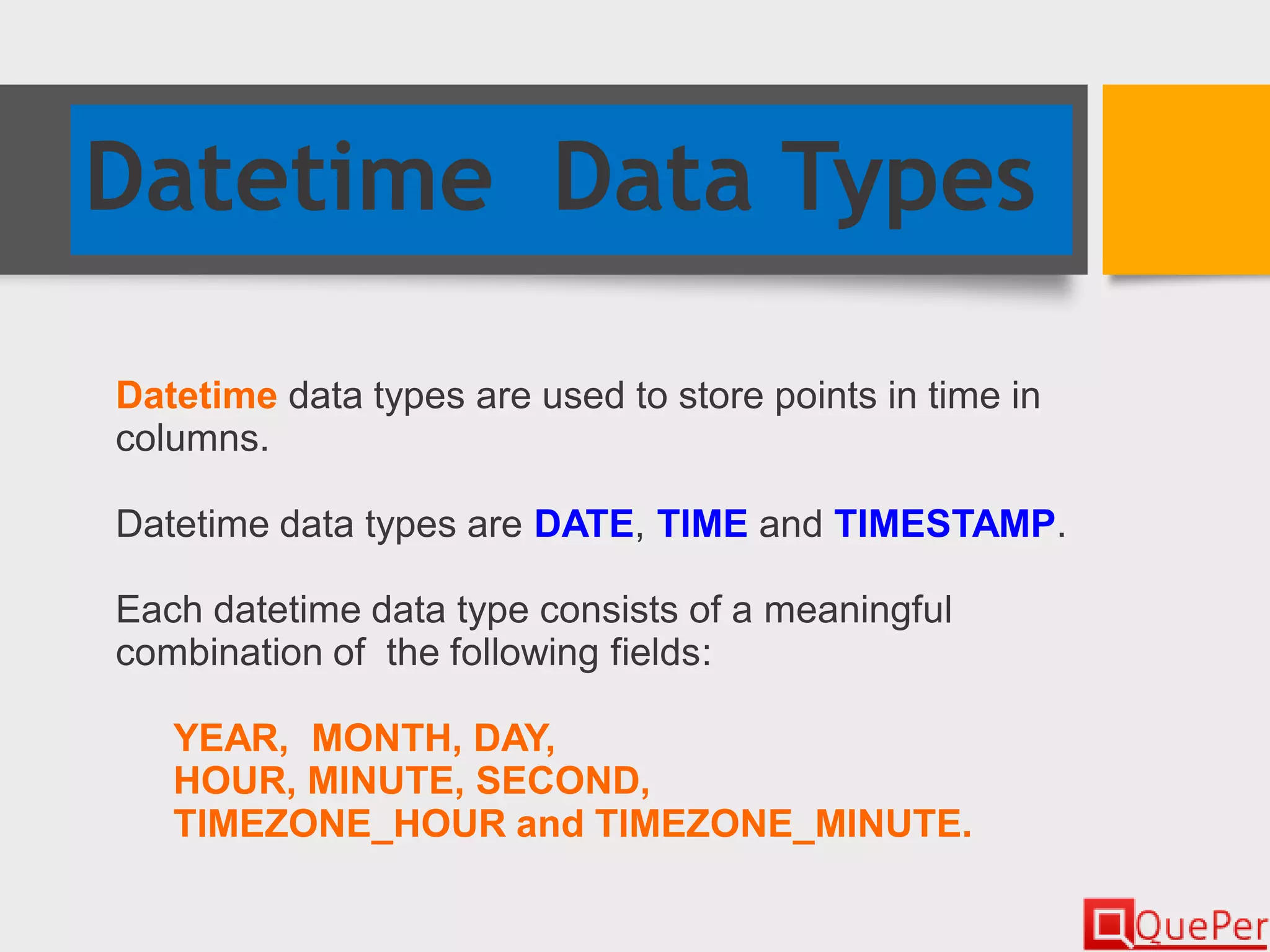
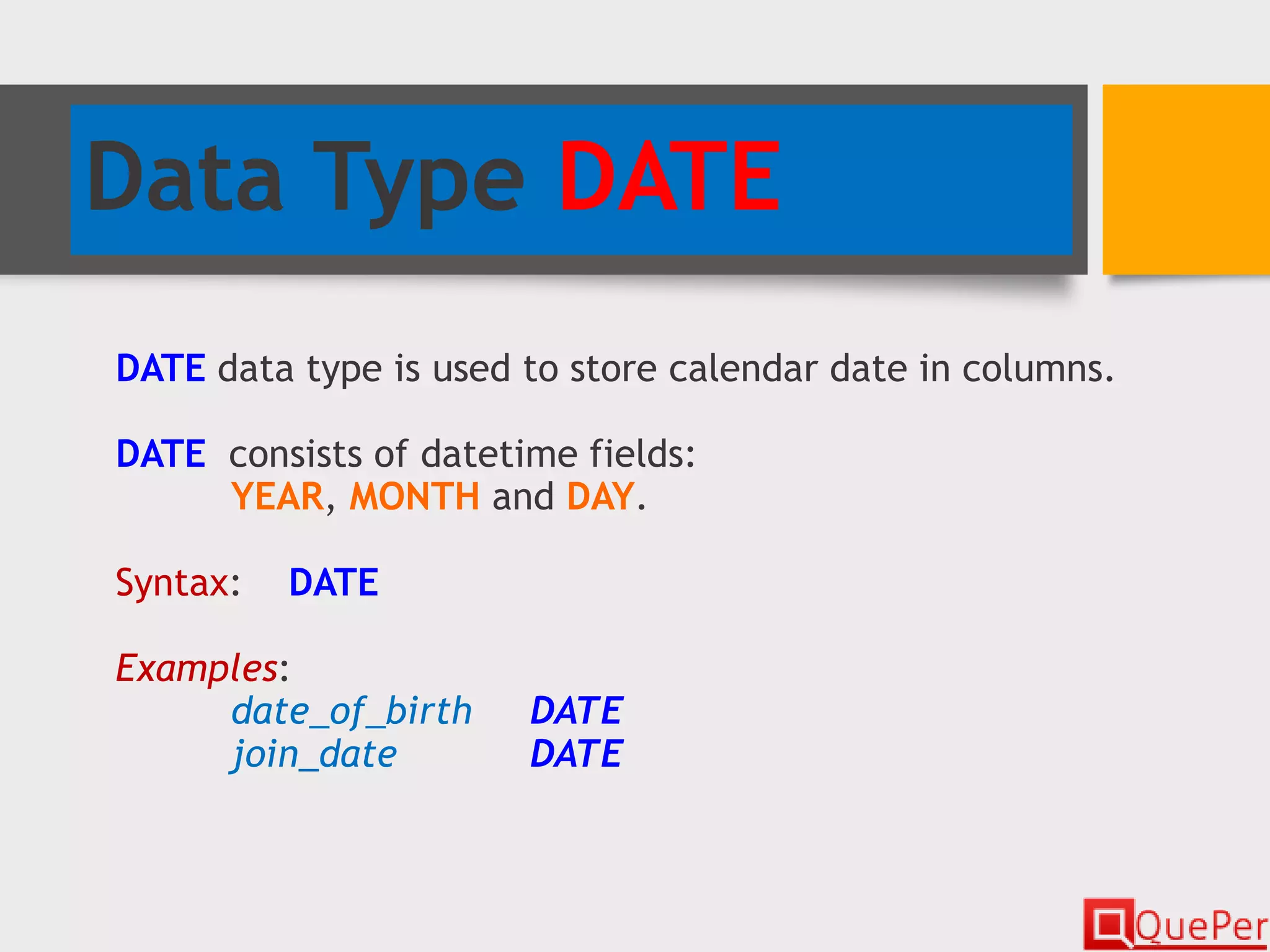
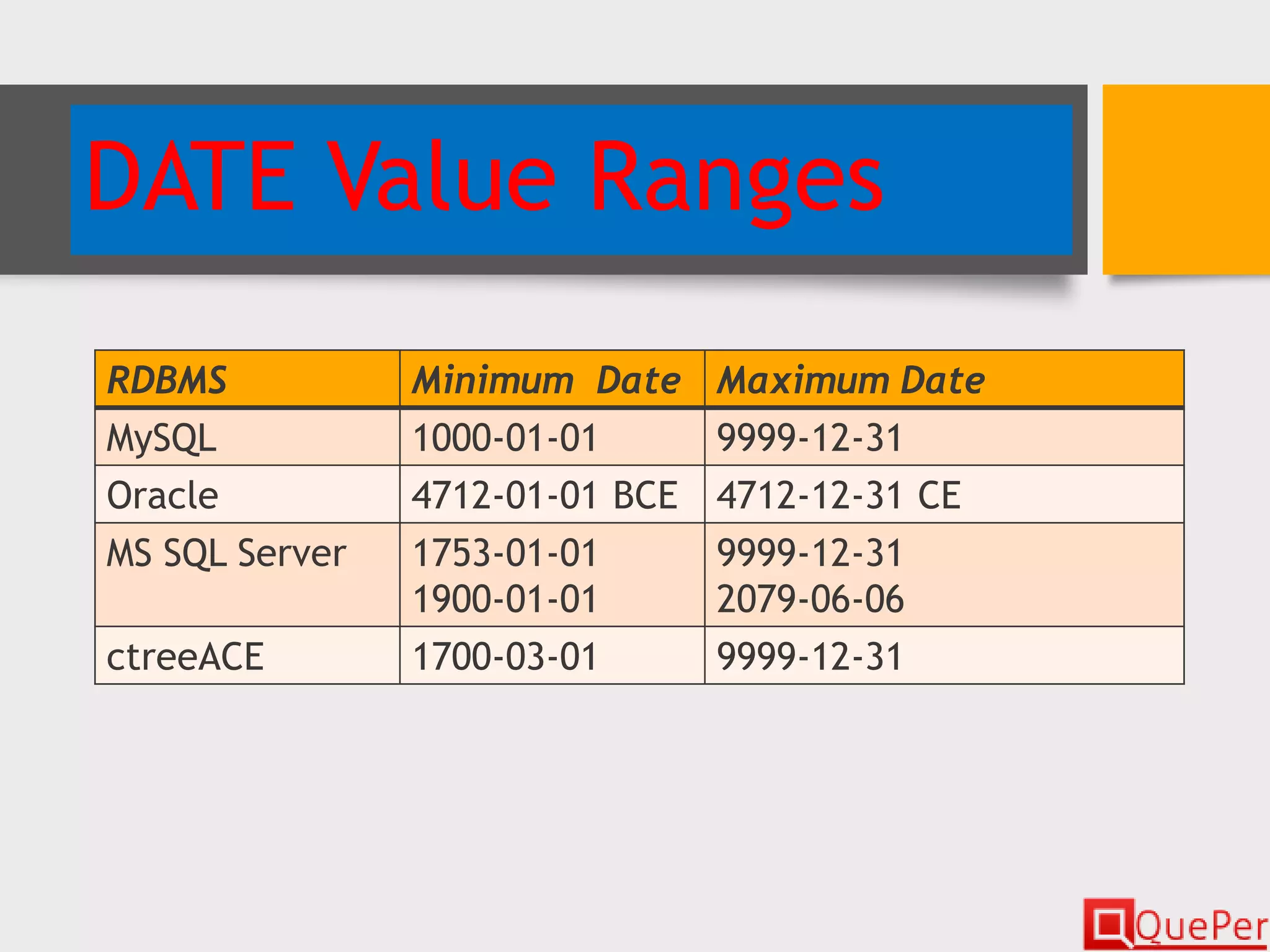
![Data Type TIME TIME data type is used to store time of a day in columns. TIME consists of datetime fields: HOUR, MINUTE and SECOND and fields TIMEZONE_HOUR and TIMEZONE_MINUTE if WITH TIIMEZONE option is used. Syntax: TIME [(precision)] [WITH TIMEZONE] precision: This indicates precision required in seconds value. Default is 0 which means whole seconds A value 3 means milliseconds and 6 means microseconds Examples: start_time TIME event_time TIME(6)](https://image.slidesharecdn.com/dbsys-p01-c03-s01-04-sql-intro-160414113426/75/Database-Systems-Introduction-to-SQL-Chapter-3-1-73-2048.jpg)
![Data Type TIMESTAMP TIMESTAMP data type is used to store date and time of a day in columns. TIMESTAMP consists of datetime fields: YEAR, MONTH, DAY, HOUR, MINUTE and SECOND and fields TIMEZONE_HOUR and TIMEZONE_MINUTE if WITH TIMEZONE option is used. Syntax: TIMESTAMP [(precision)] )] [WITH TIMEZONE] precision: This indicates precision required in seconds value. Default is 6 which means microseconds. A value 3 means millisecond . Examples: transaction_ts TIMESTAMP event_ts TIMESTAMP(6)](https://image.slidesharecdn.com/dbsys-p01-c03-s01-04-sql-intro-160414113426/75/Database-Systems-Introduction-to-SQL-Chapter-3-1-74-2048.jpg)
![Data Type CHARACTER LARGE OBJECT (CLOB)) CHARACTER LARGE OBJECT or CLOB data type is used to store large amount of character data. Syntax: { CHARACTER LARGE OBJECT | CHAR LARGE OBJECT | CLOB } [ ( large-object-length ) ] large-object-length: length [ K | M | G ] [ CHARACTERS | OCTETS ] length: Length of column in characters. Examples: part_description CLOB(5M) emp_resume CLOB(10K)](https://image.slidesharecdn.com/dbsys-p01-c03-s01-04-sql-intro-160414113426/75/Database-Systems-Introduction-to-SQL-Chapter-3-1-75-2048.jpg)
![Data Type BINARY LARGE OBJECT (BLOB) BINARY LARGE OBJECT data type is used to store large amount of binary data. Syntax: { BINARY LARGE OBJECT | BLOB } [ ( large-object-length ) ] large-object-length: length [ K | M | G ] Examples: part_image BLOB(2M) emp_photograph BLOB(150K)](https://image.slidesharecdn.com/dbsys-p01-c03-s01-04-sql-intro-160414113426/75/Database-Systems-Introduction-to-SQL-Chapter-3-1-76-2048.jpg)
